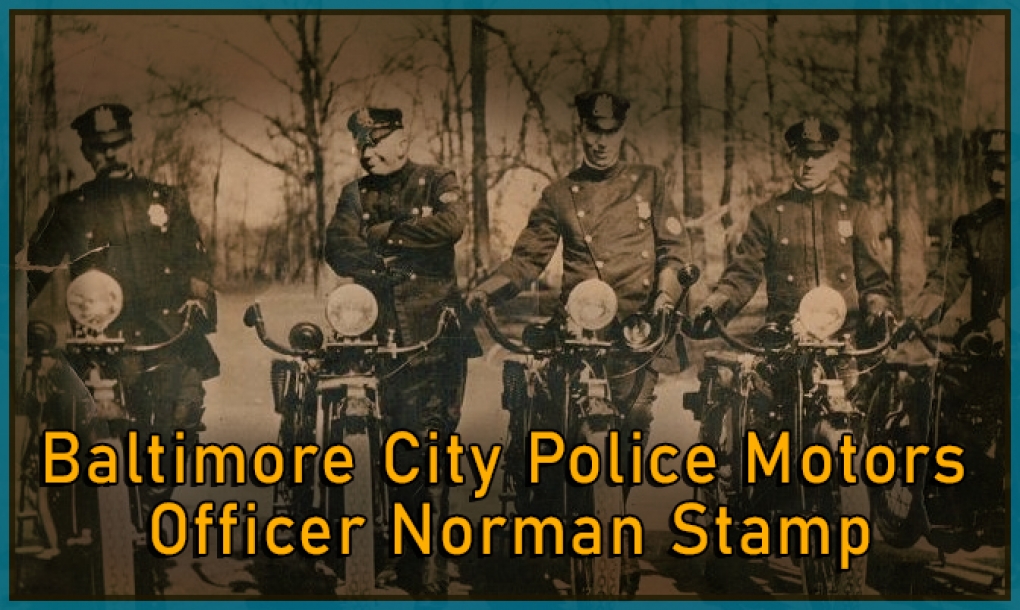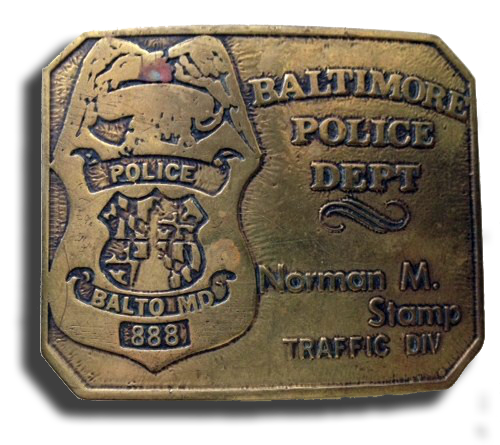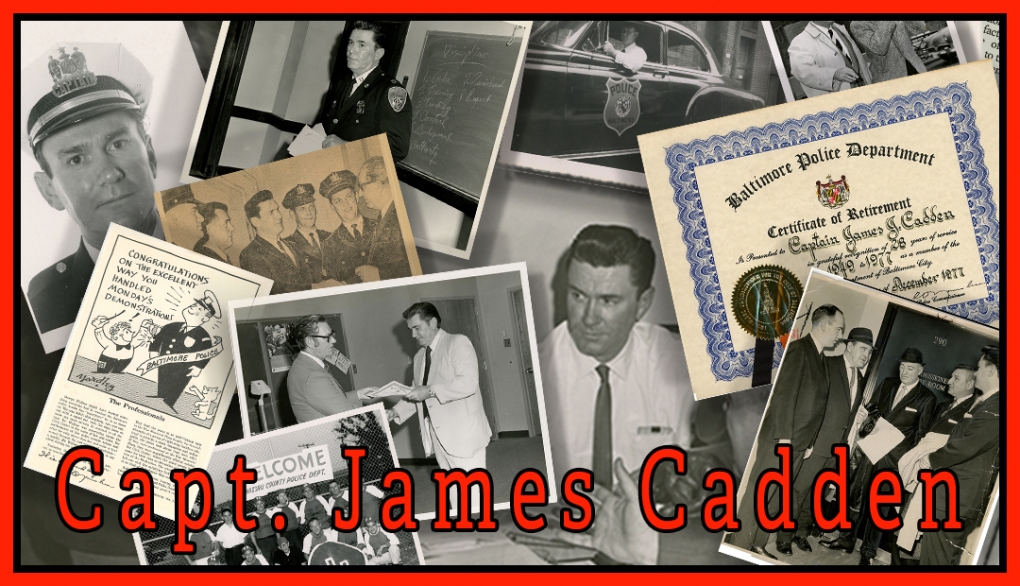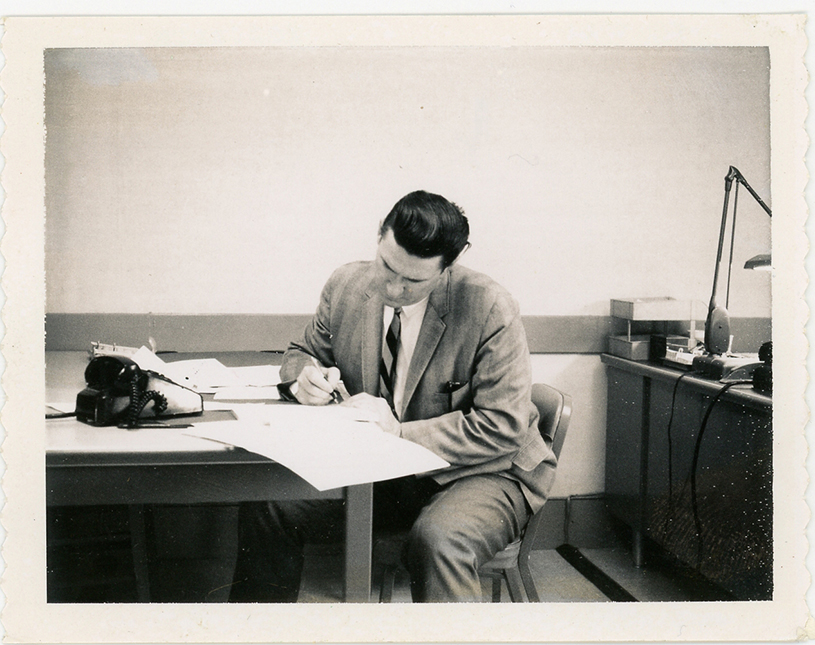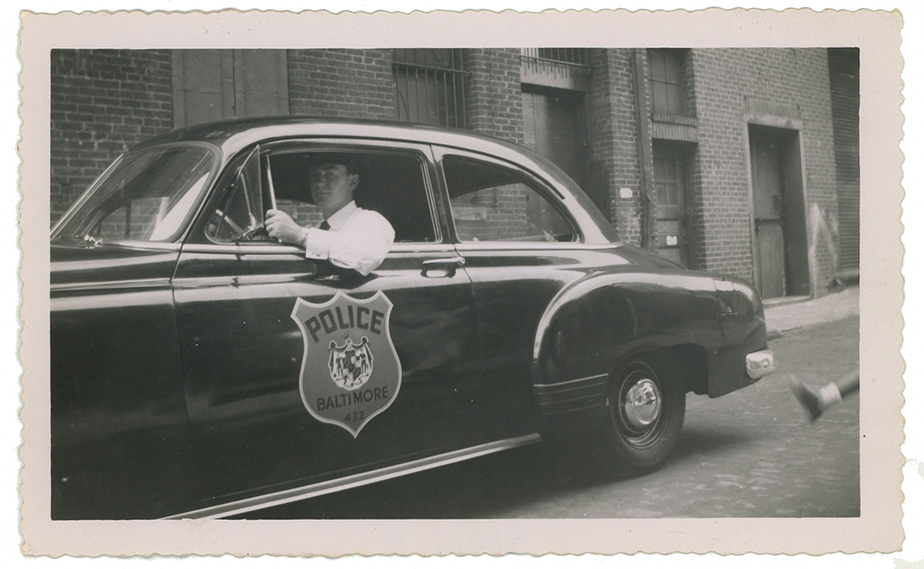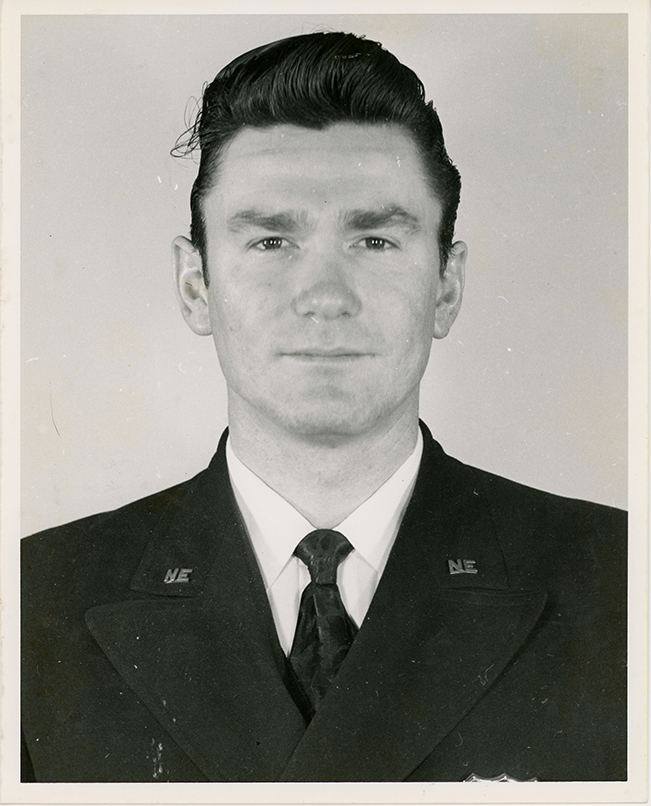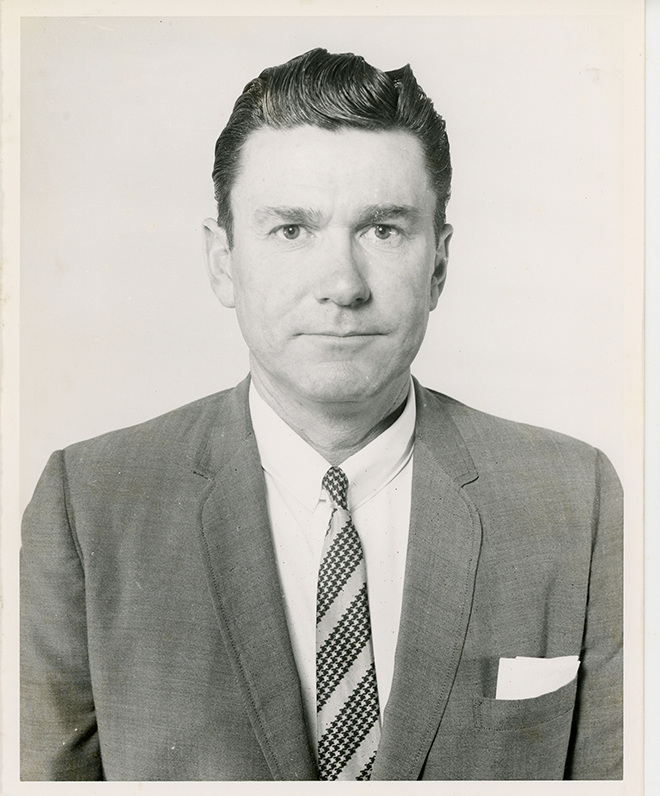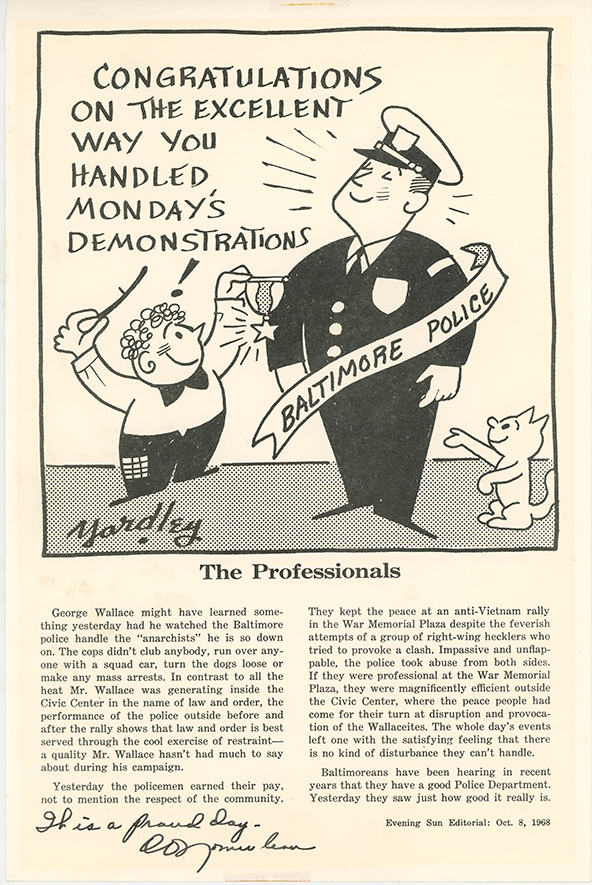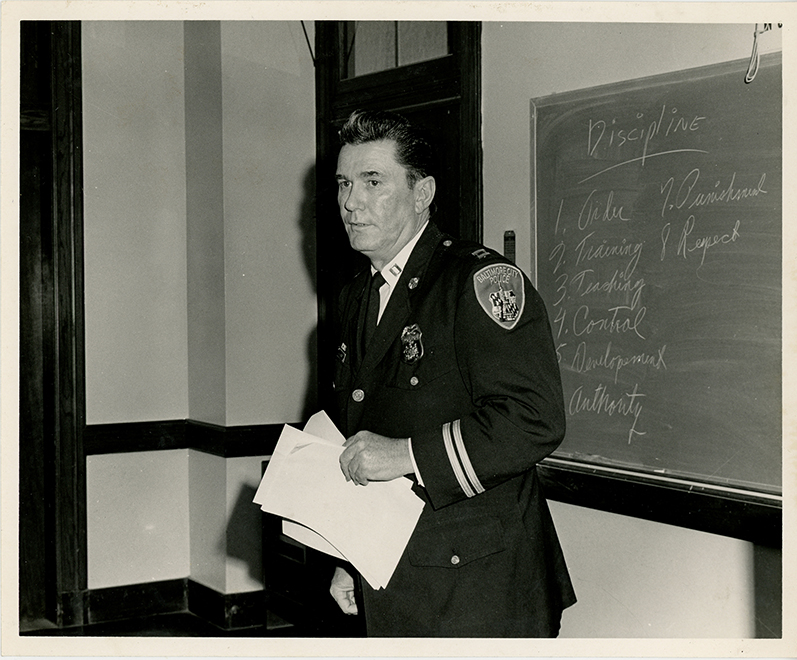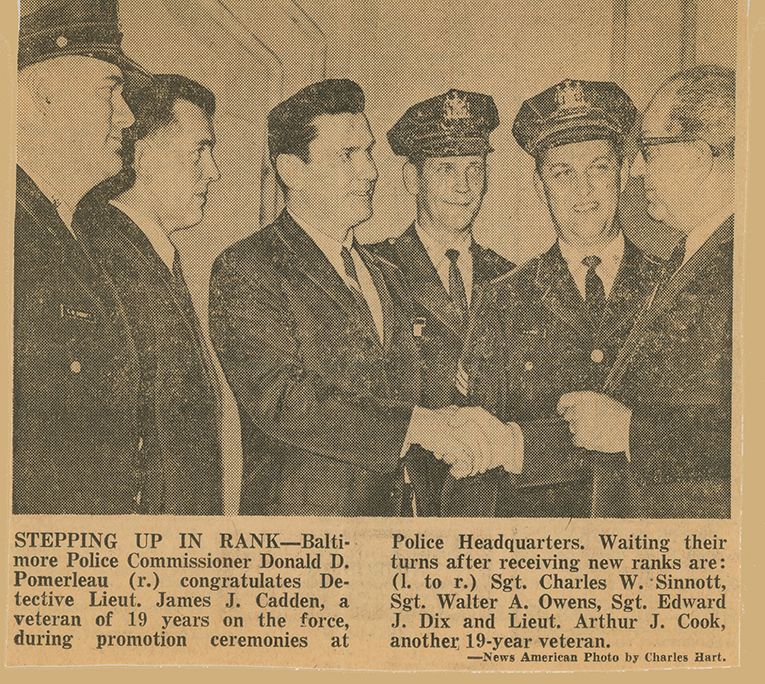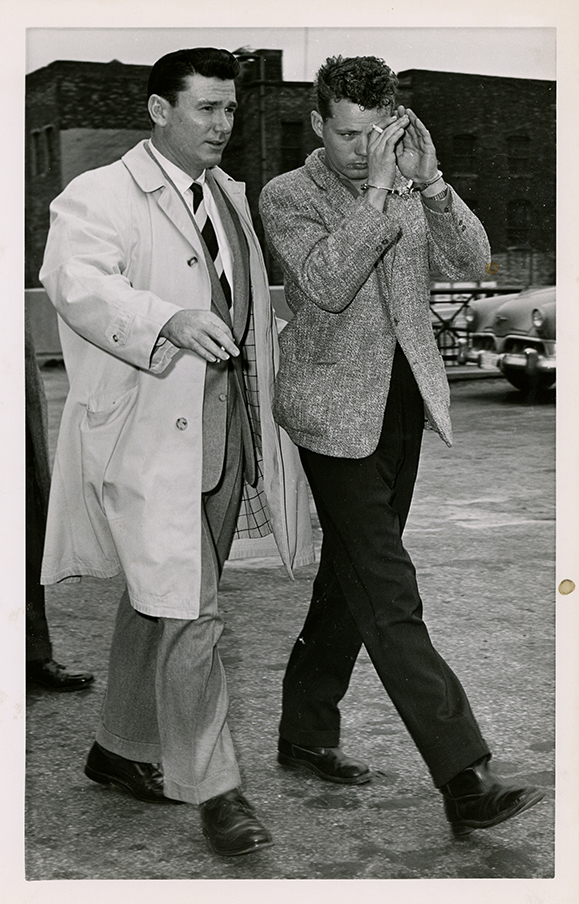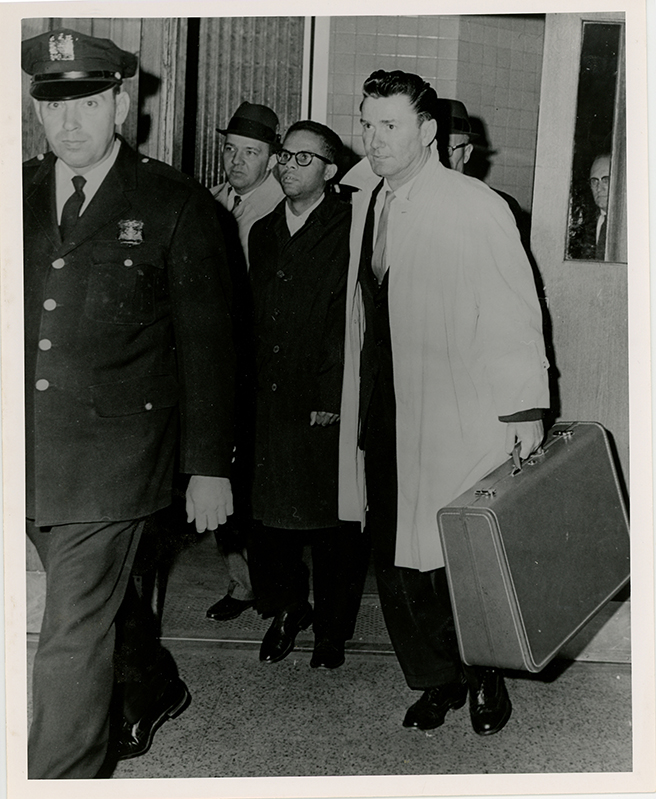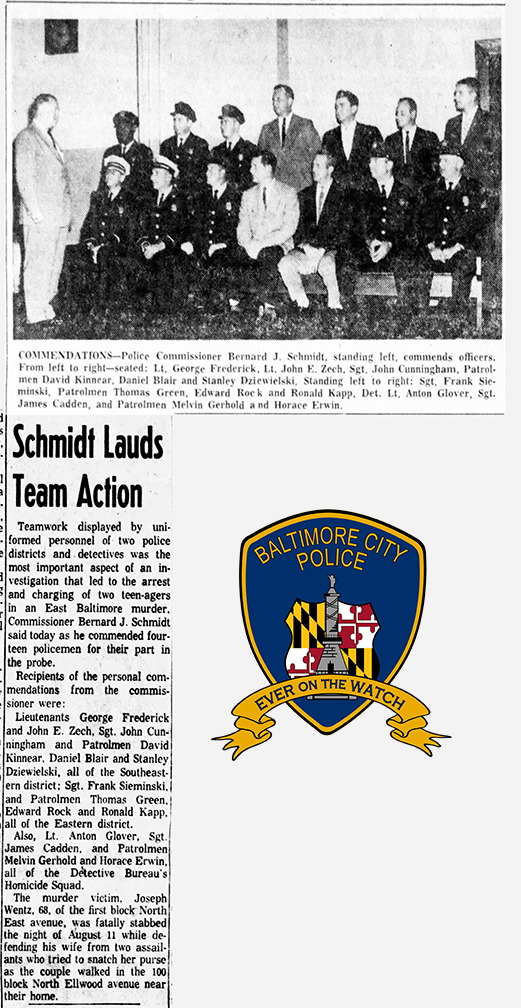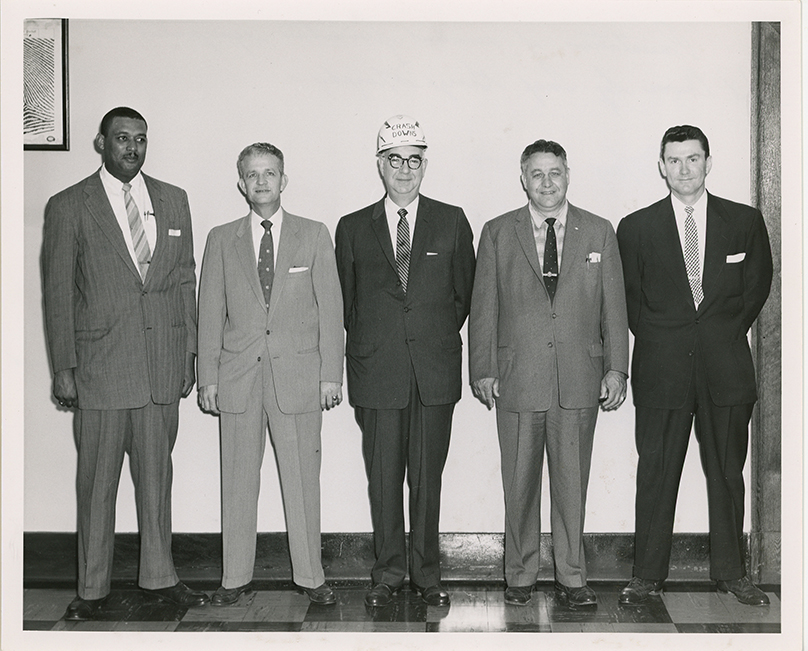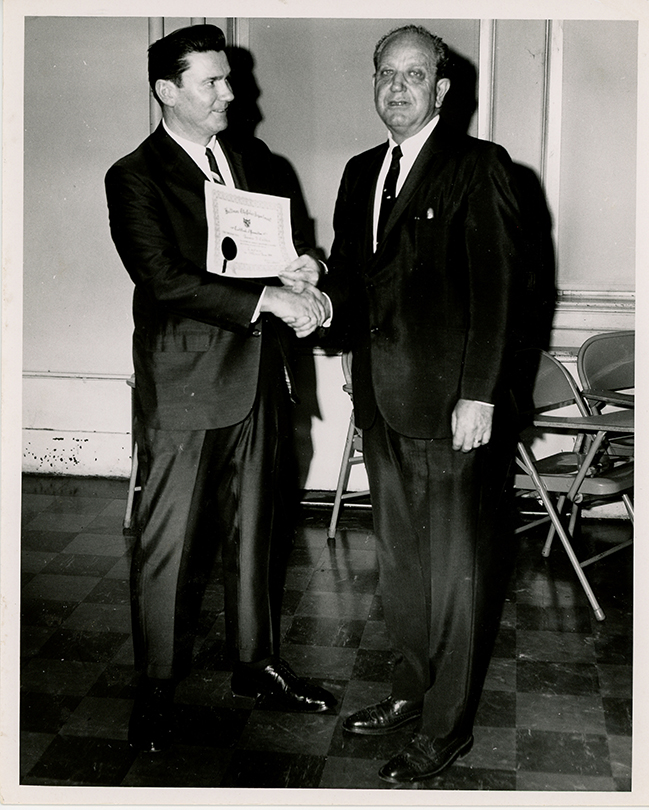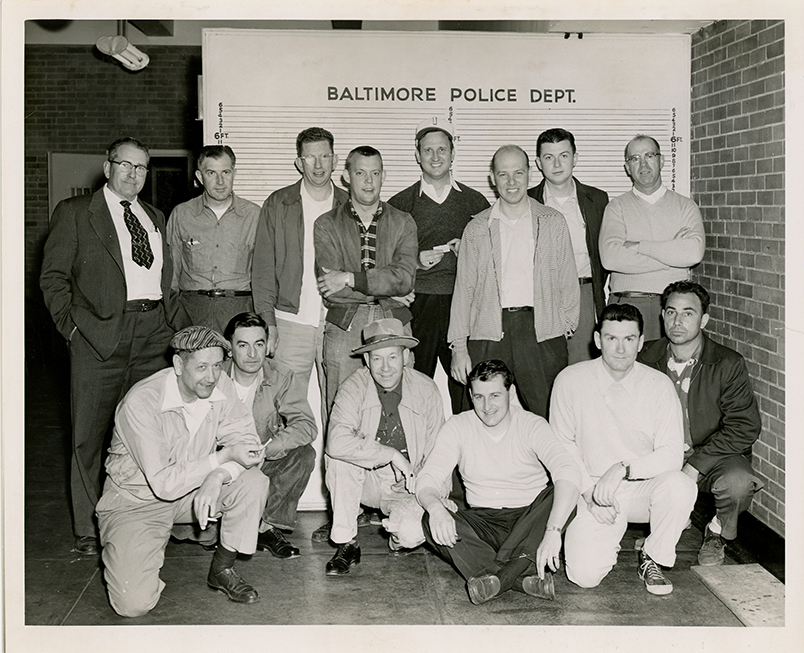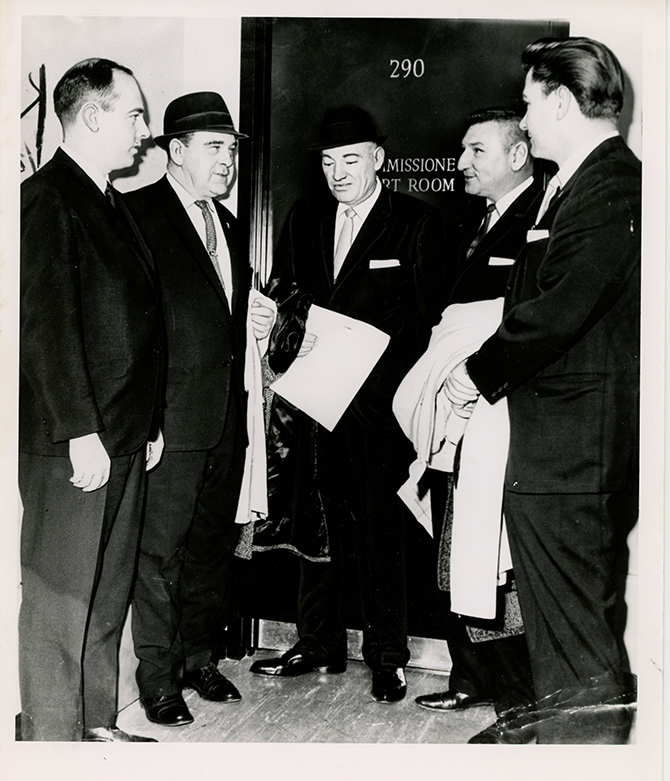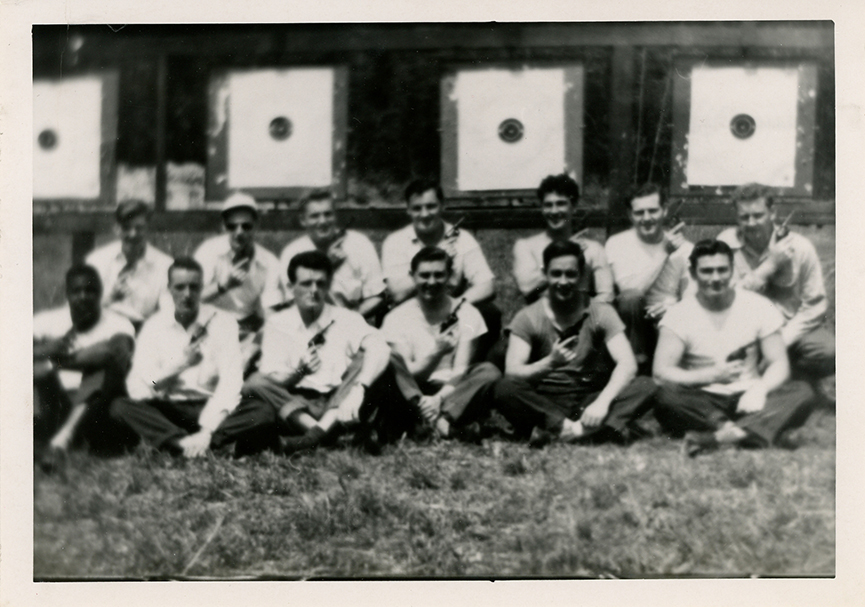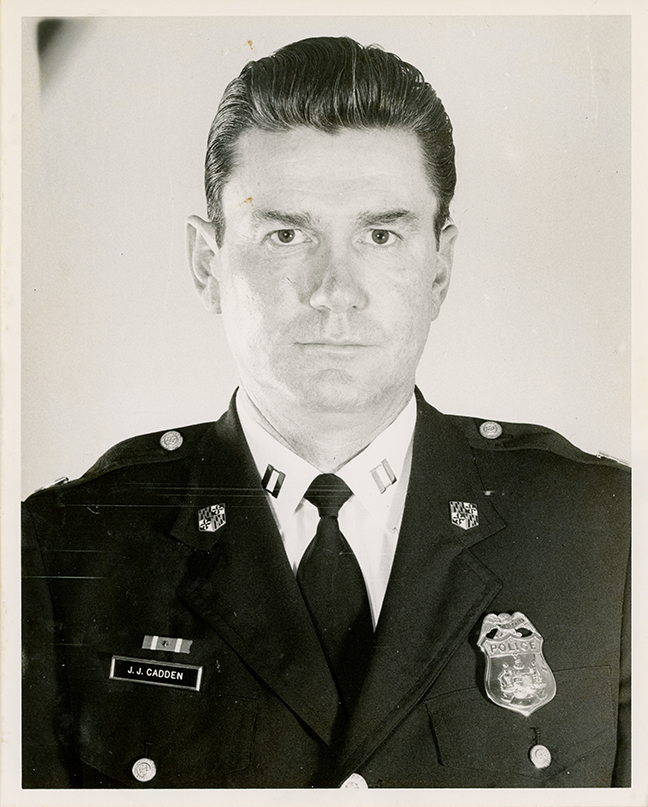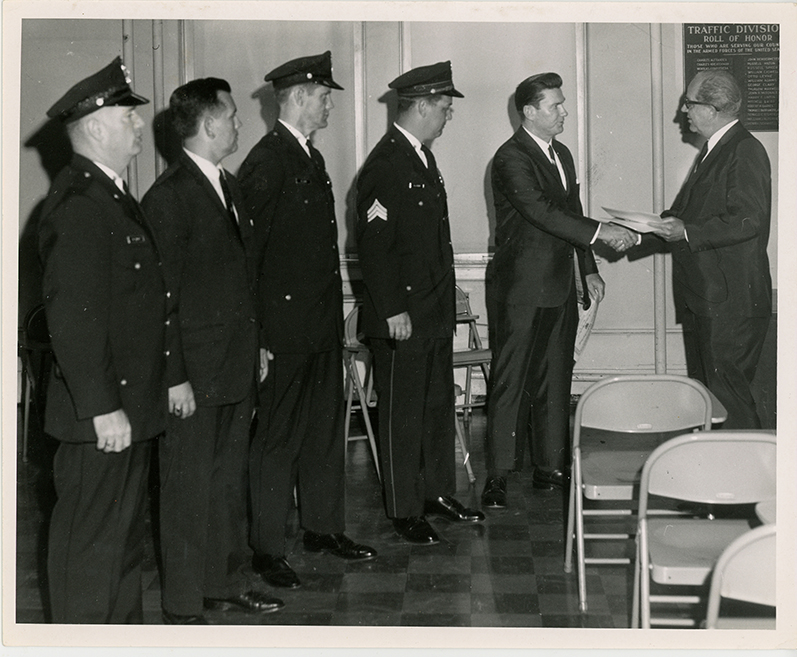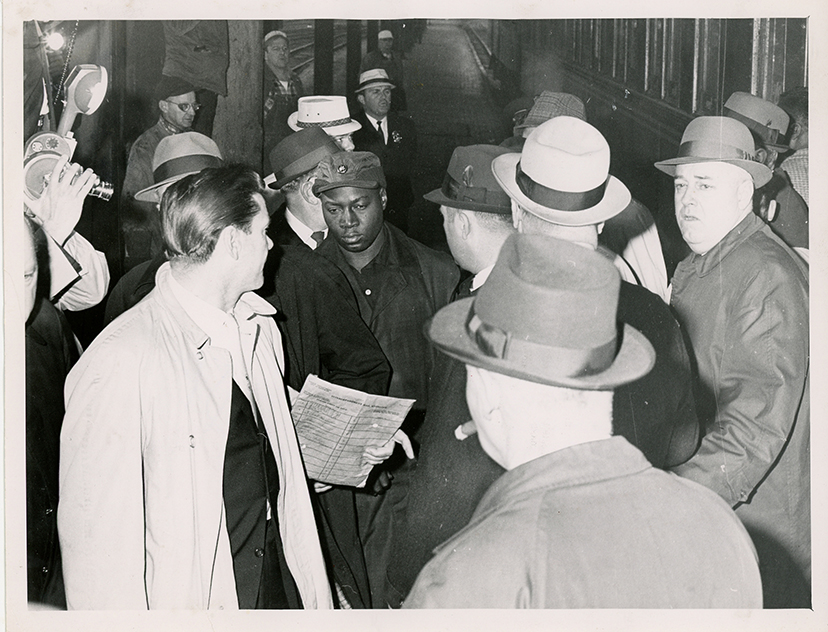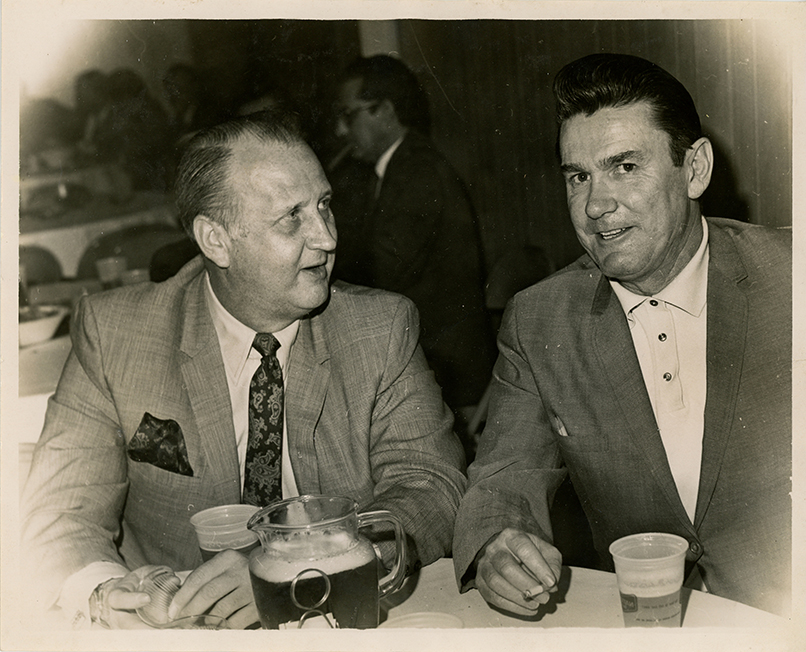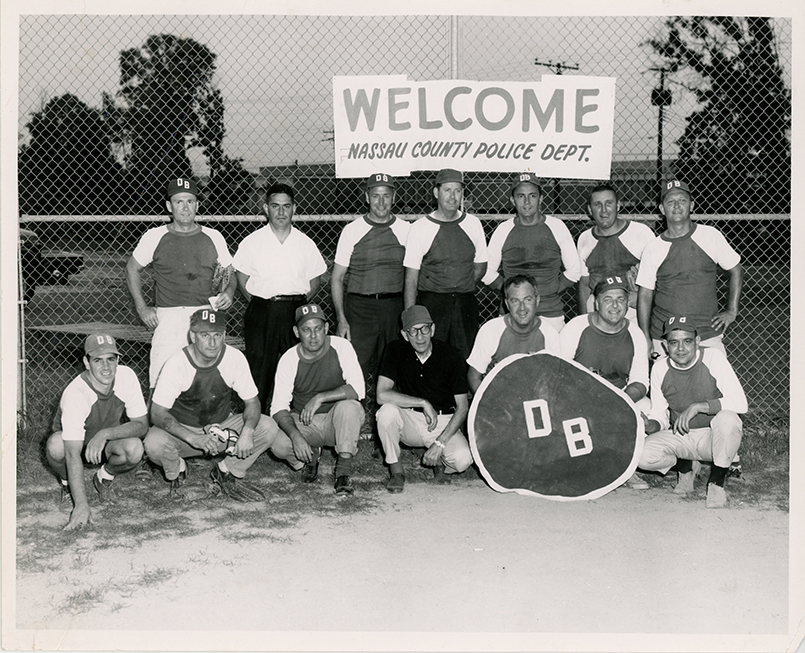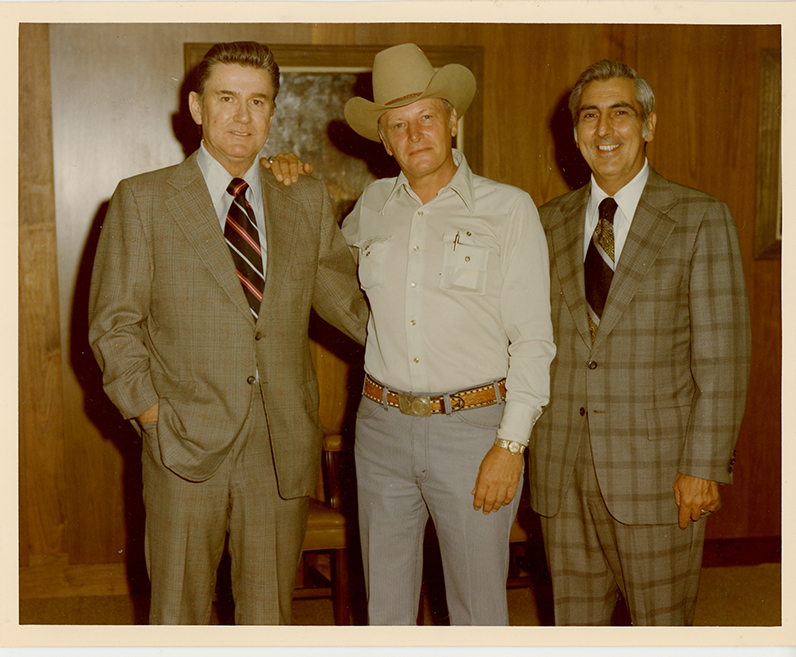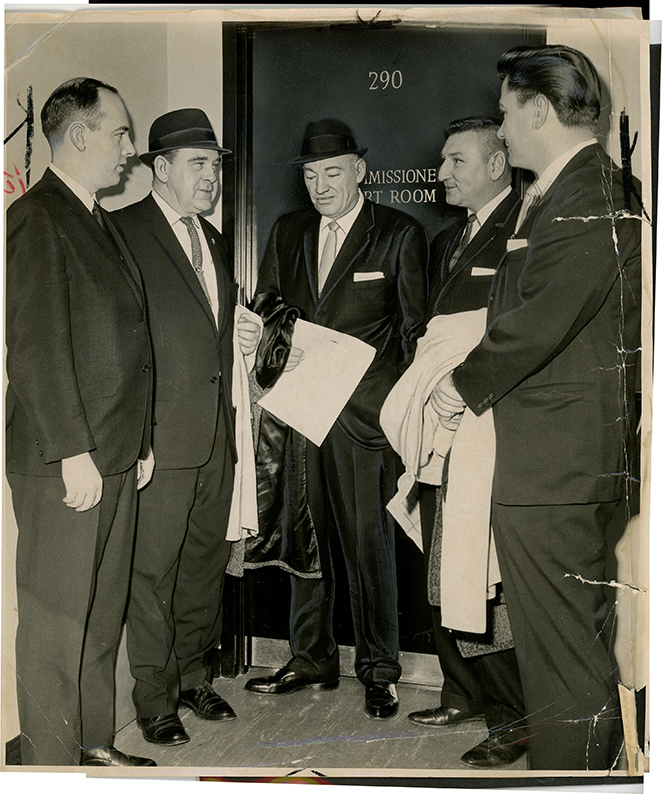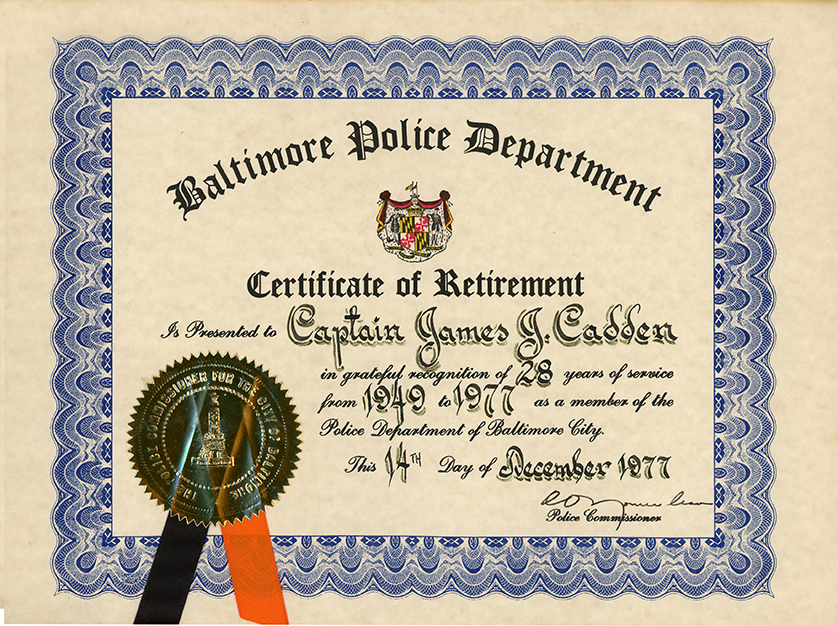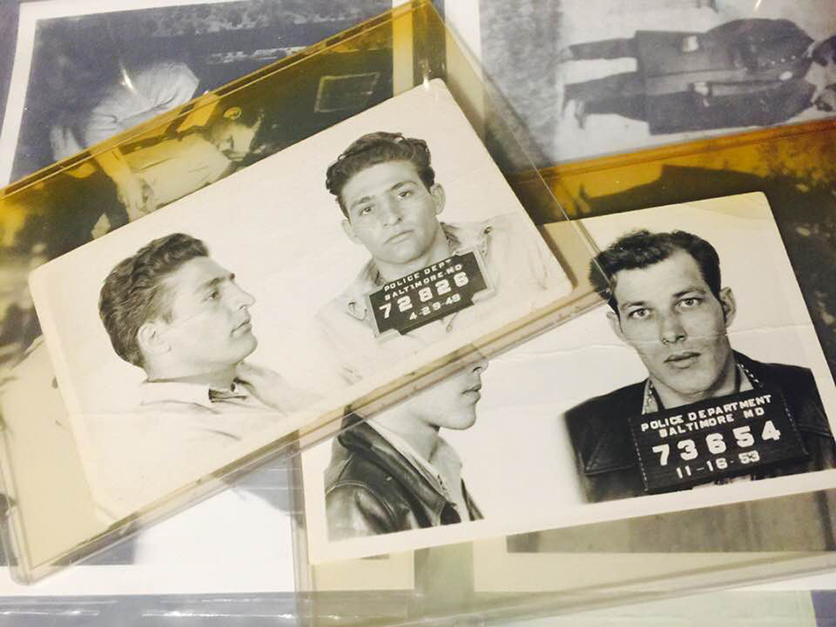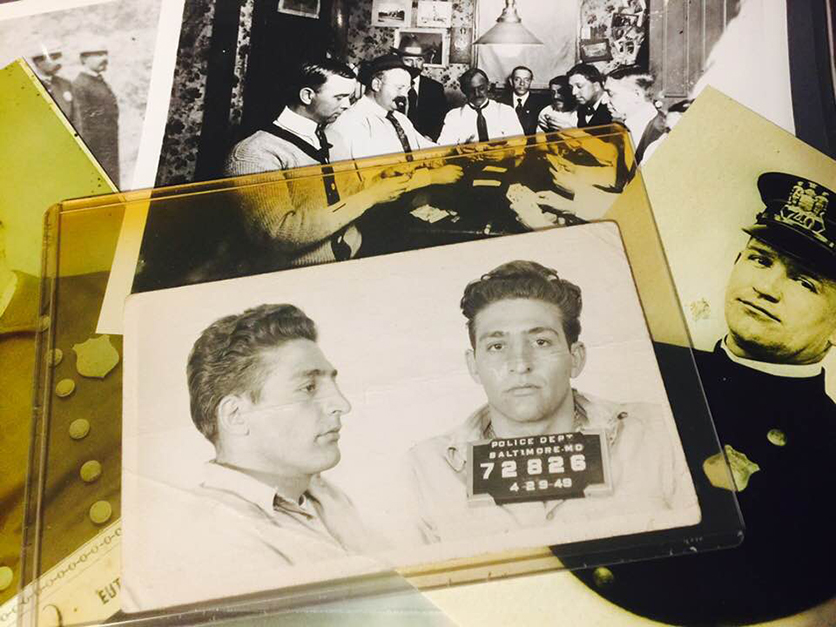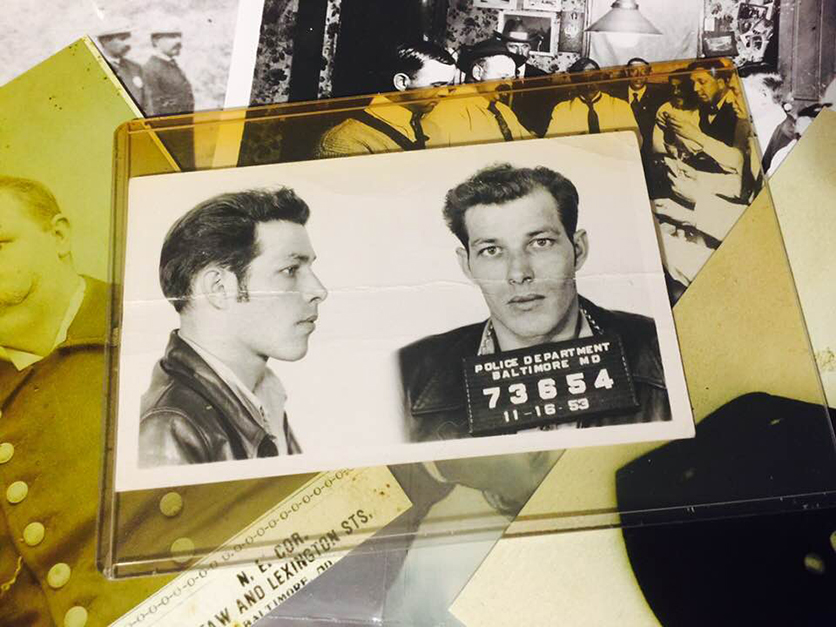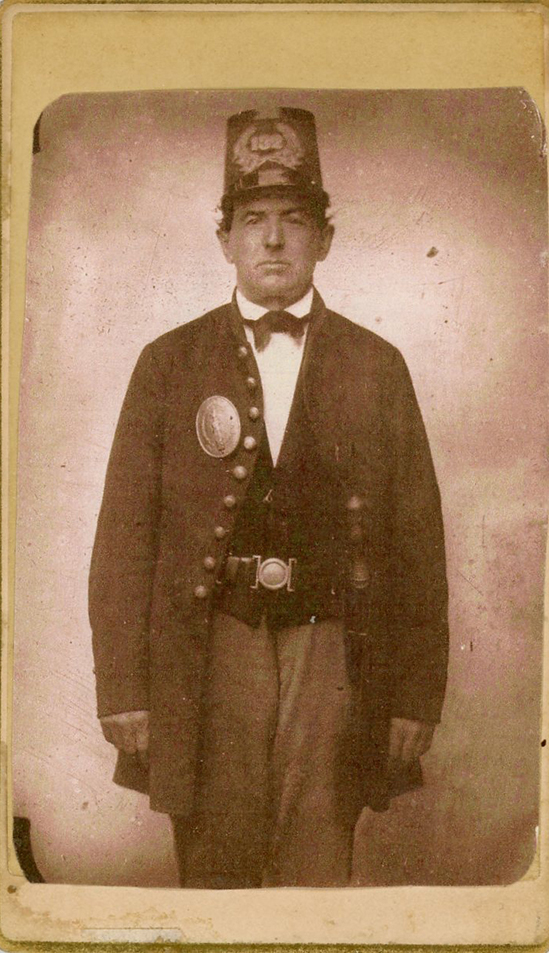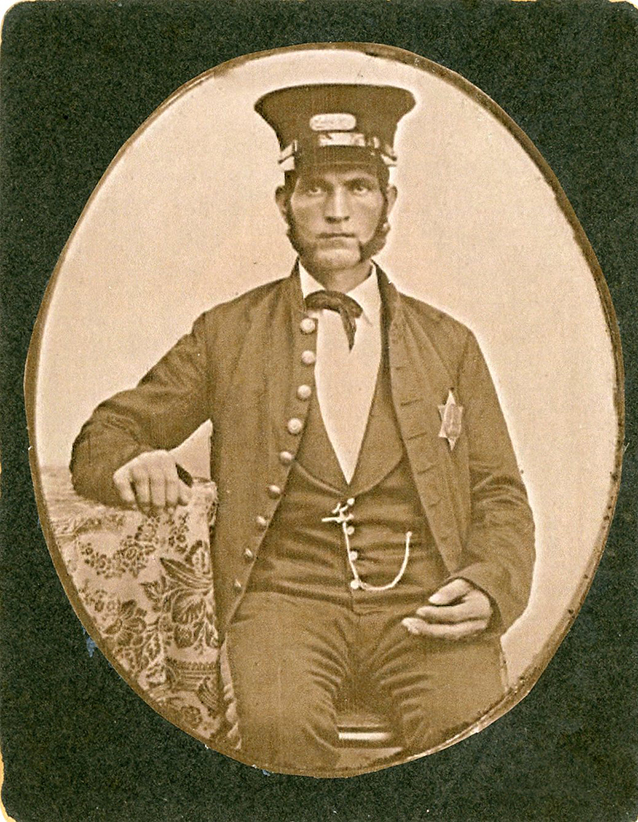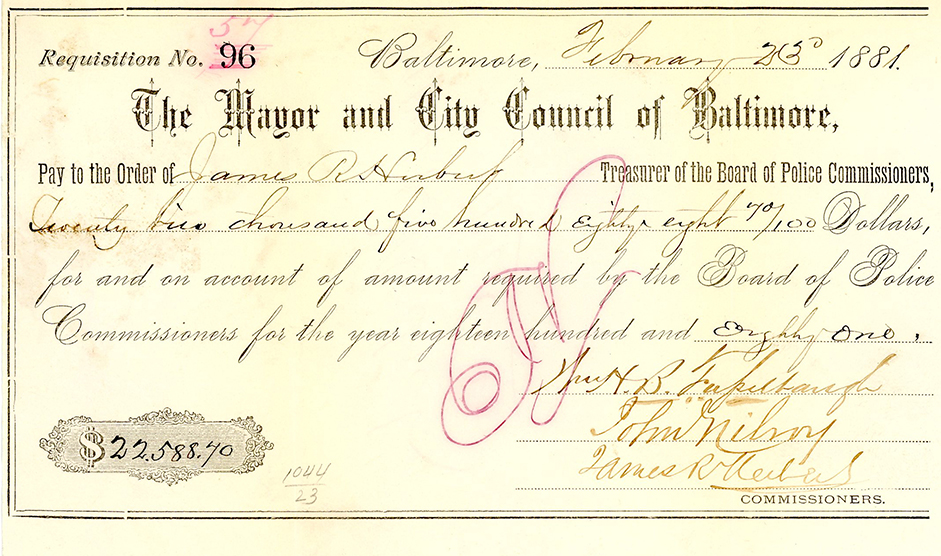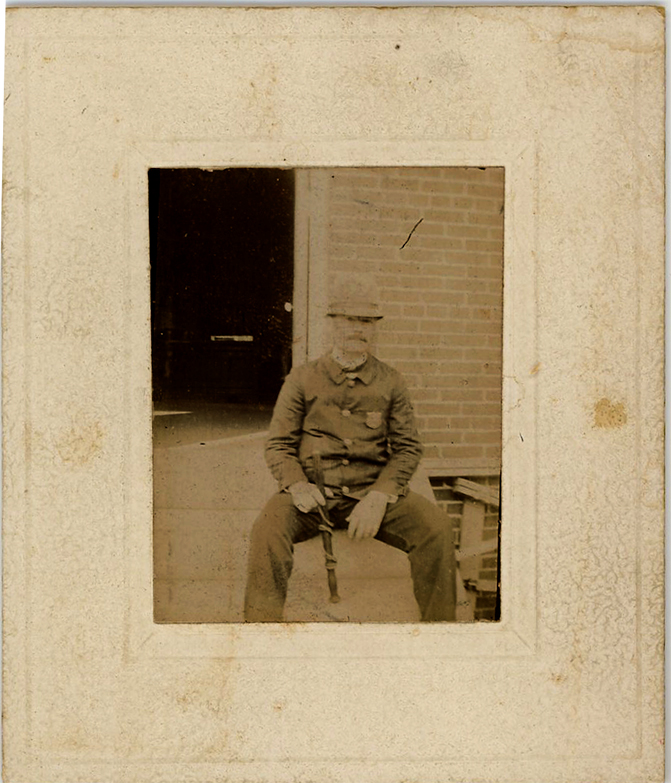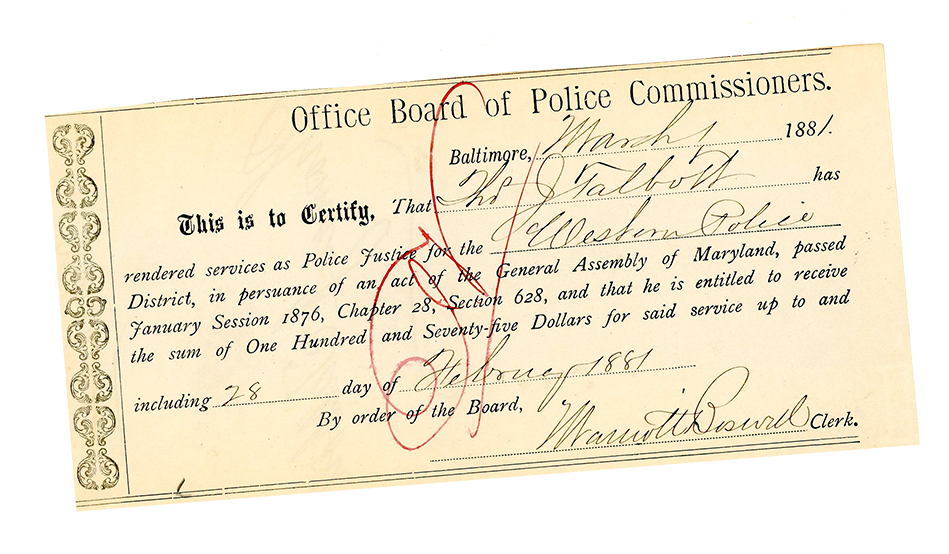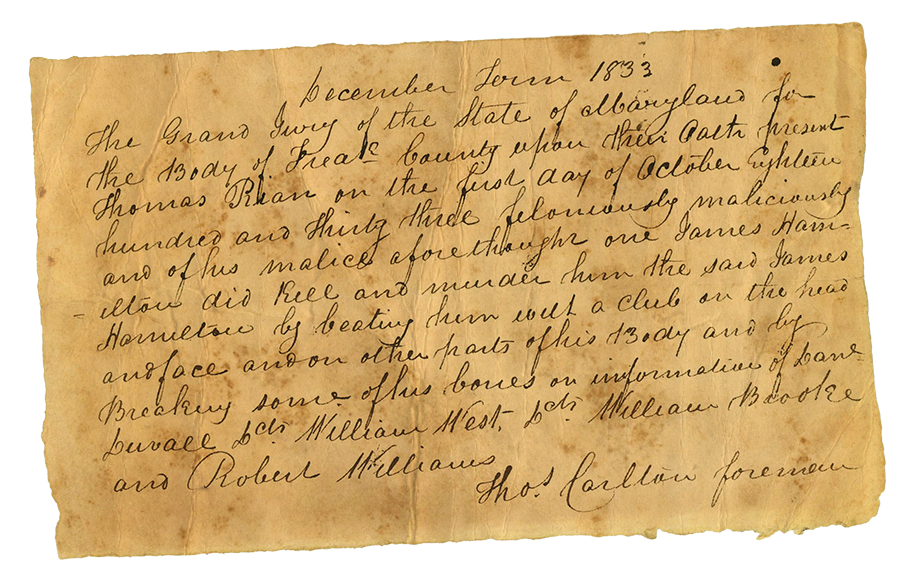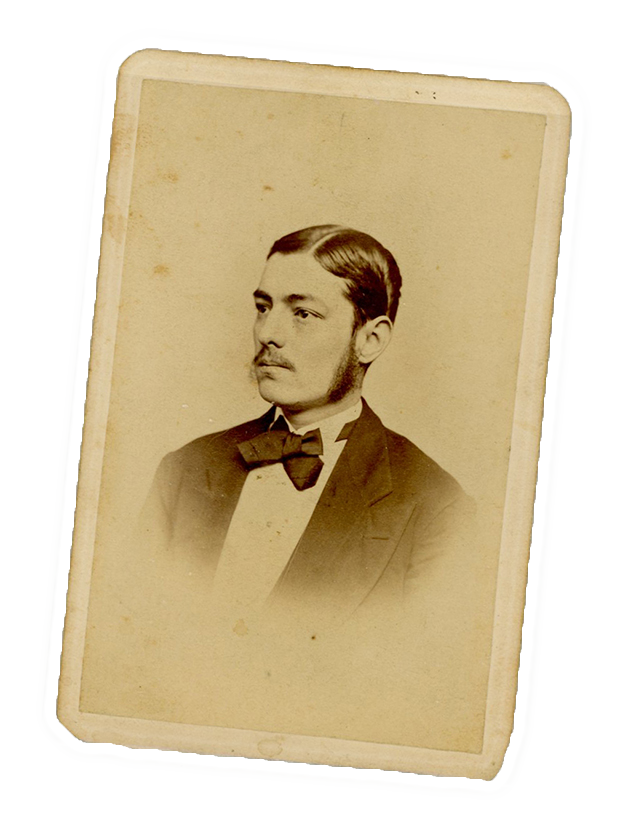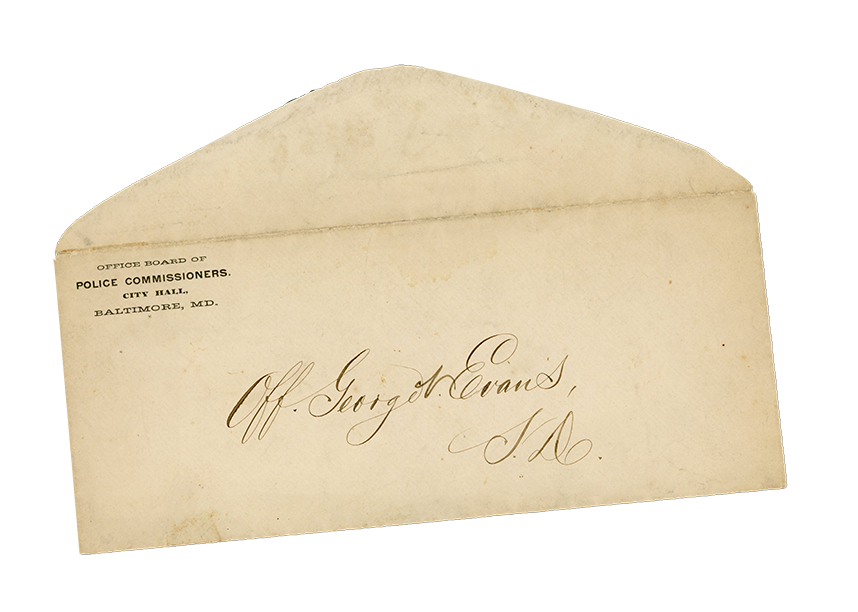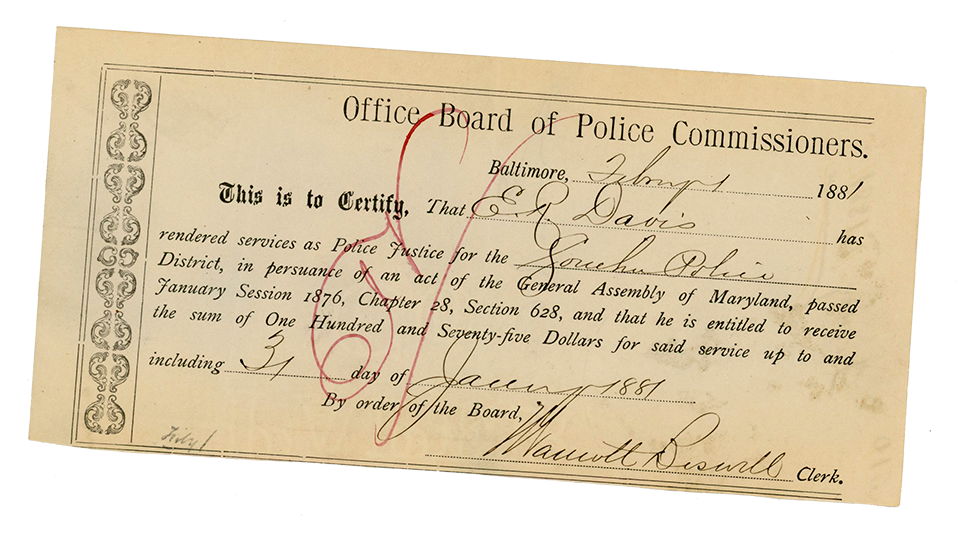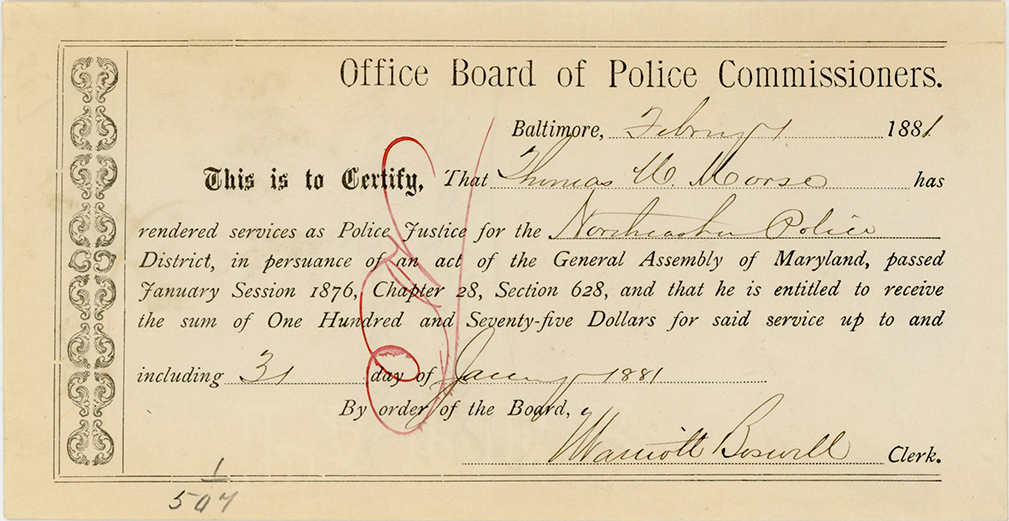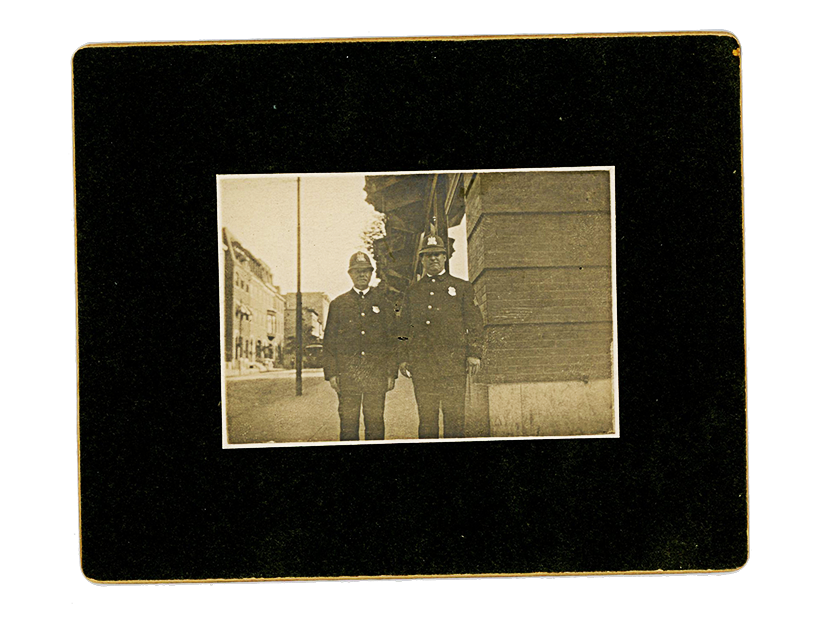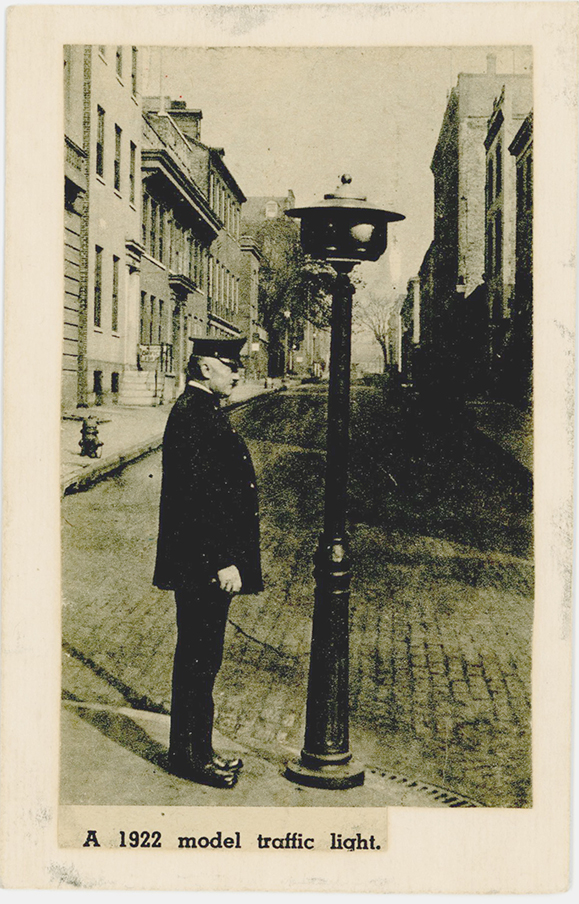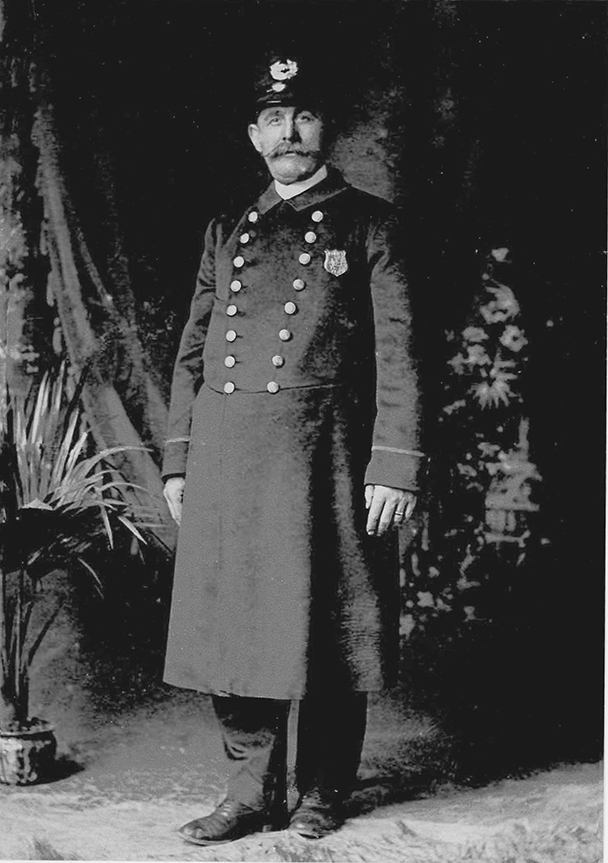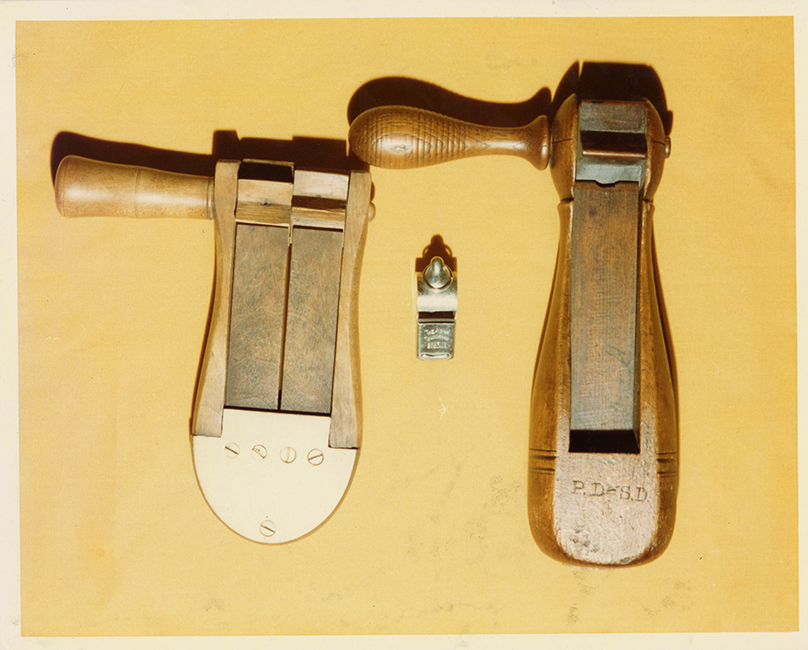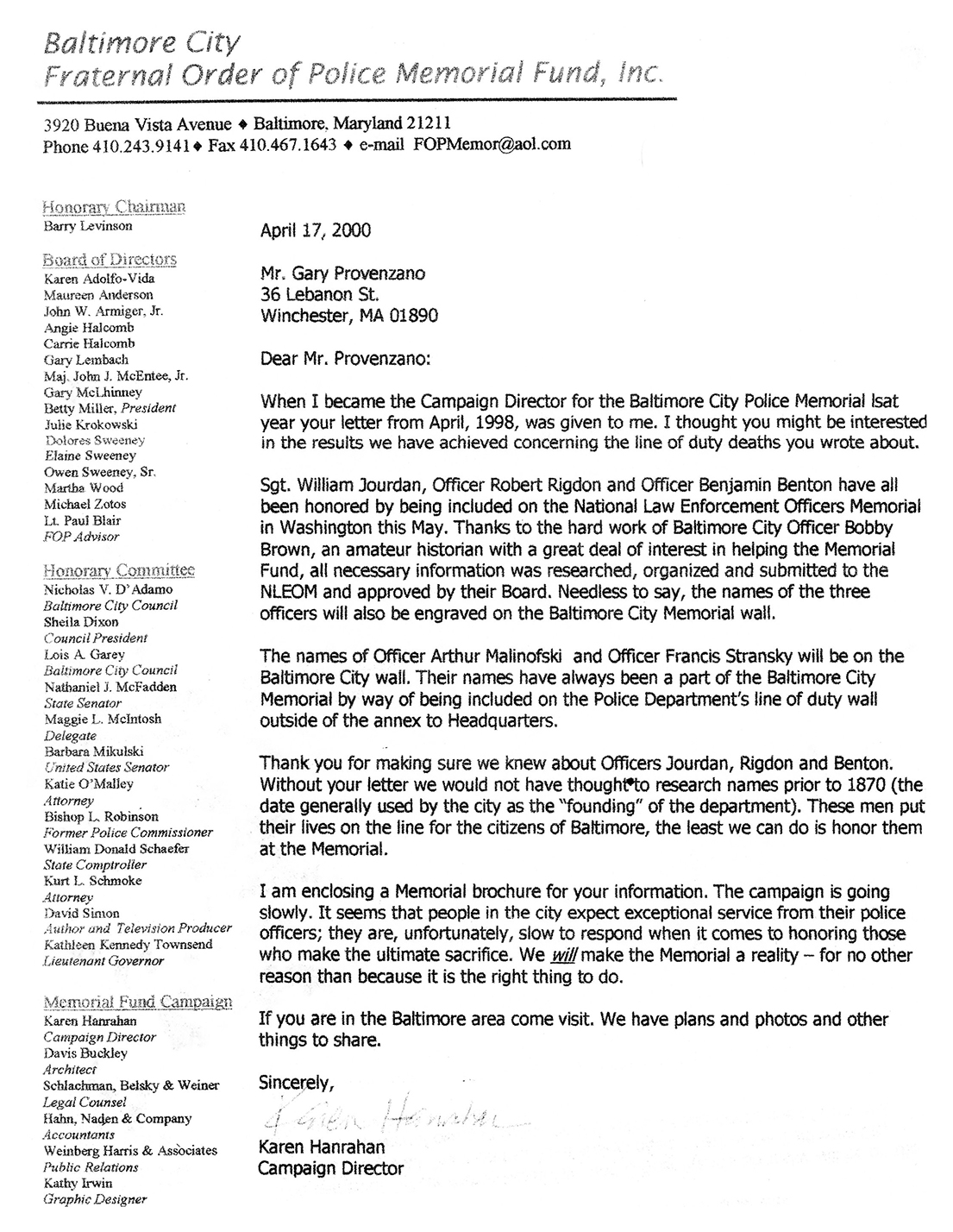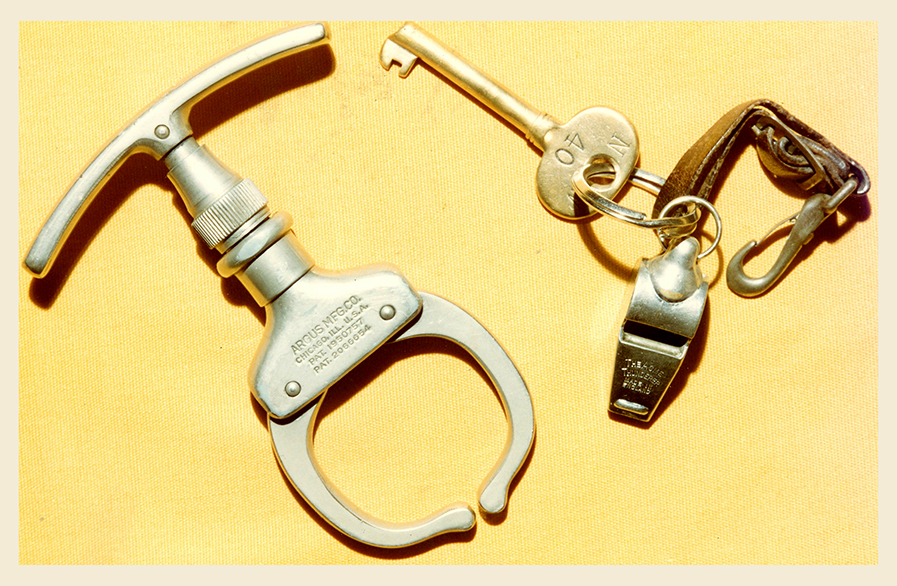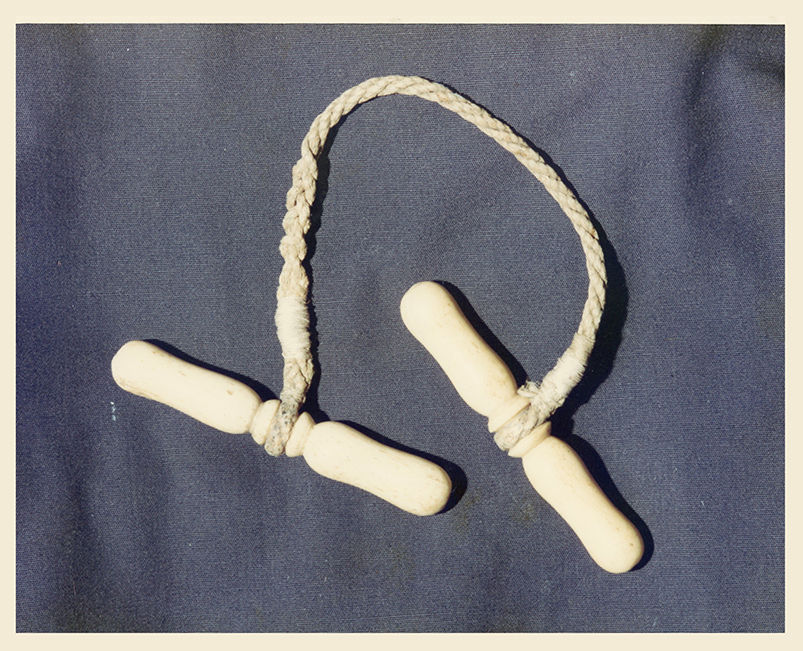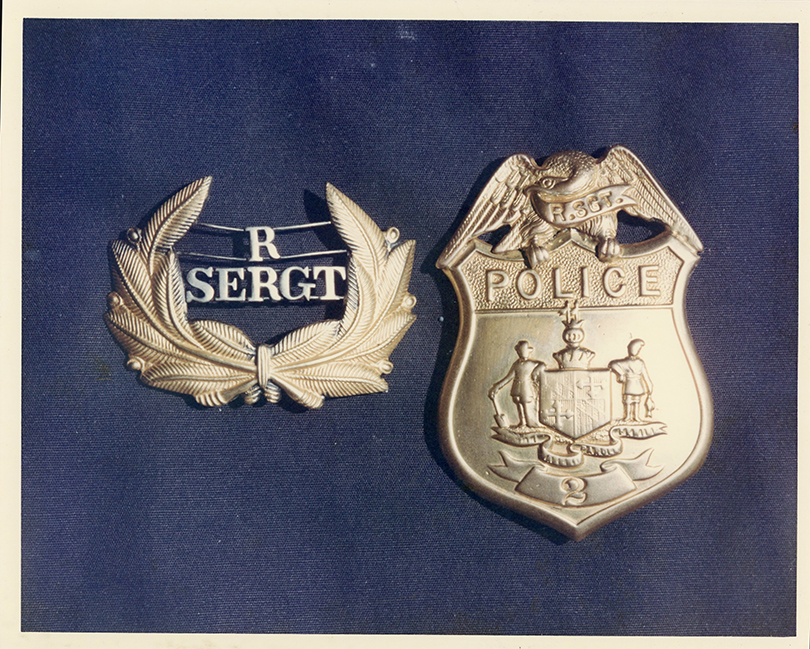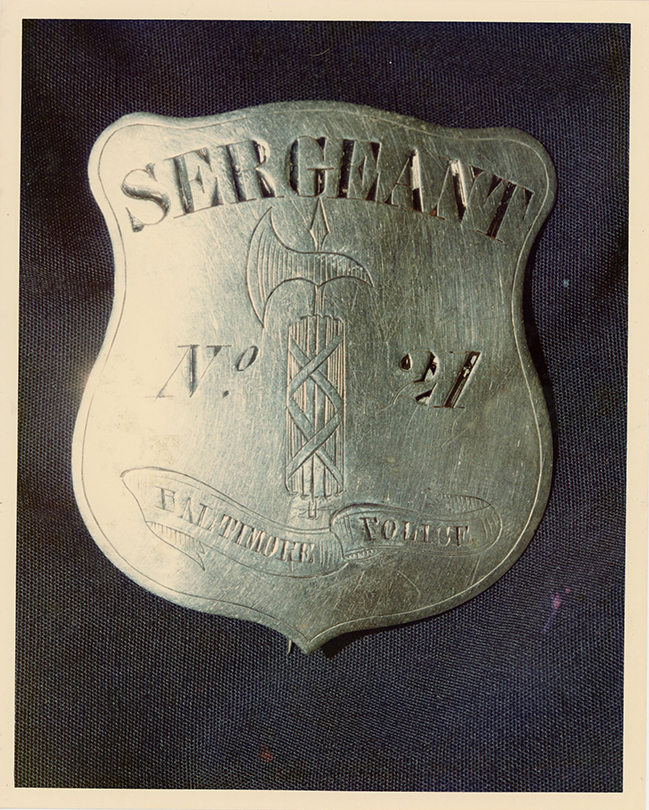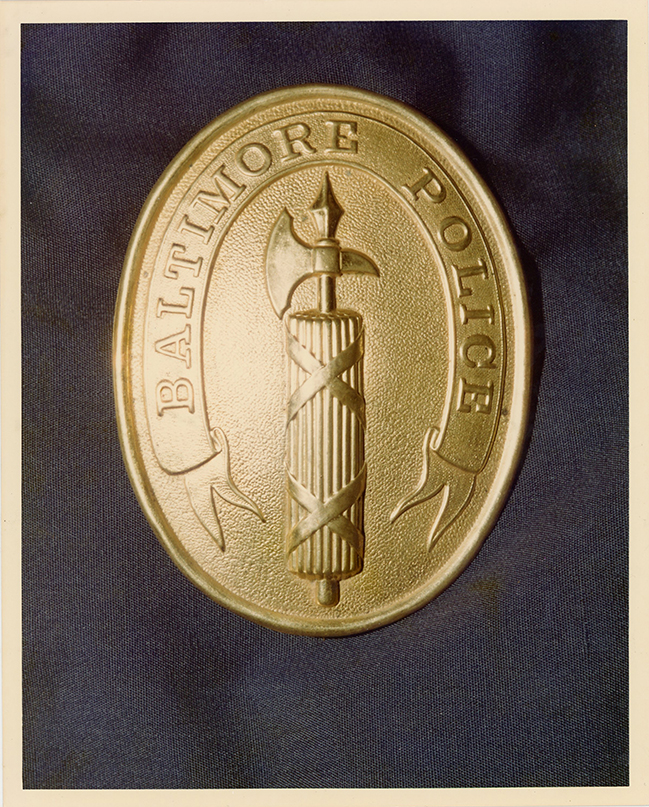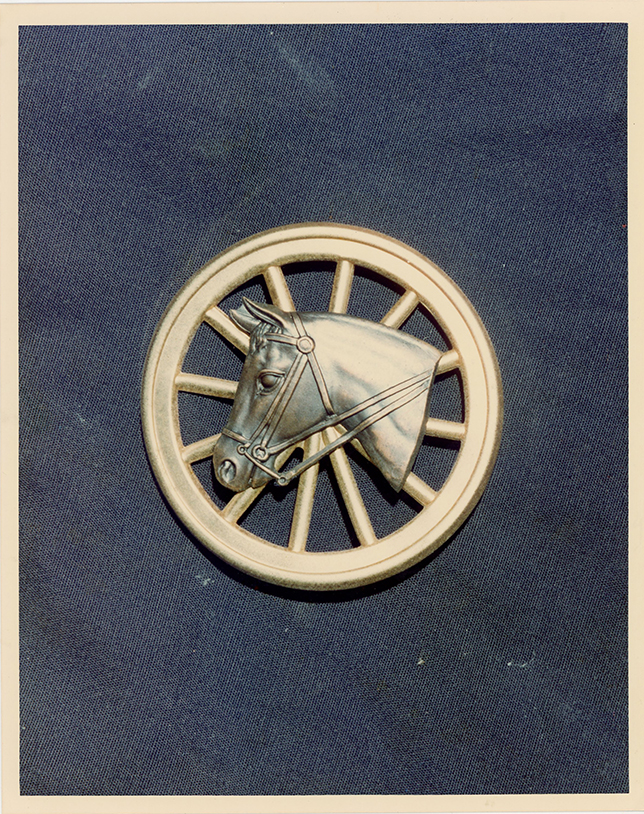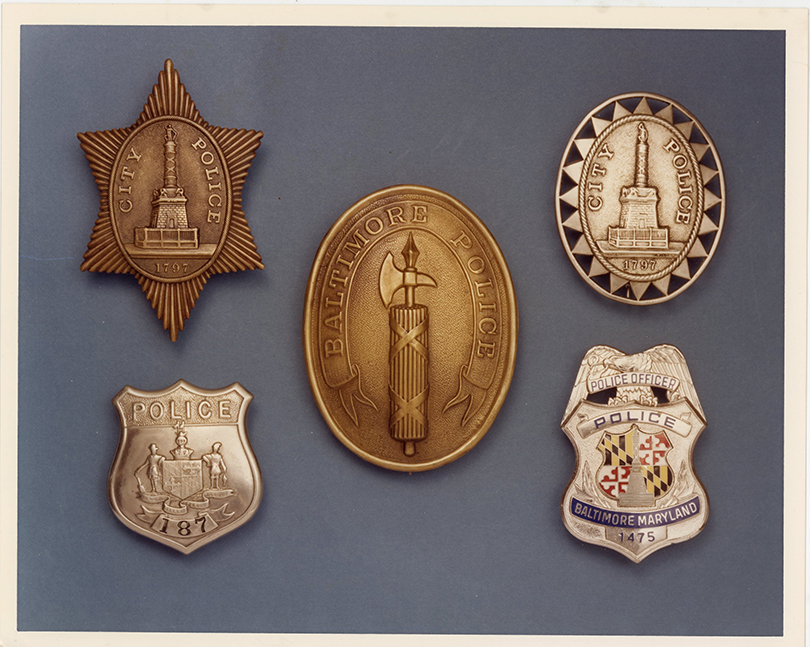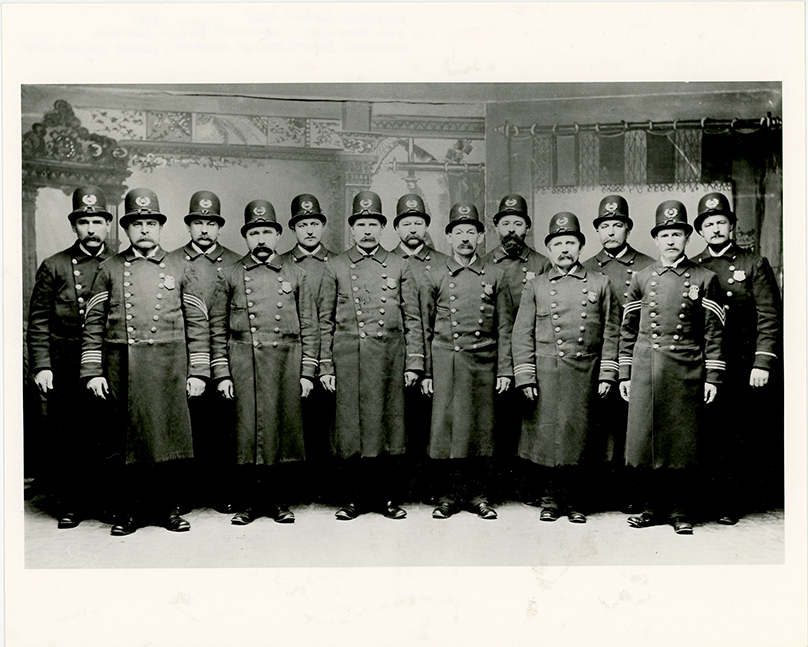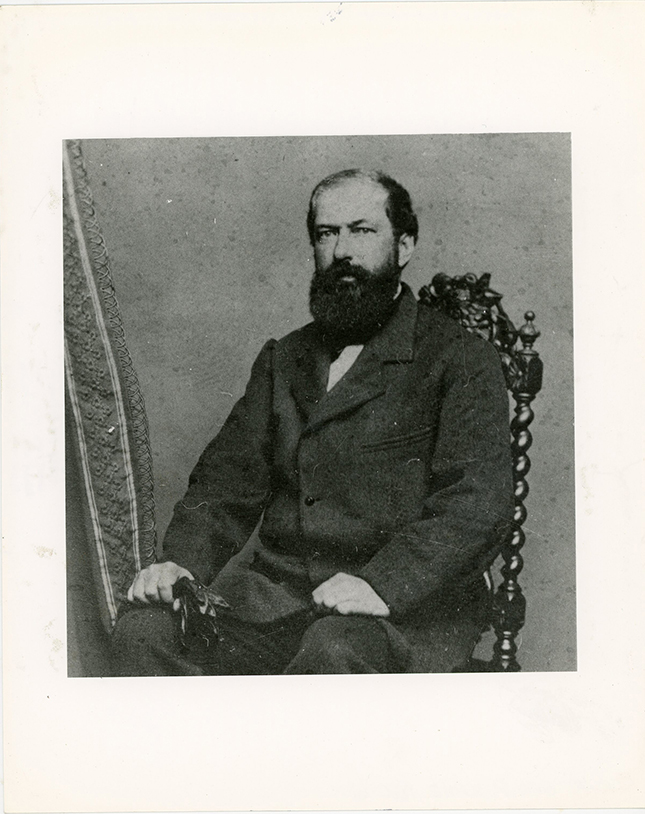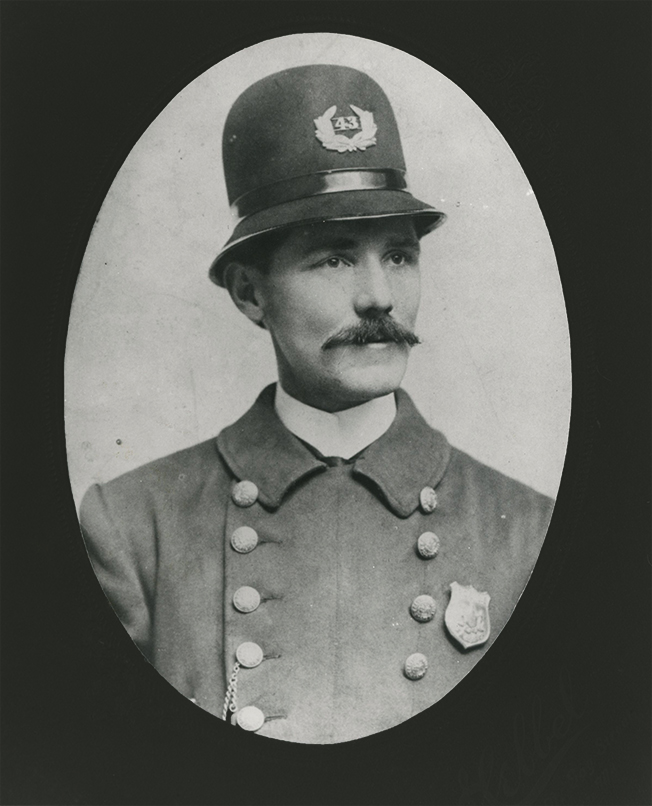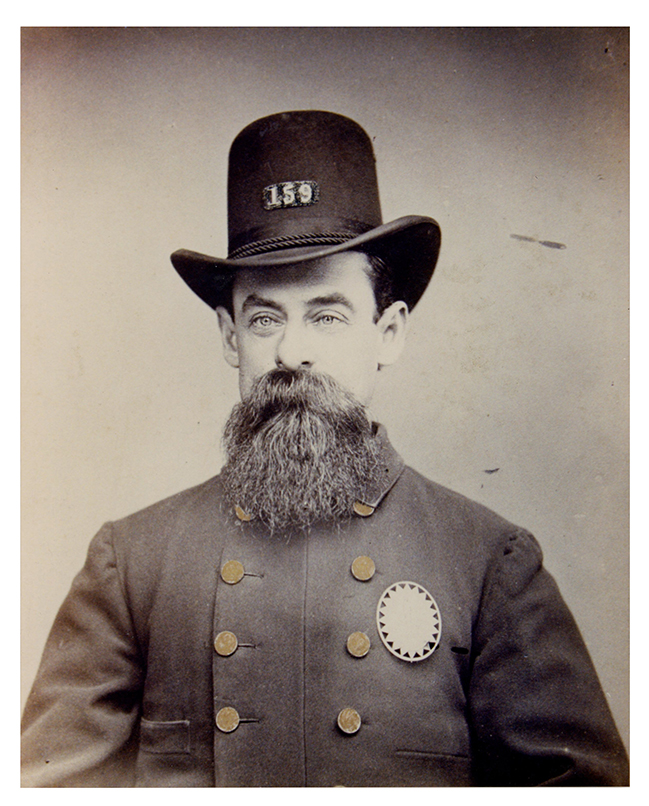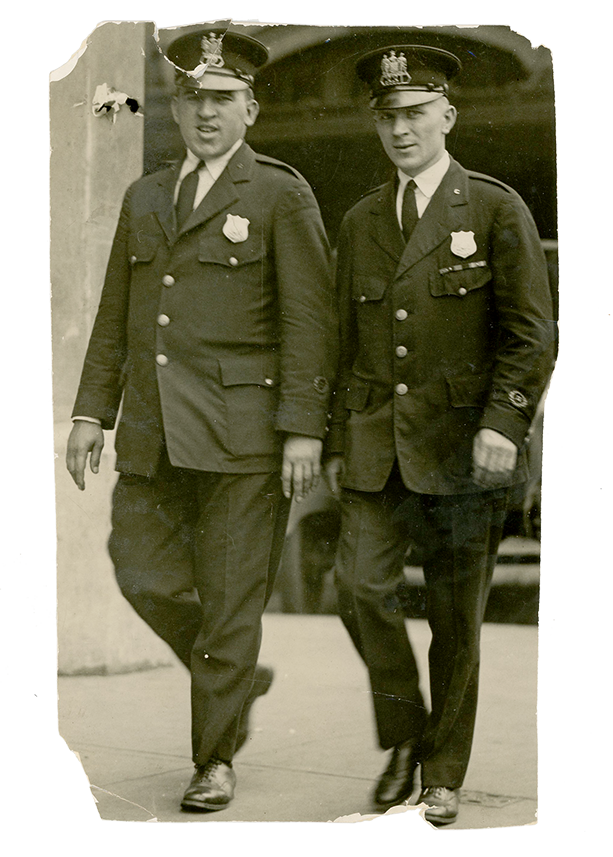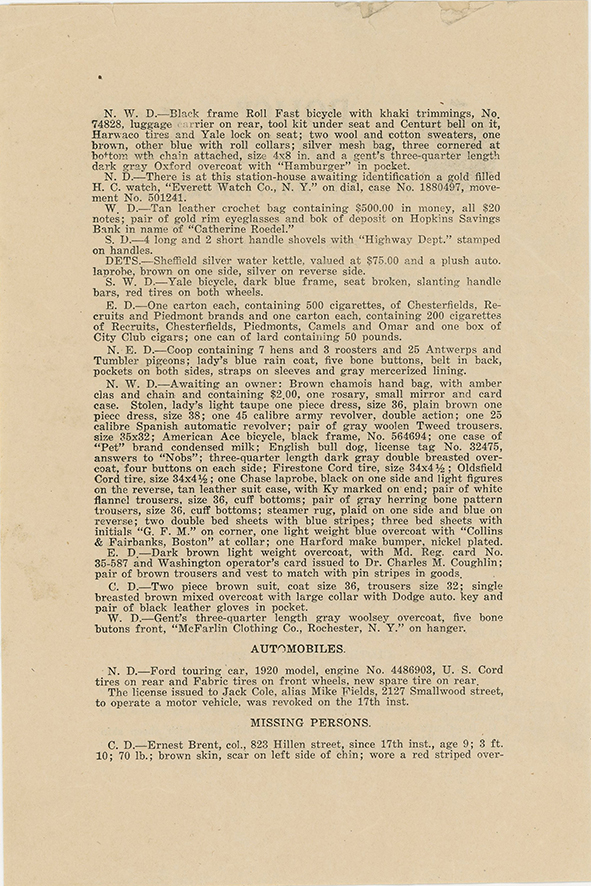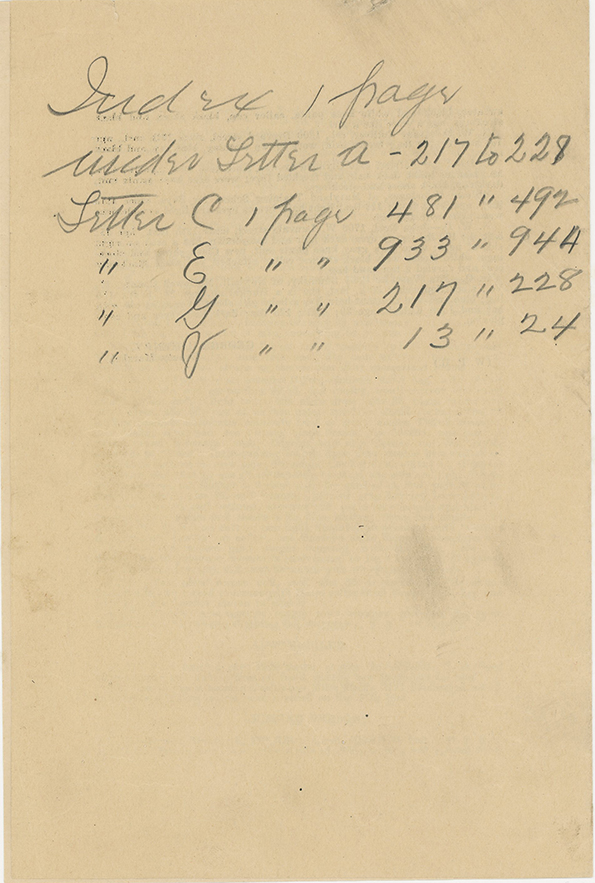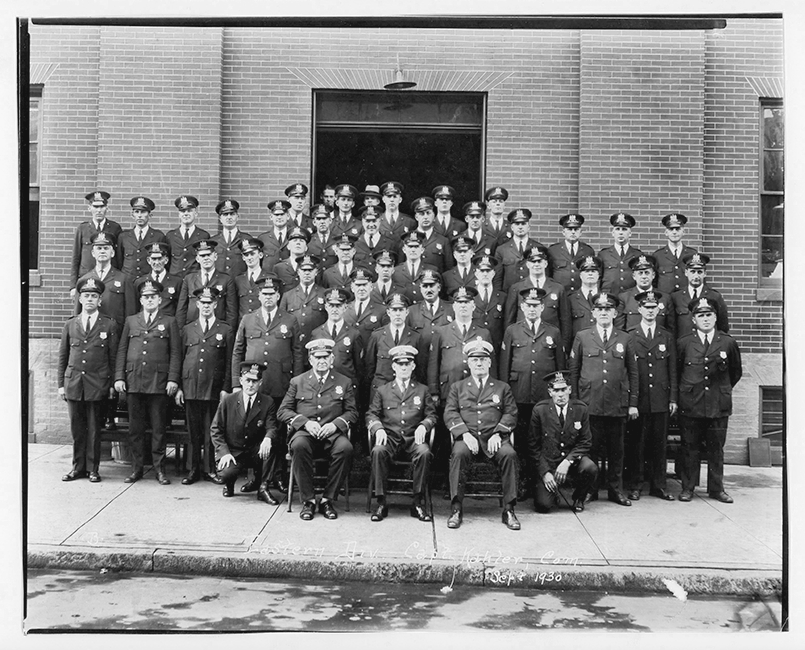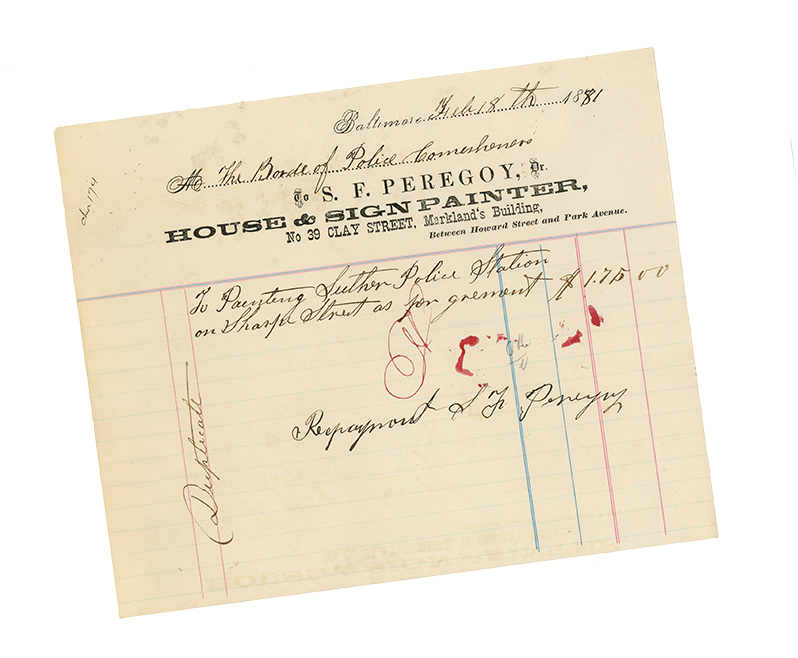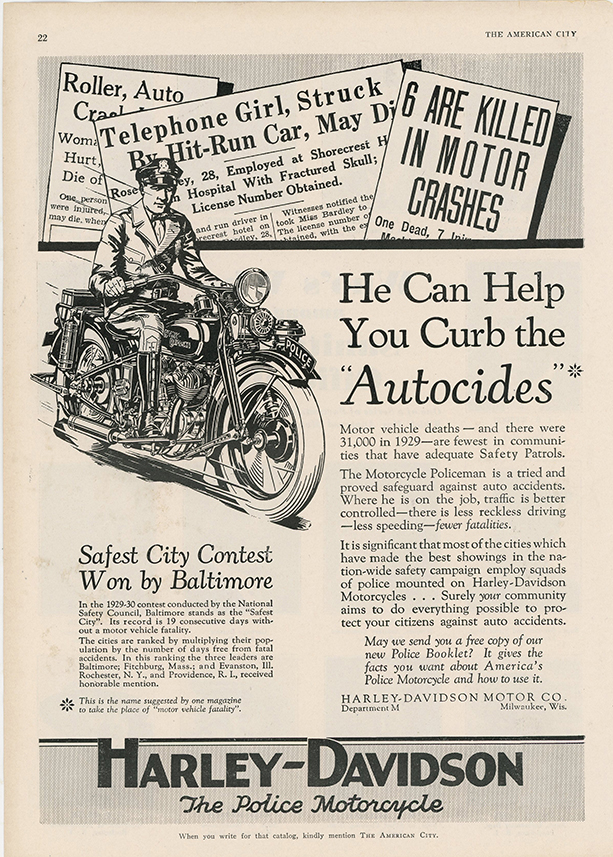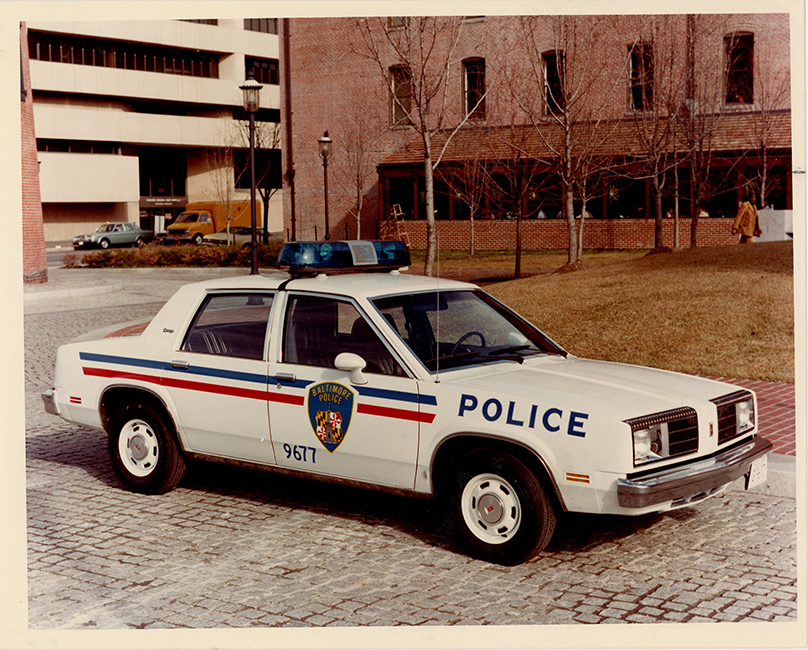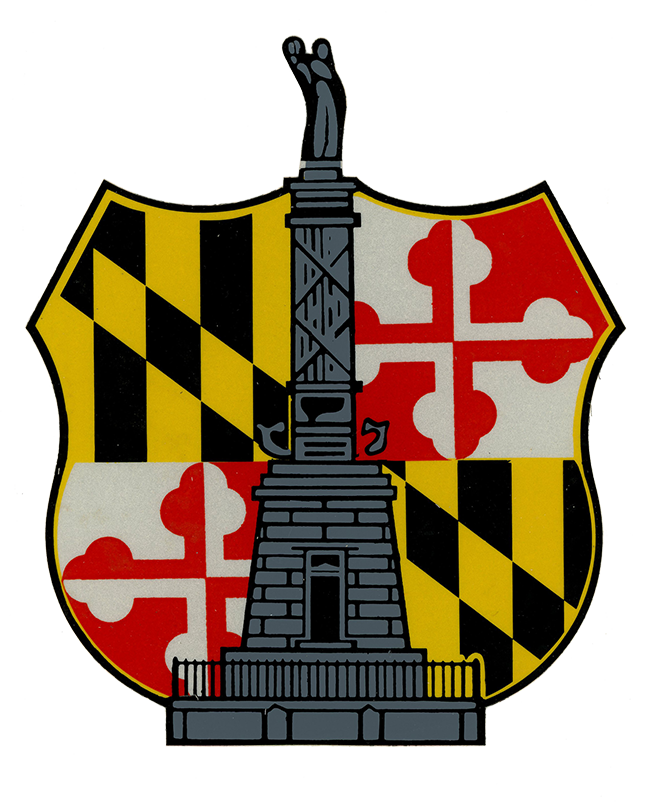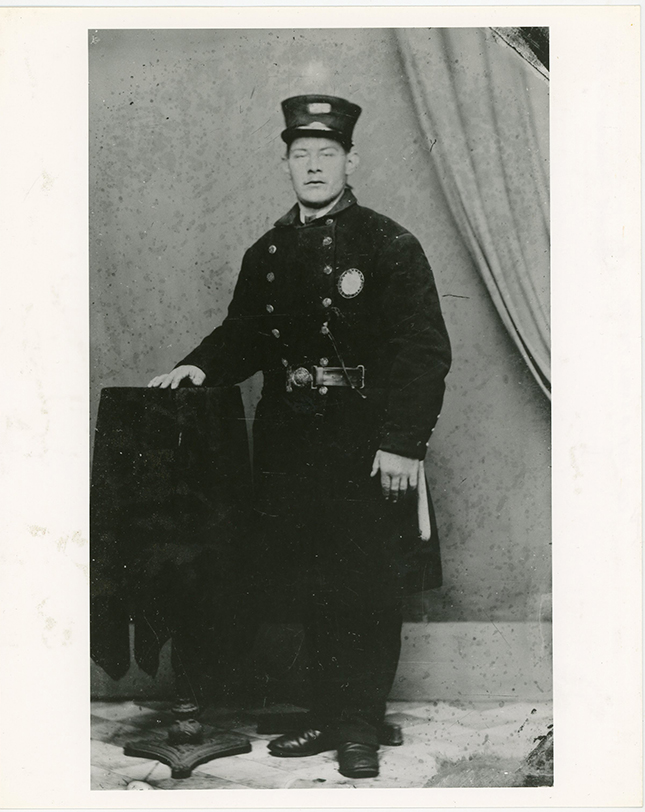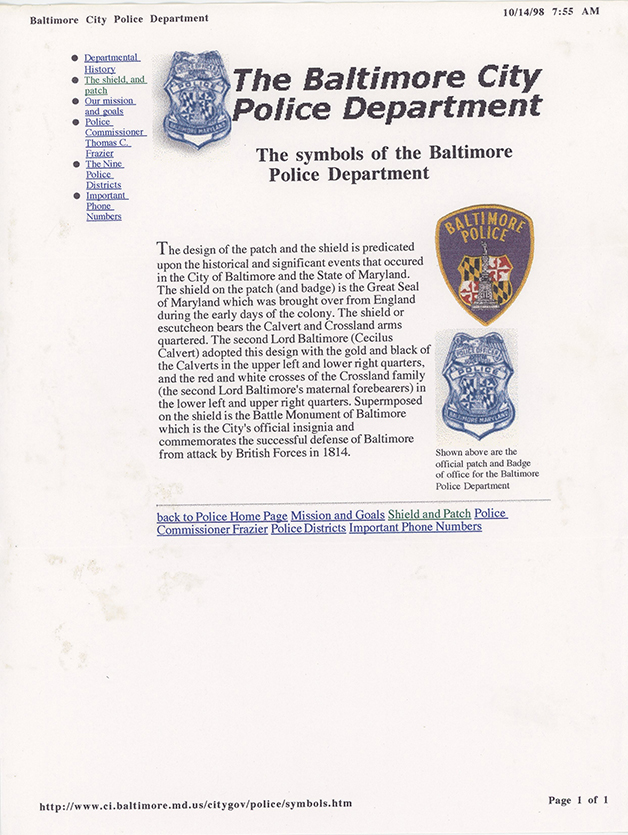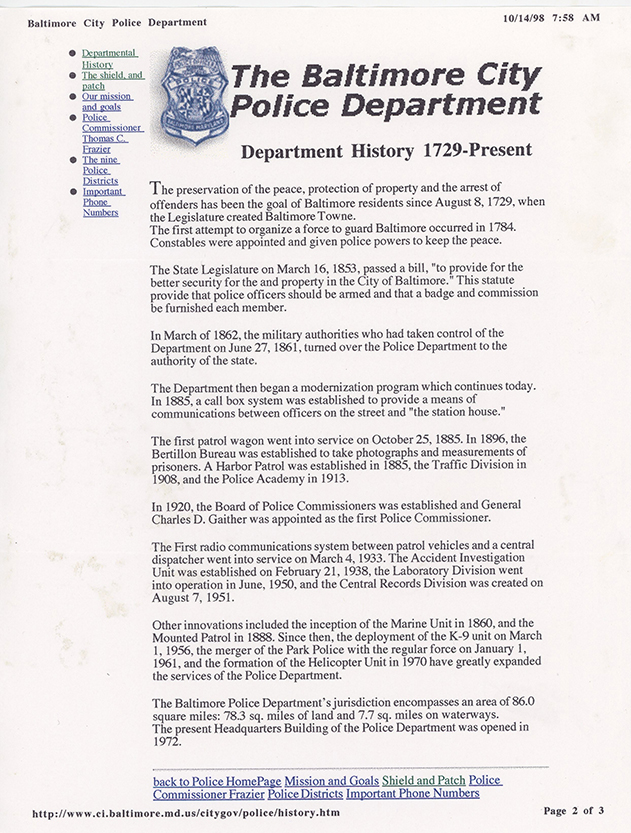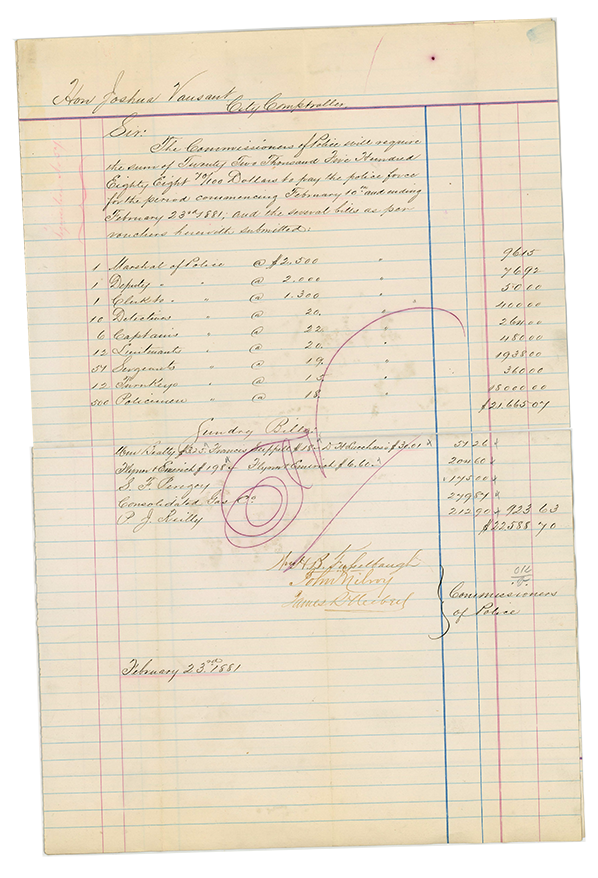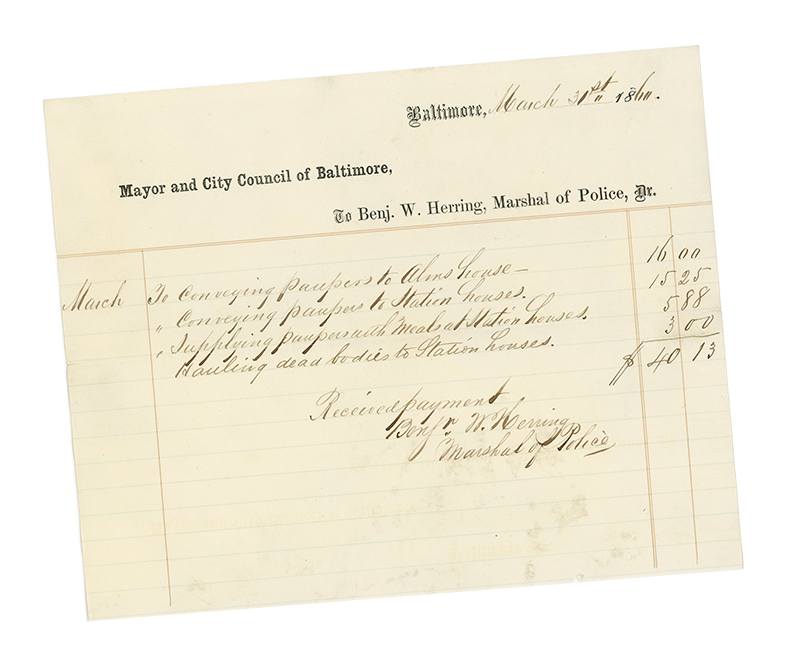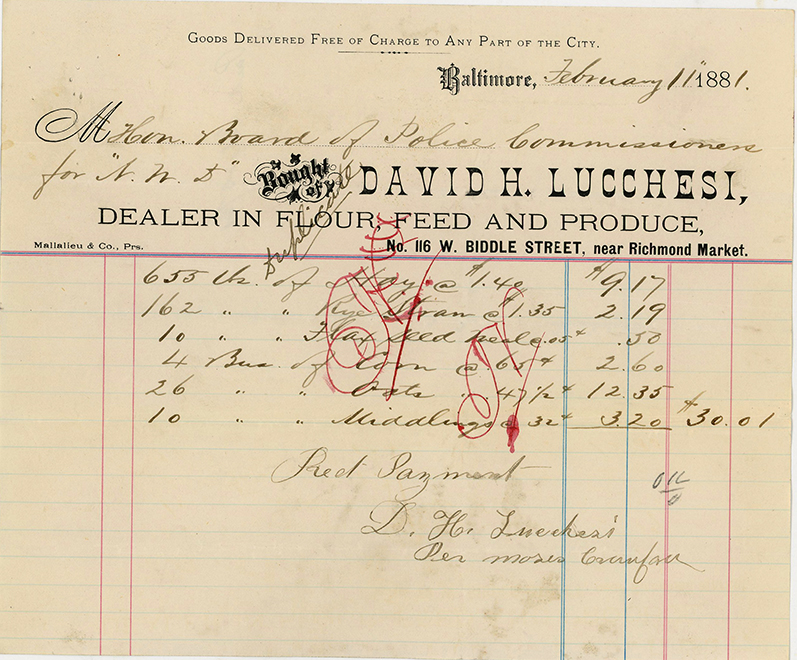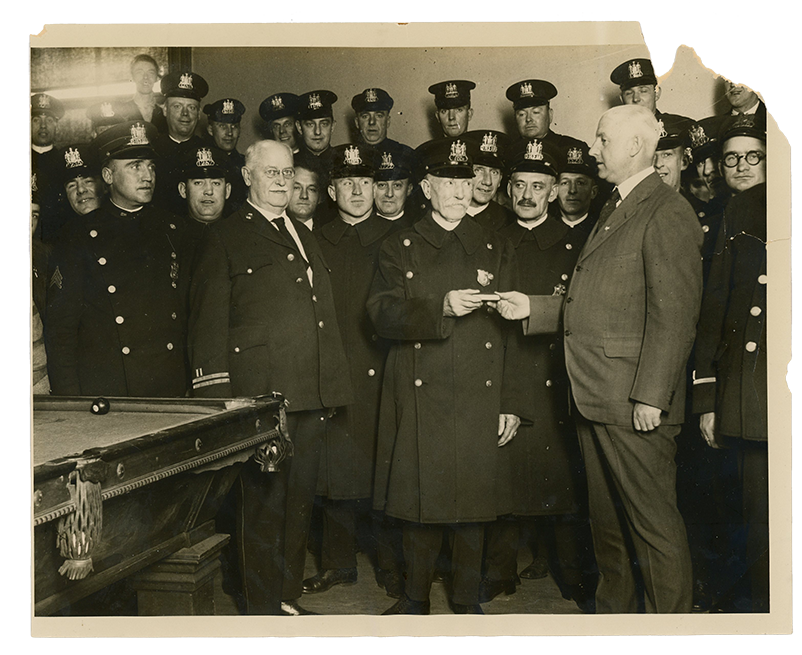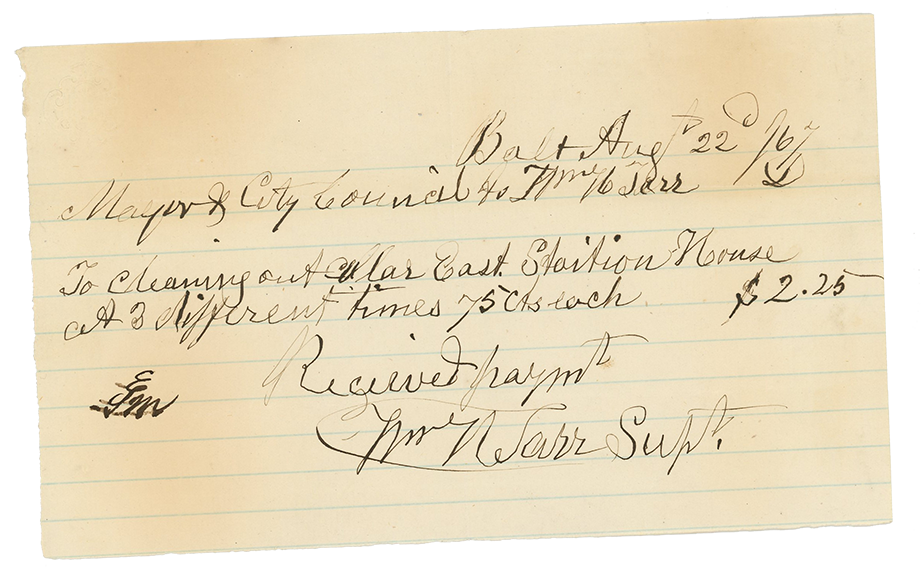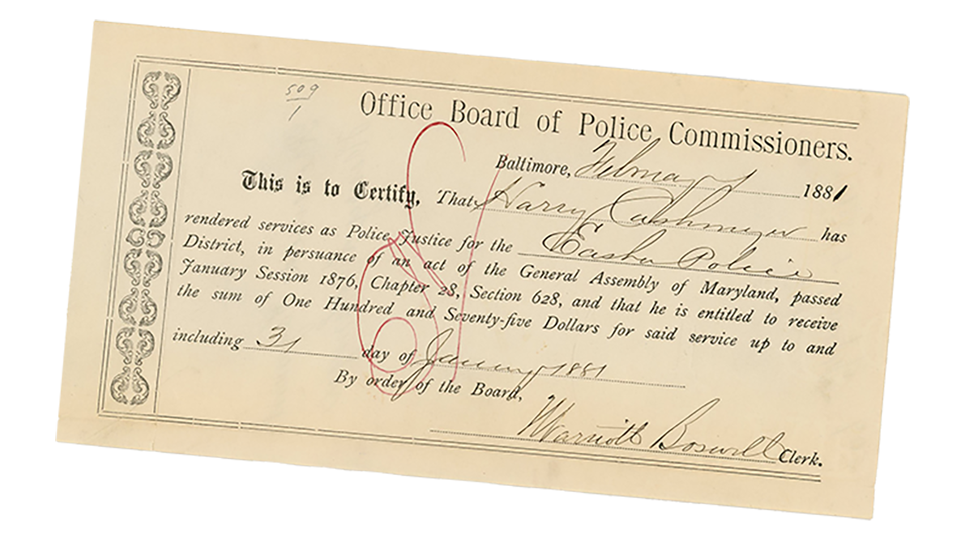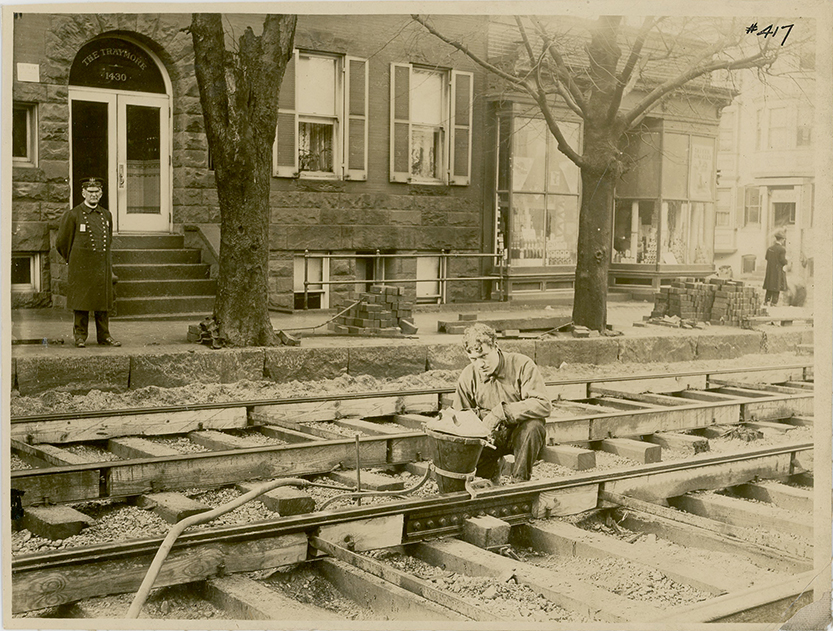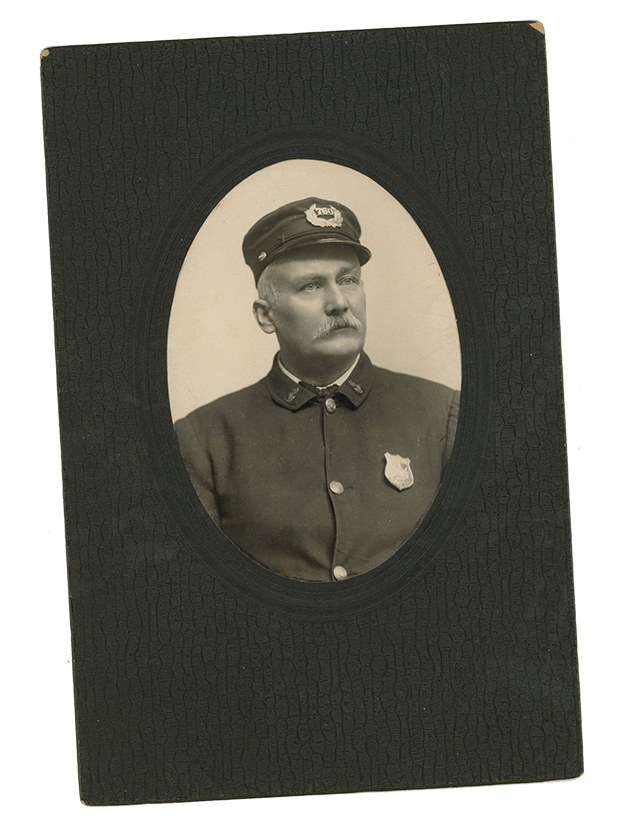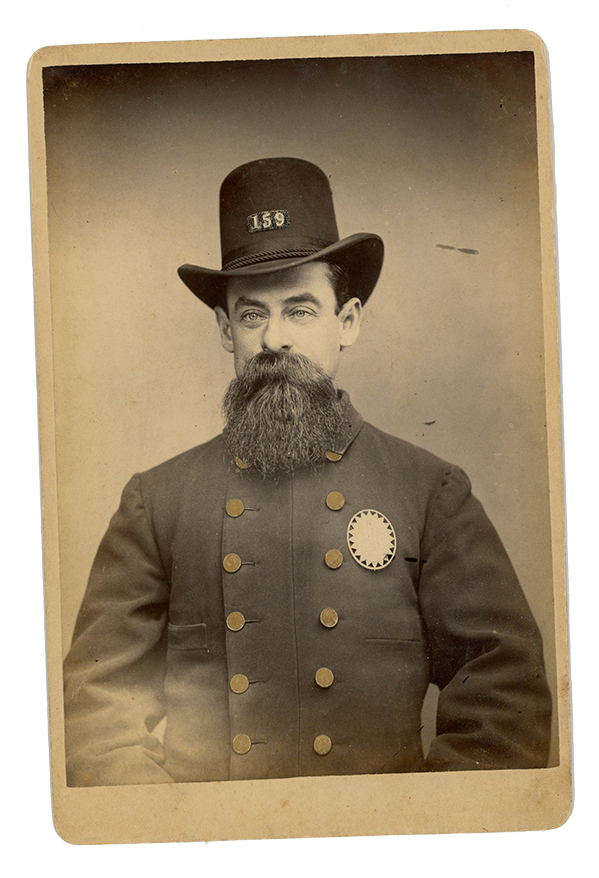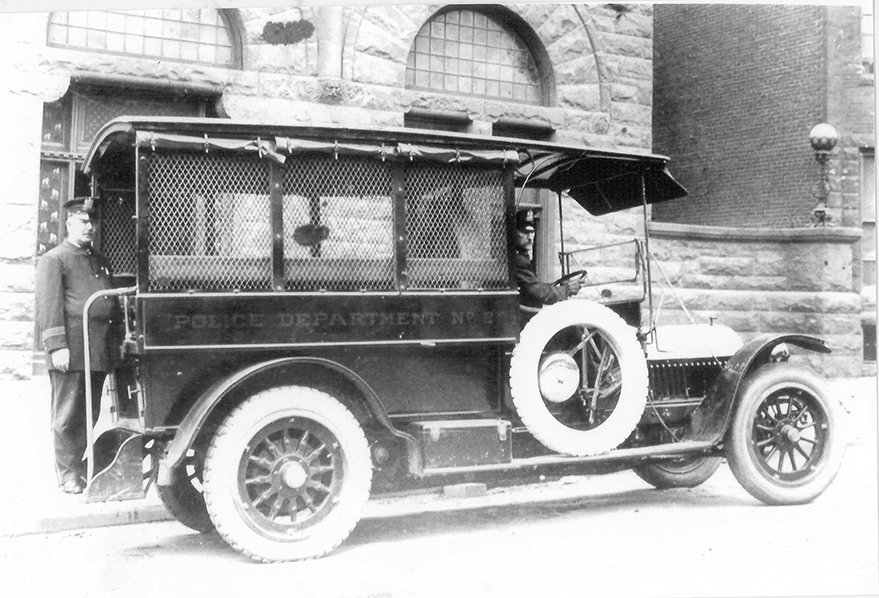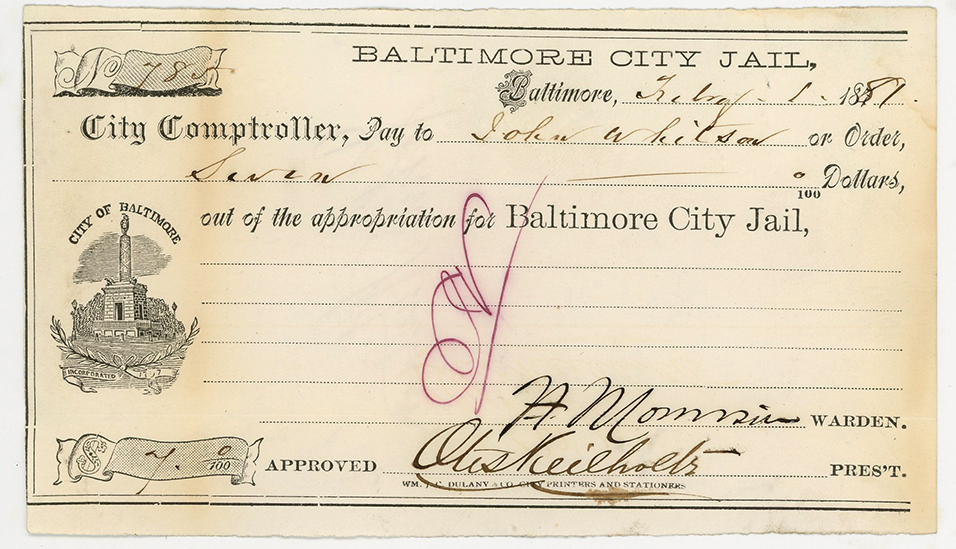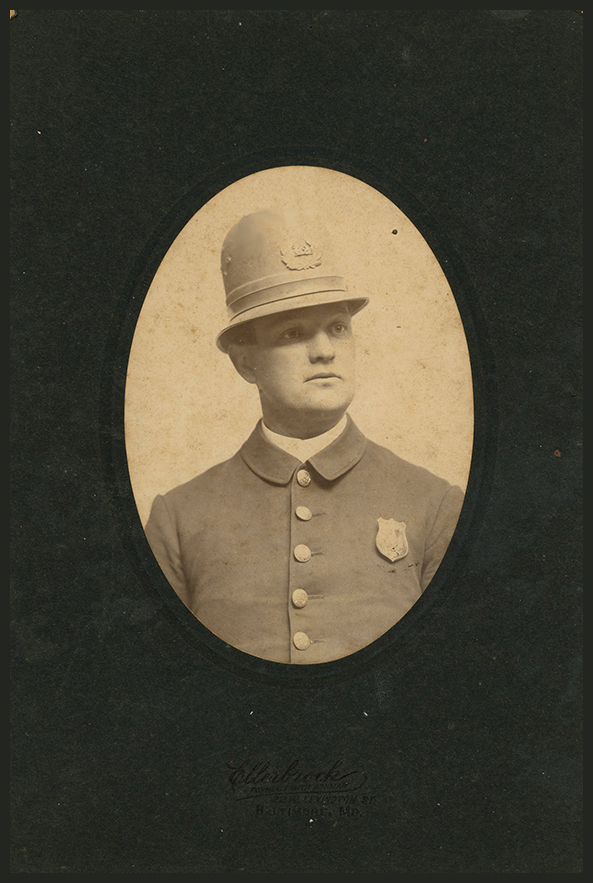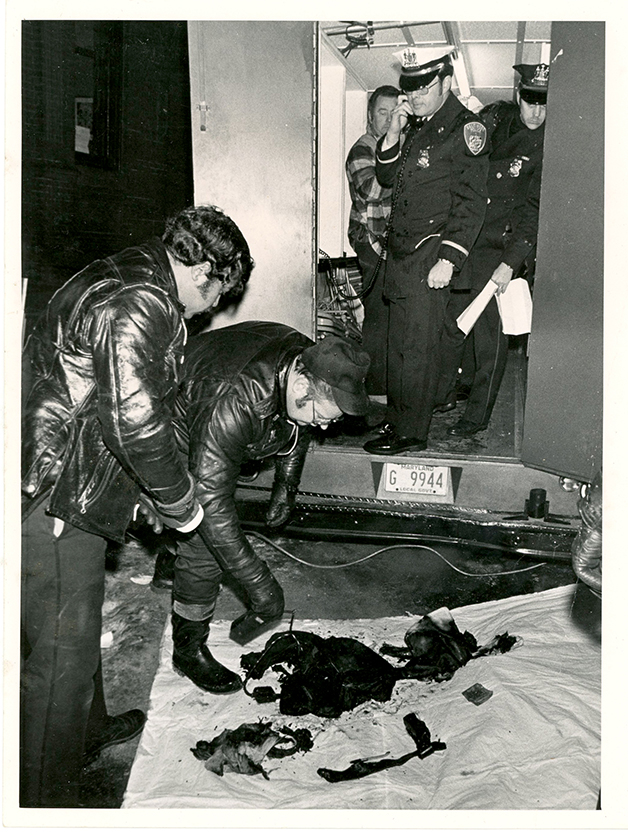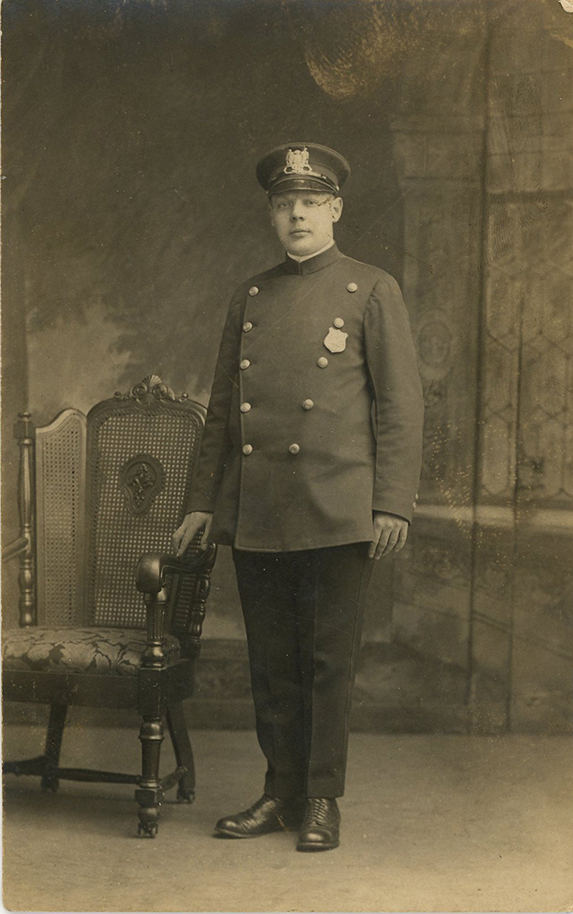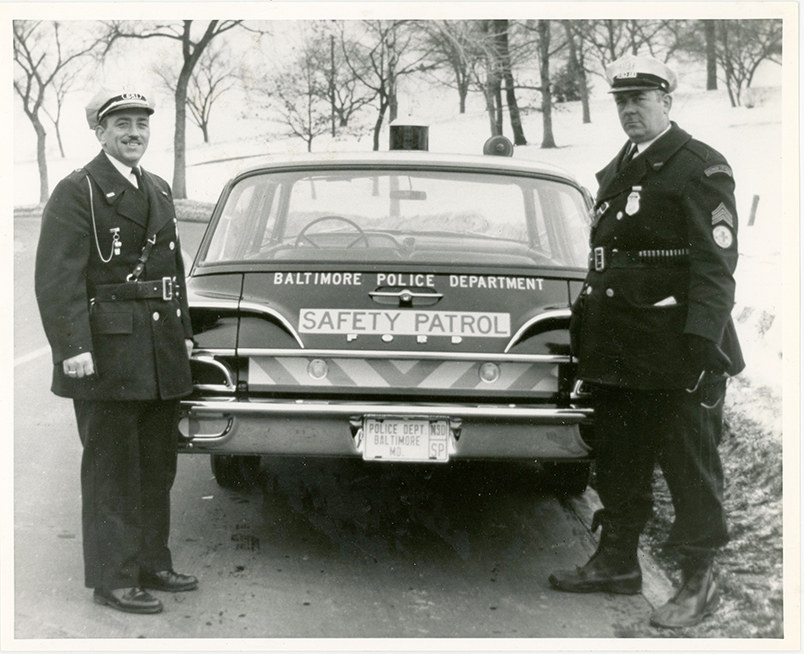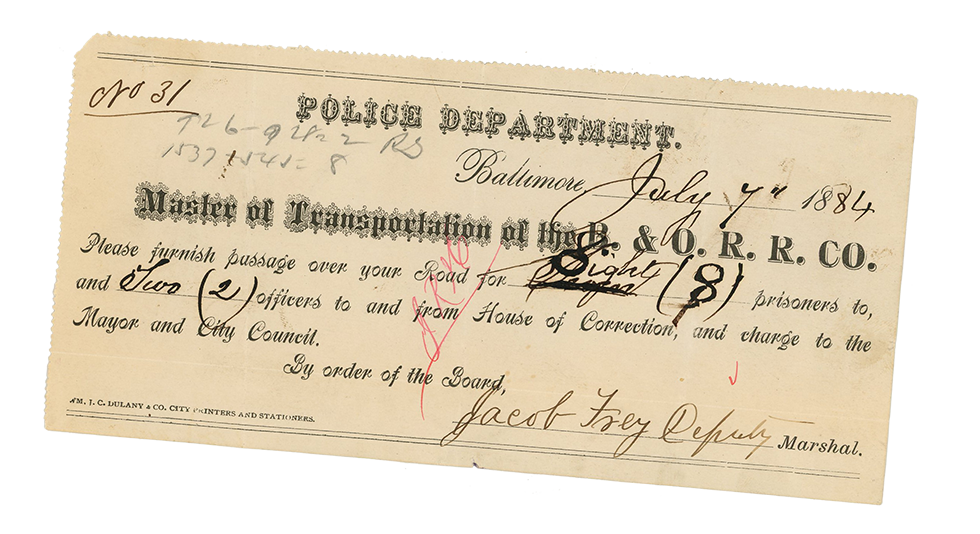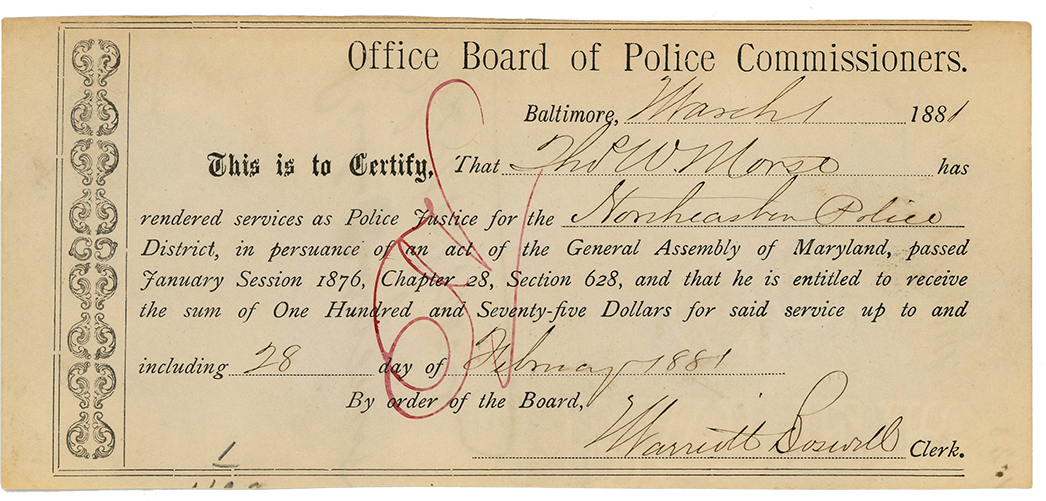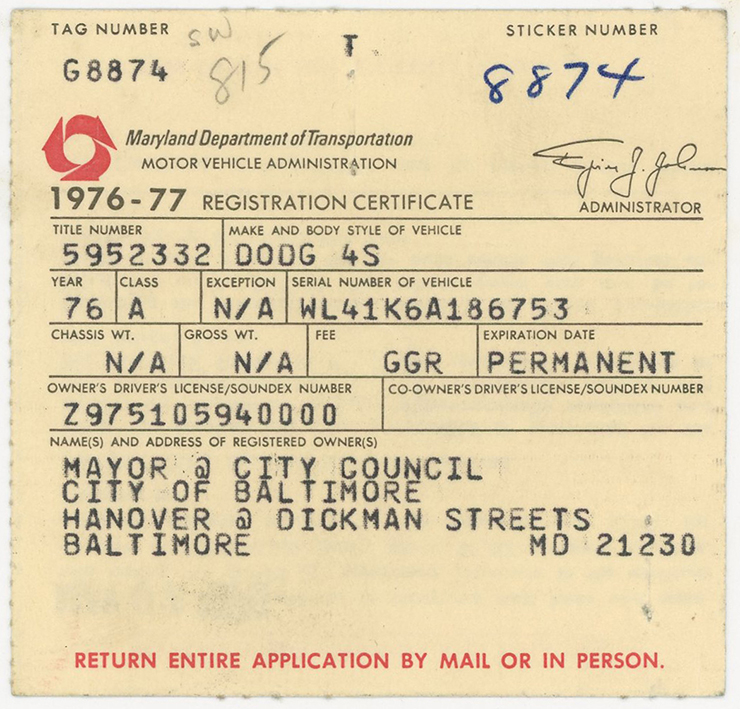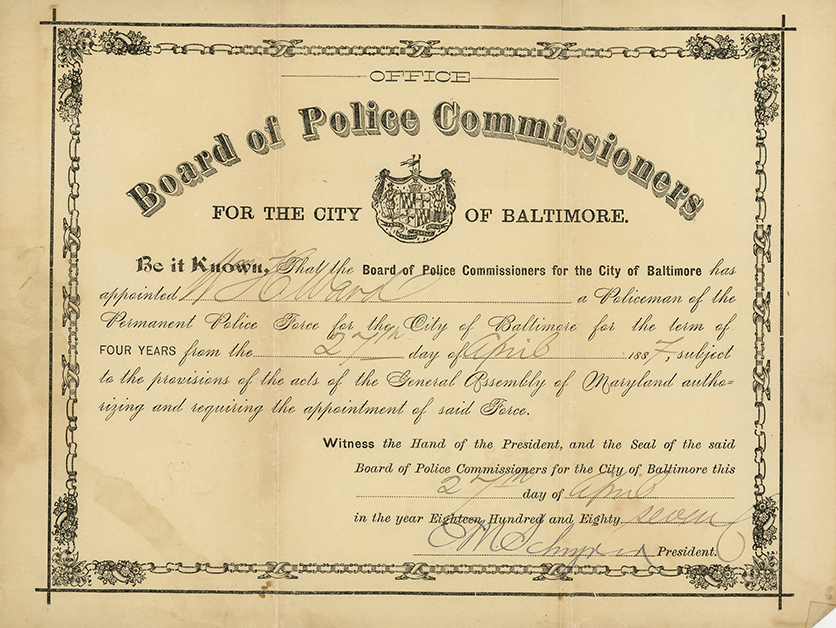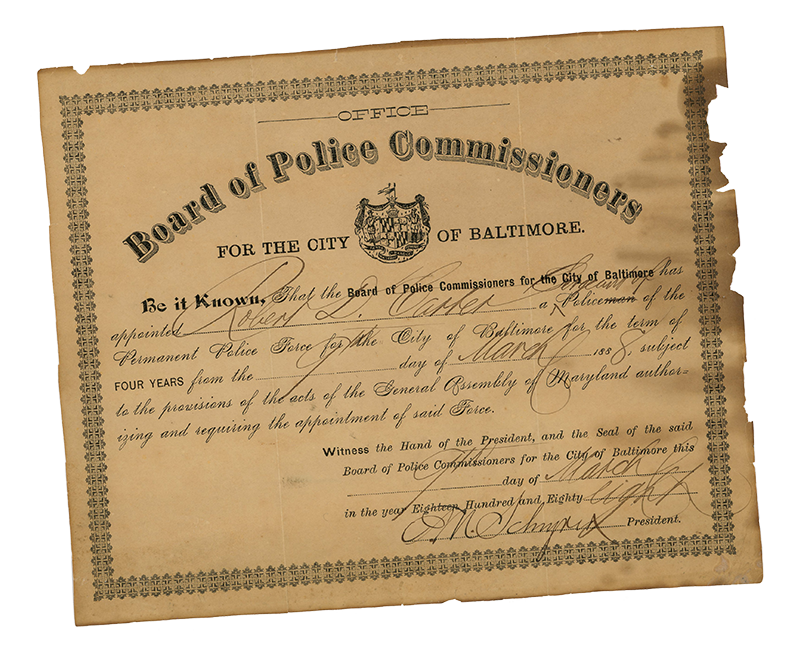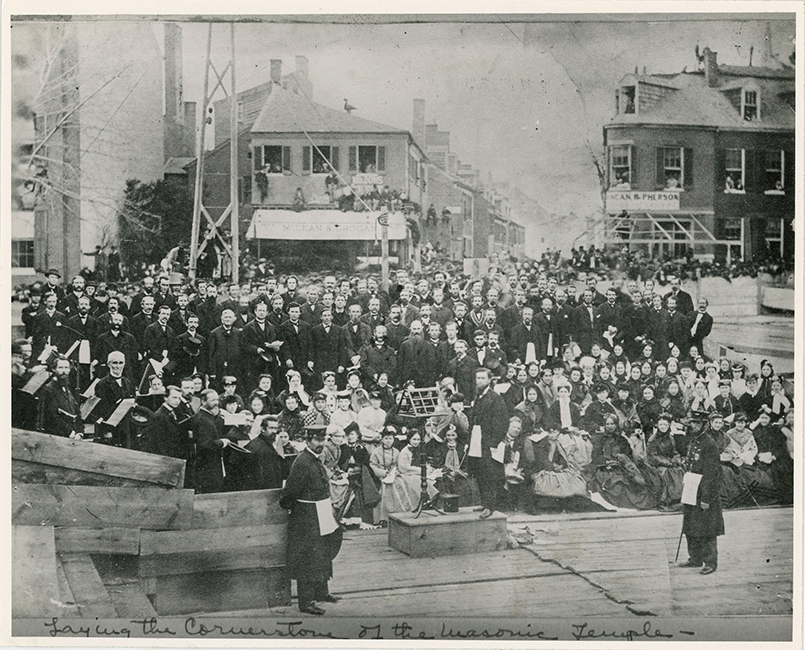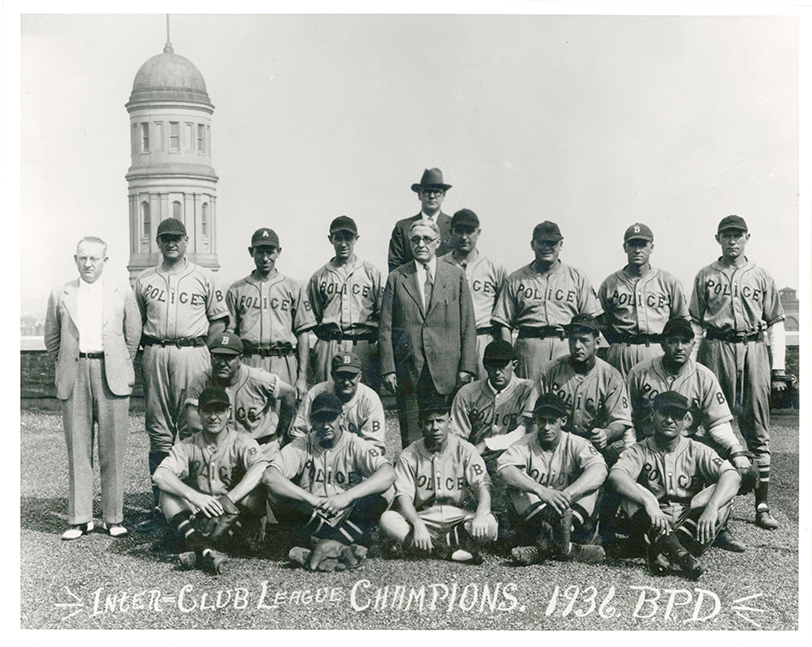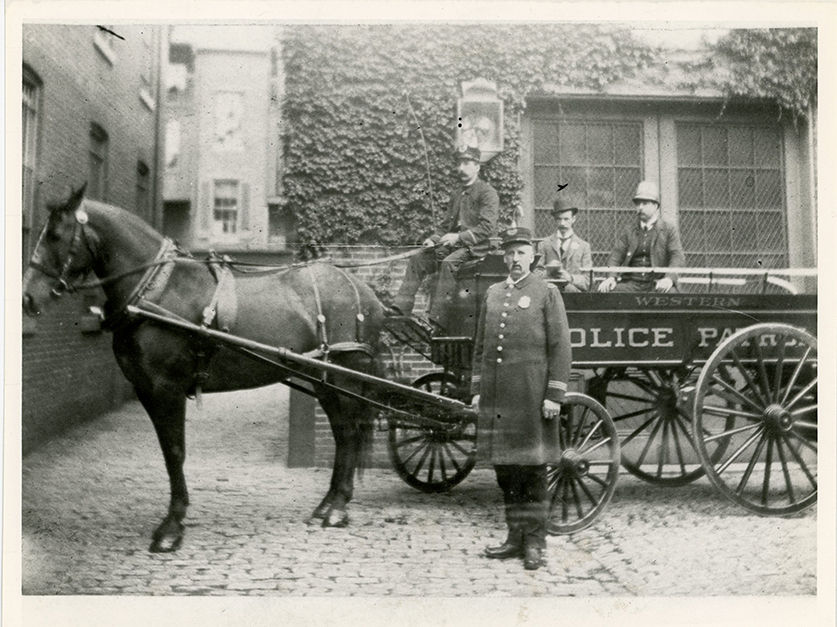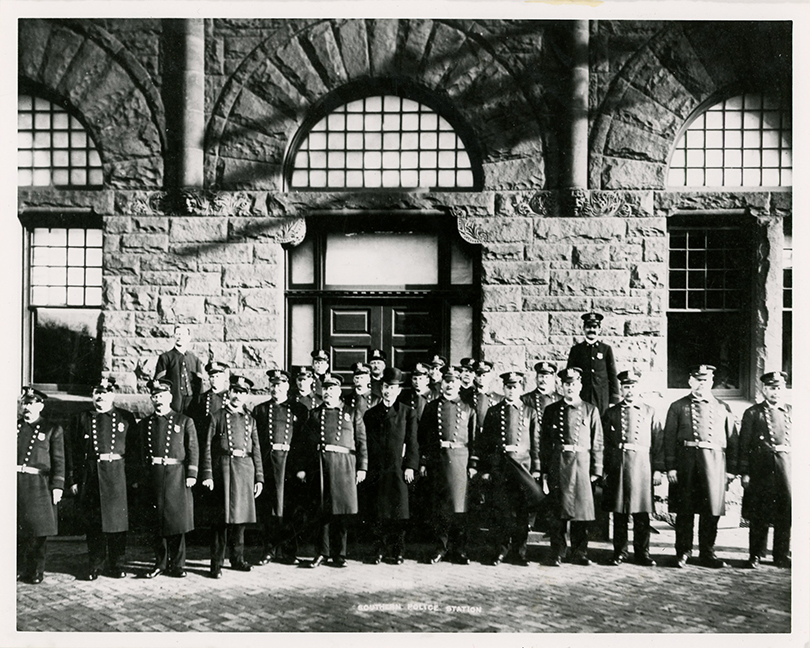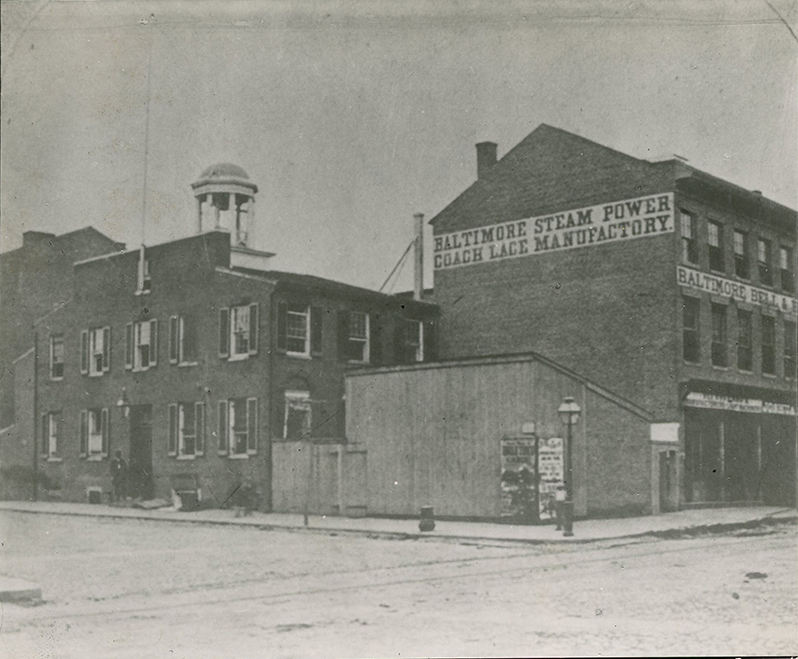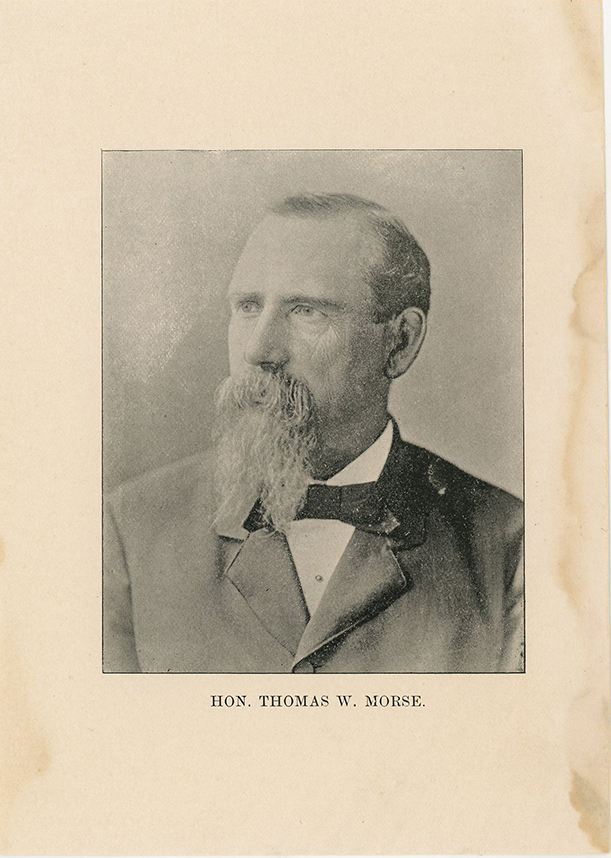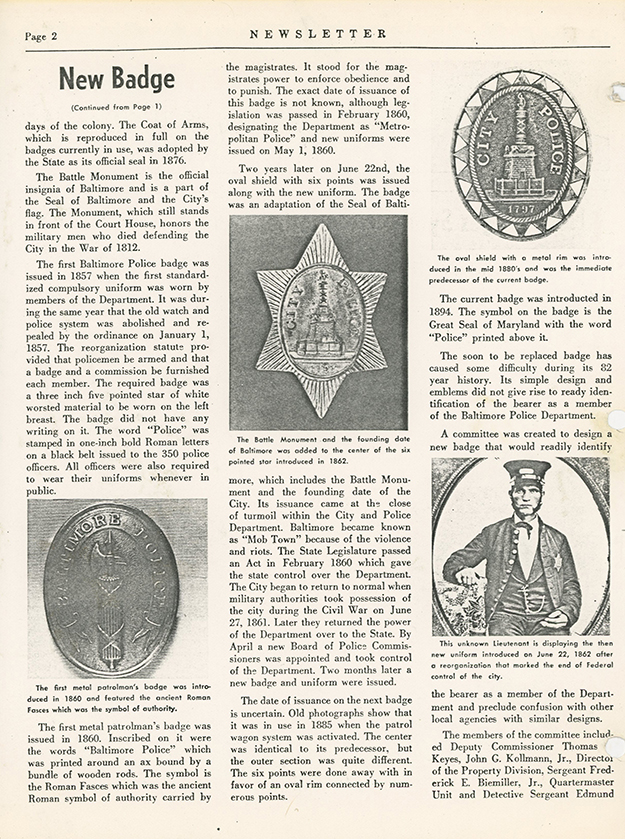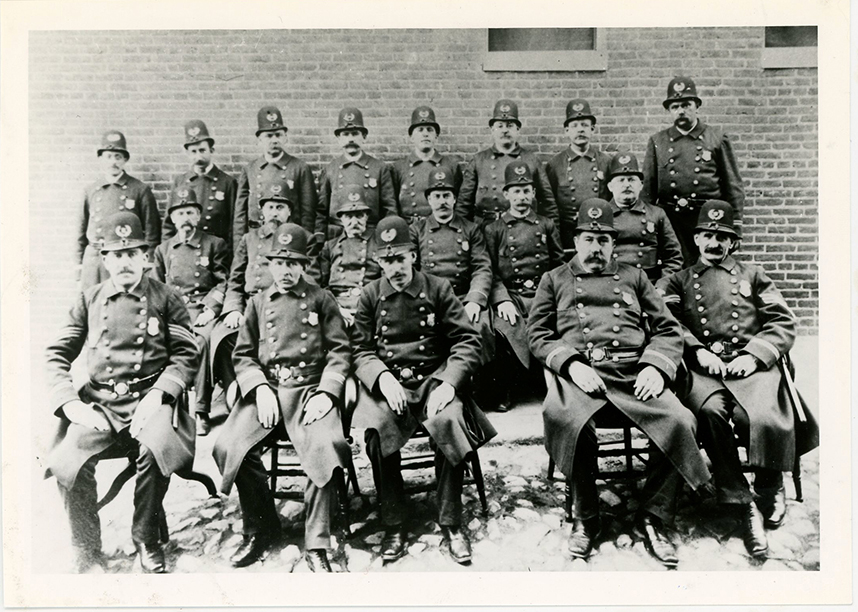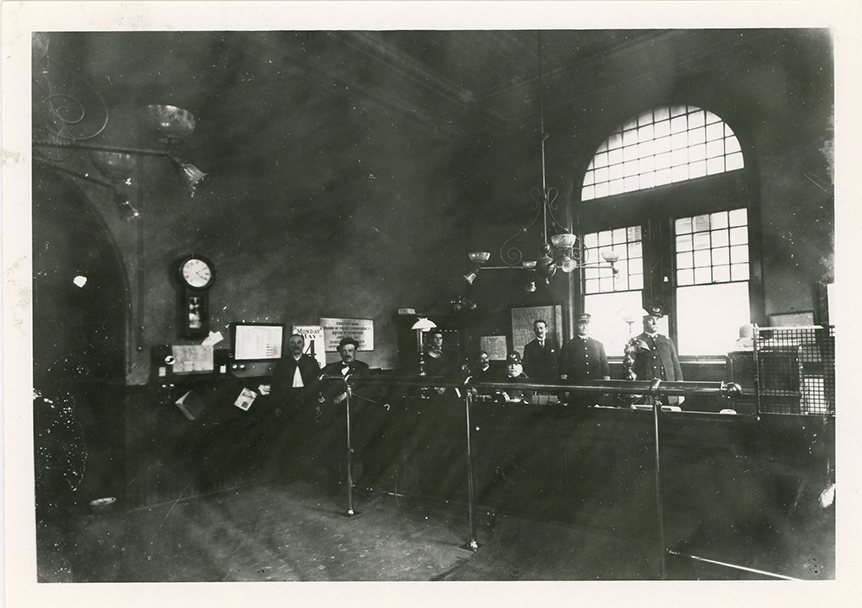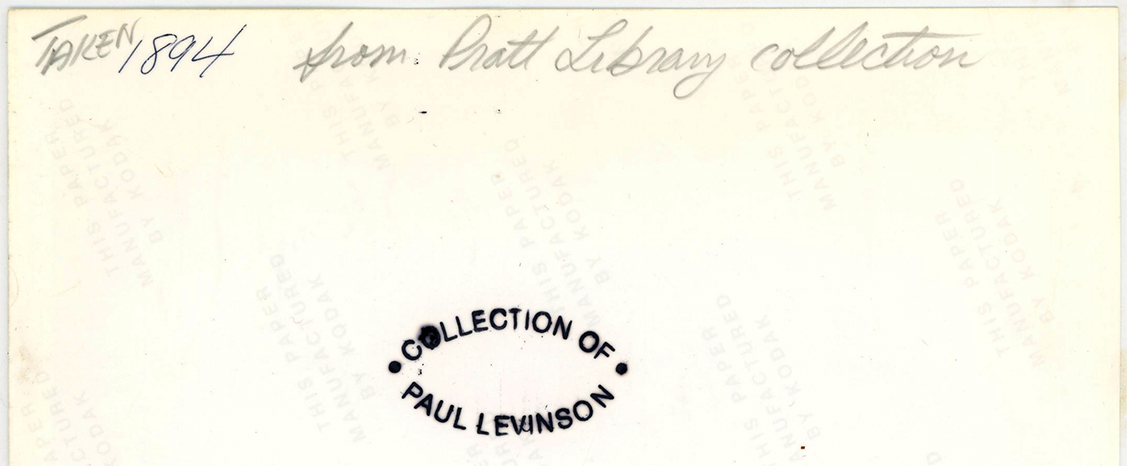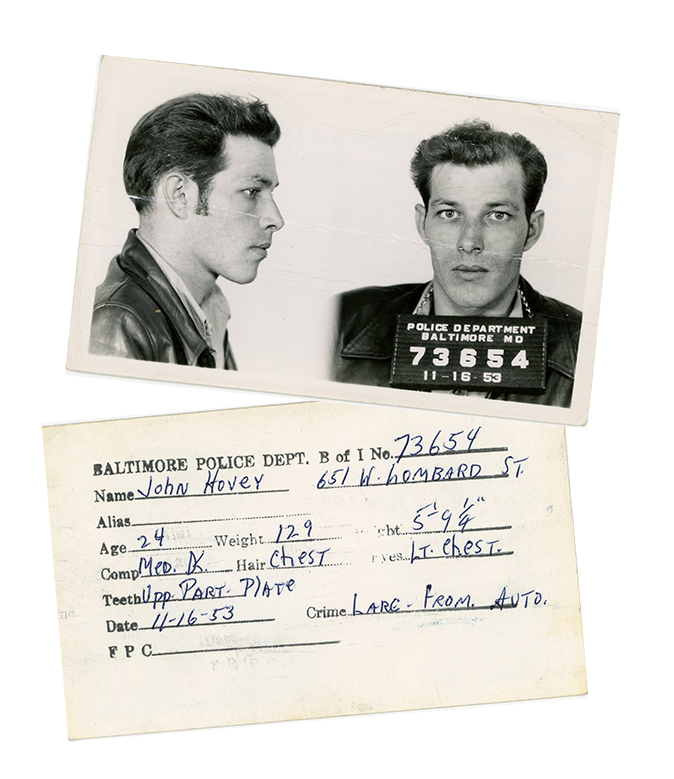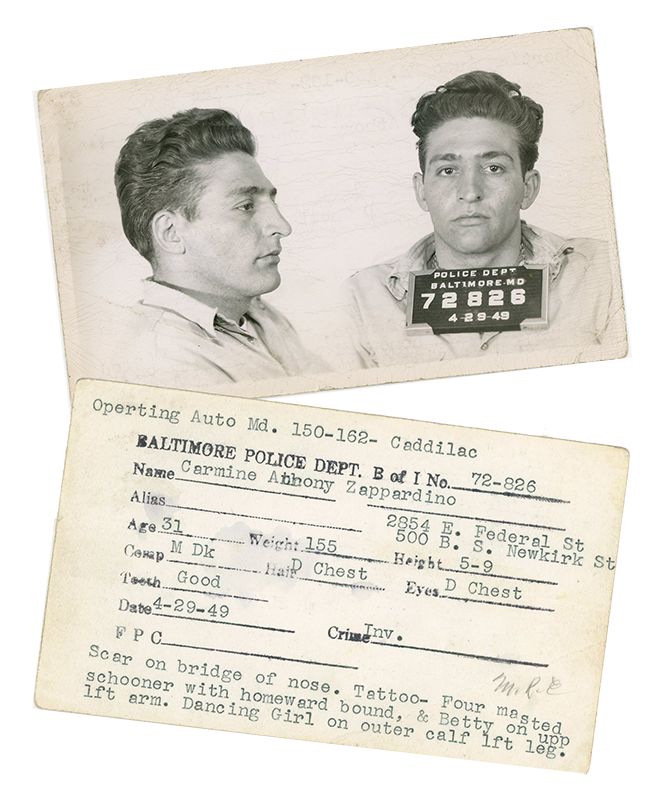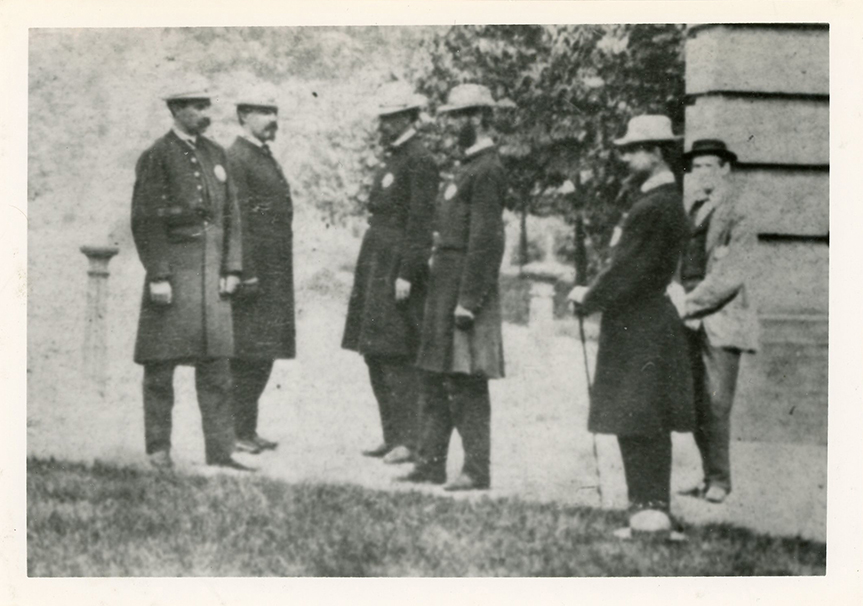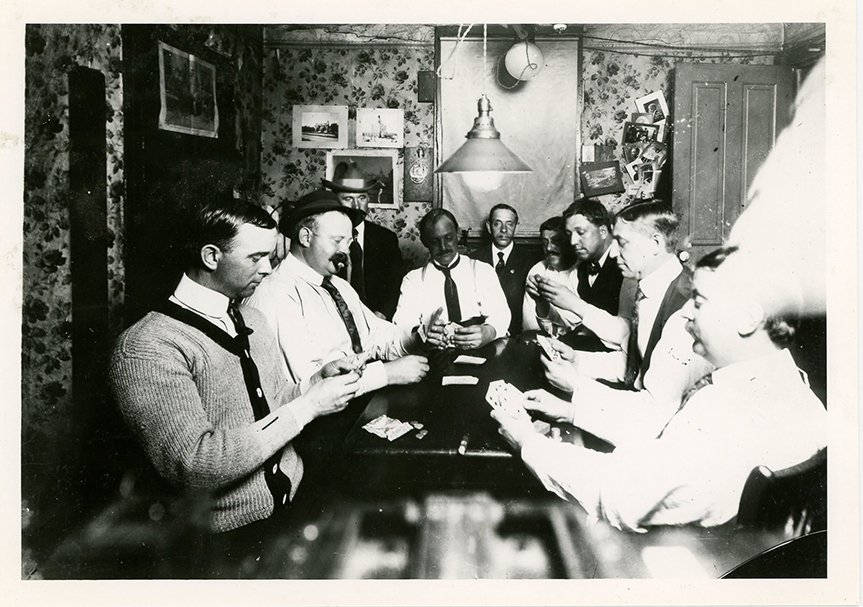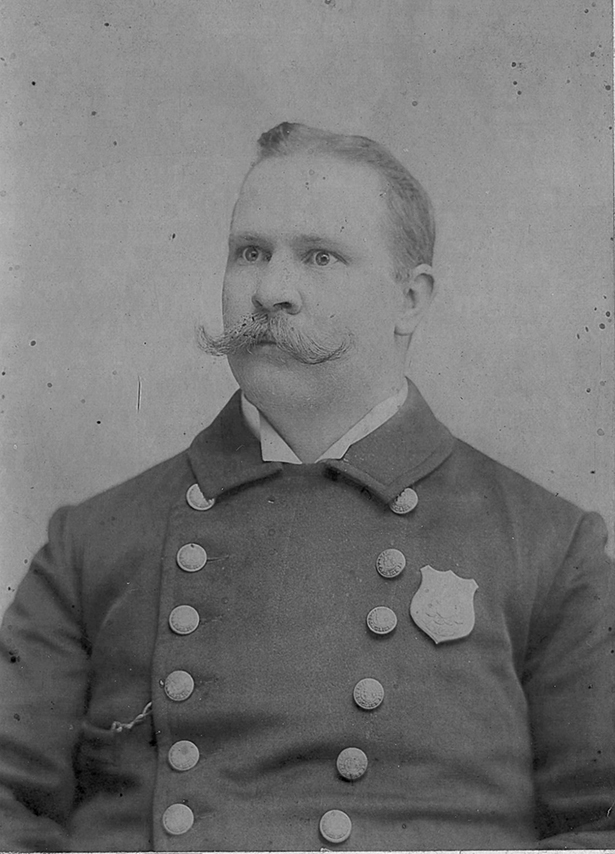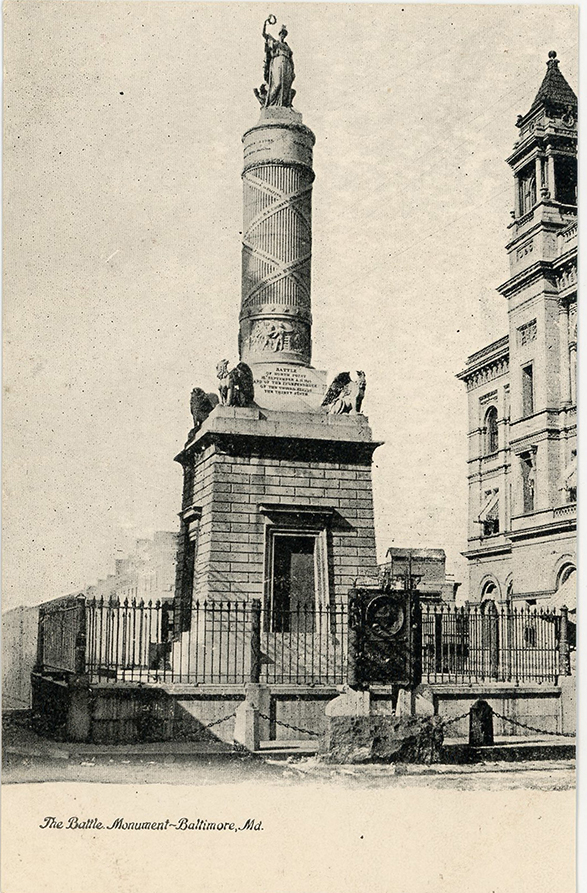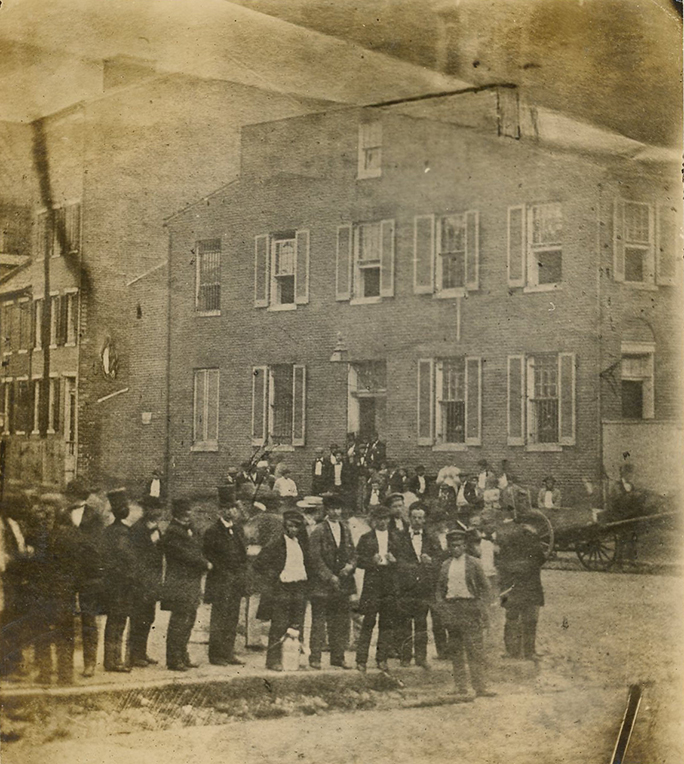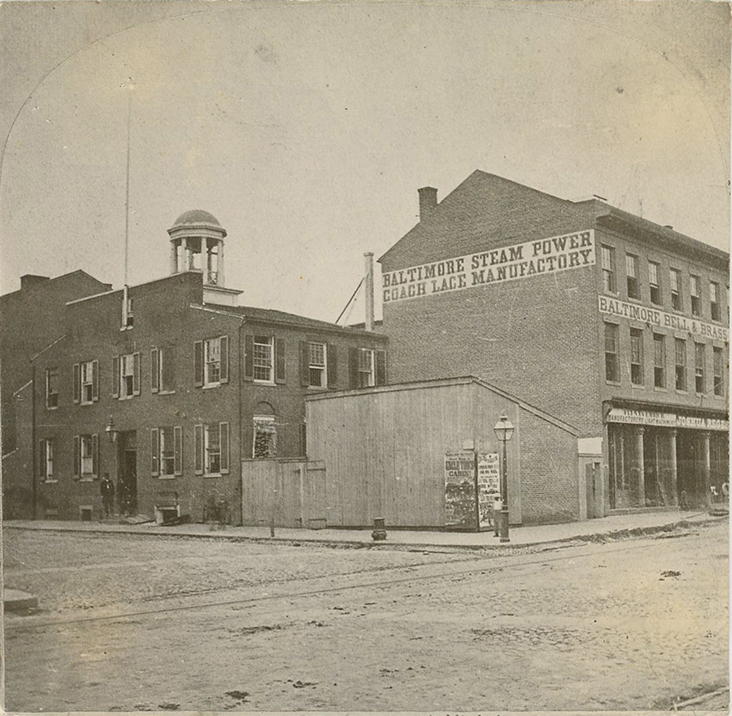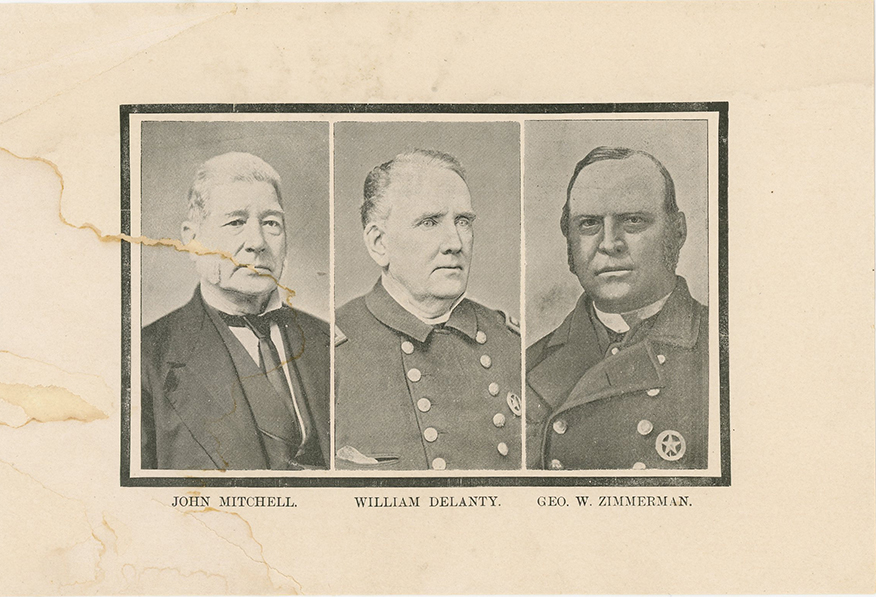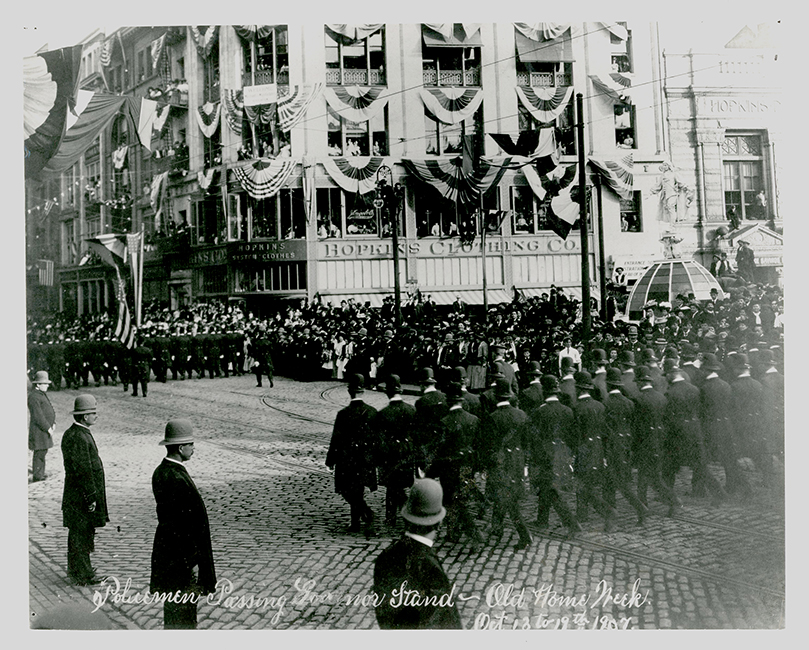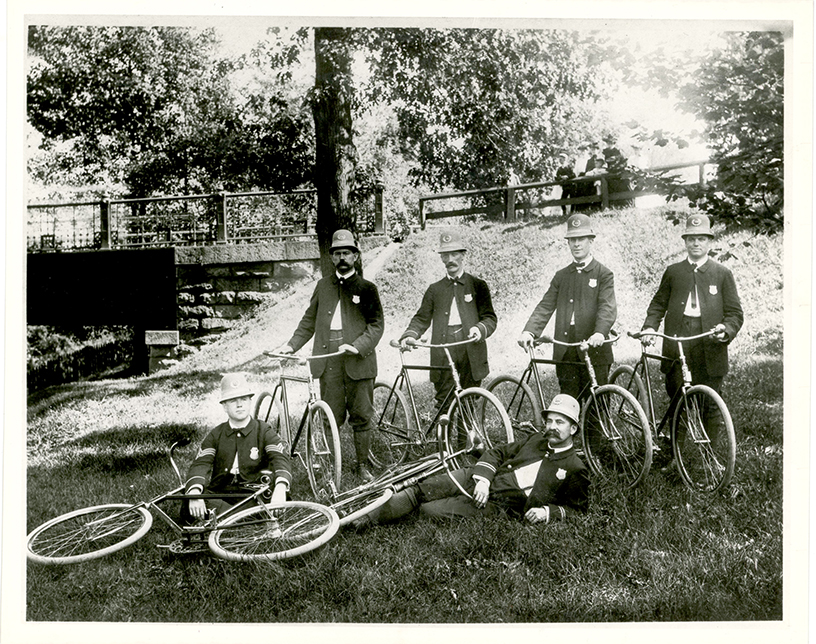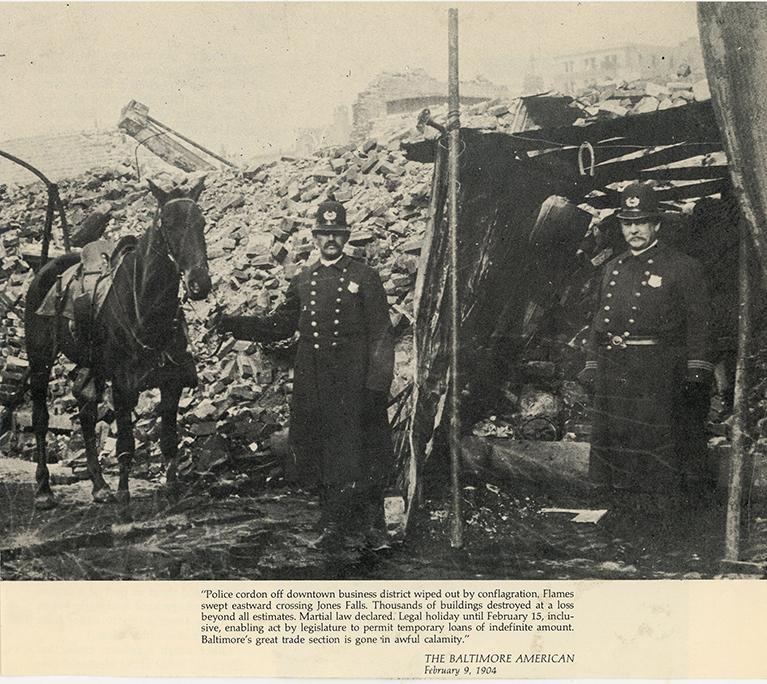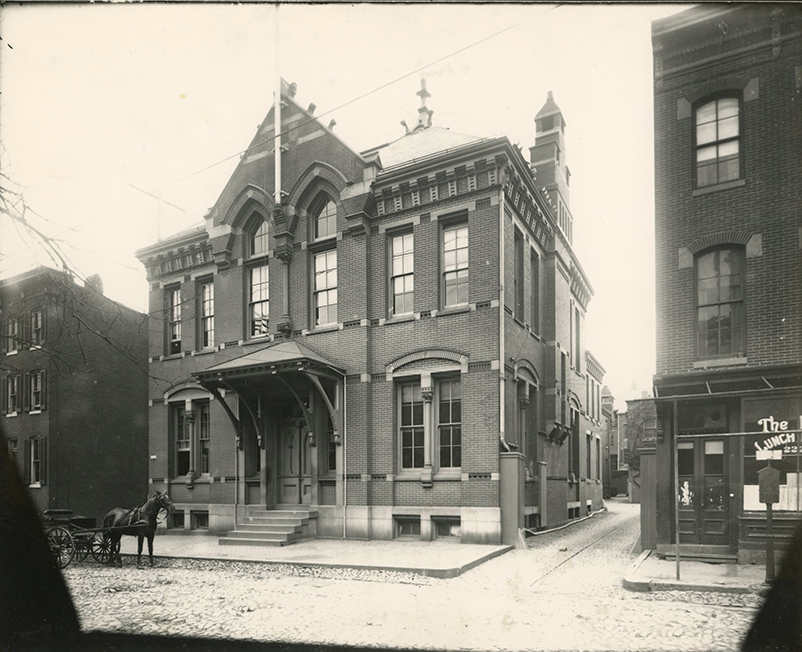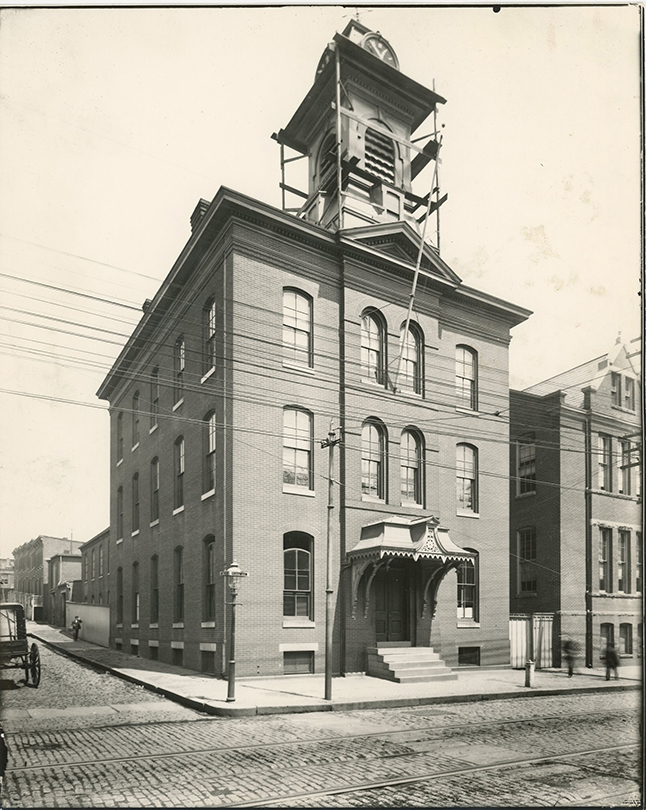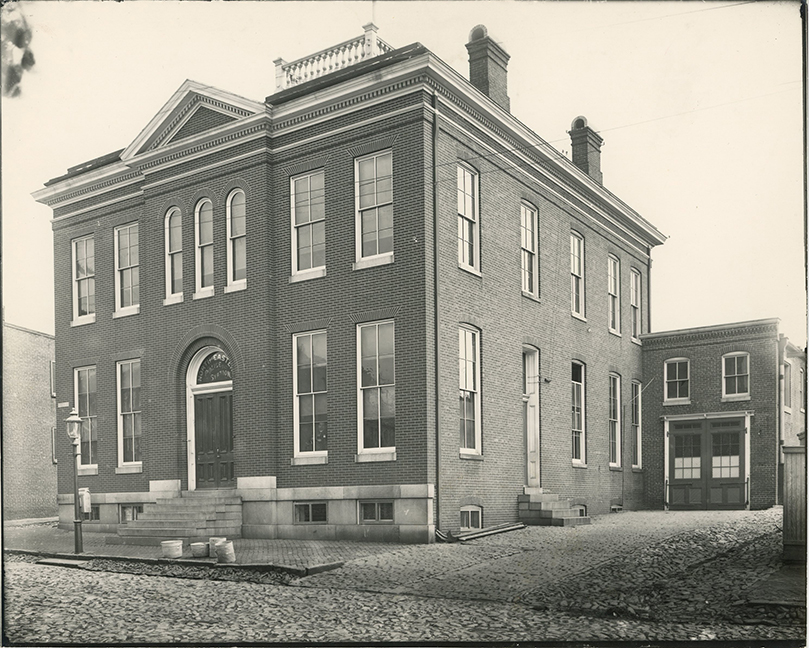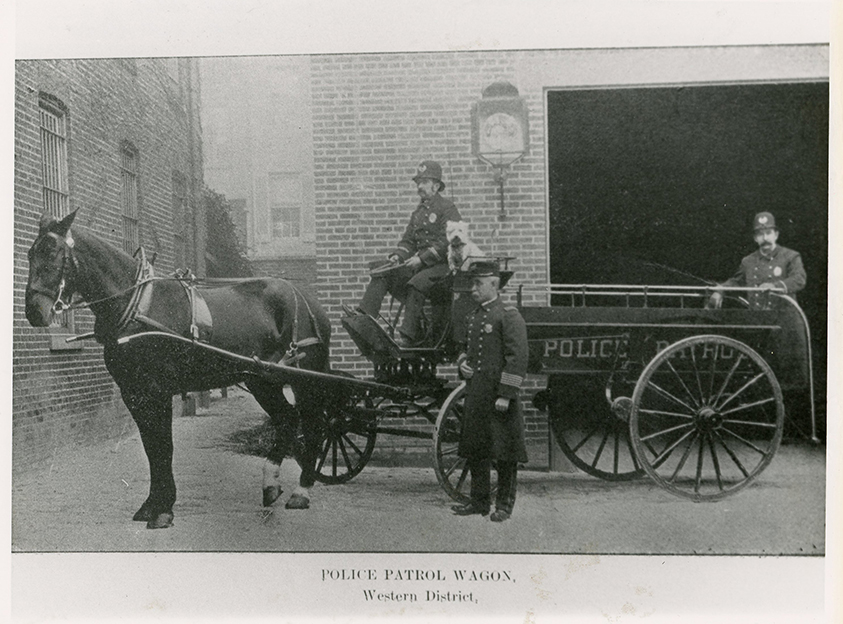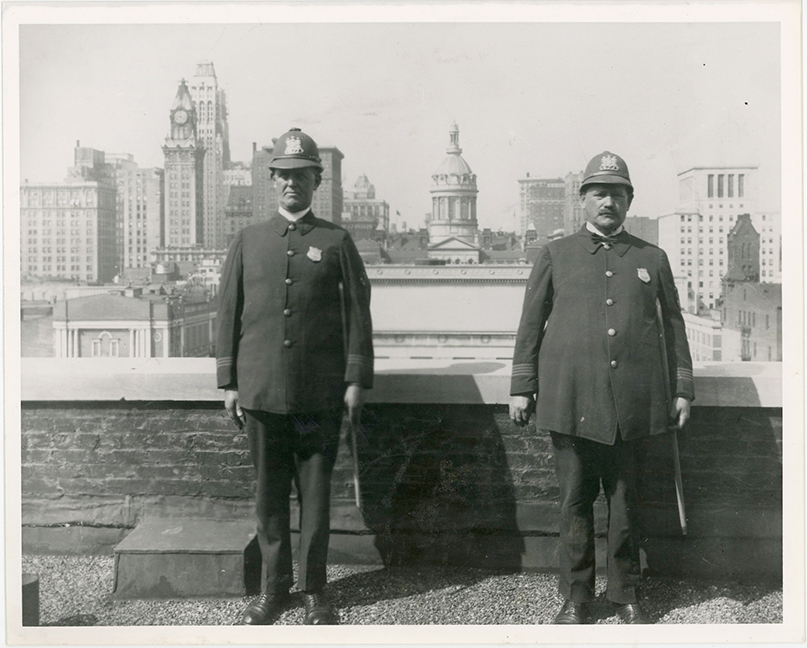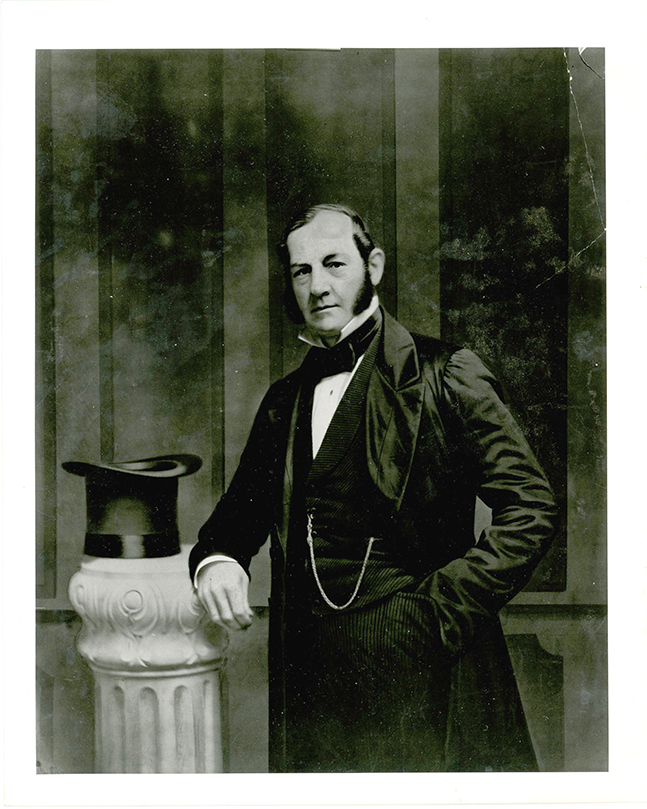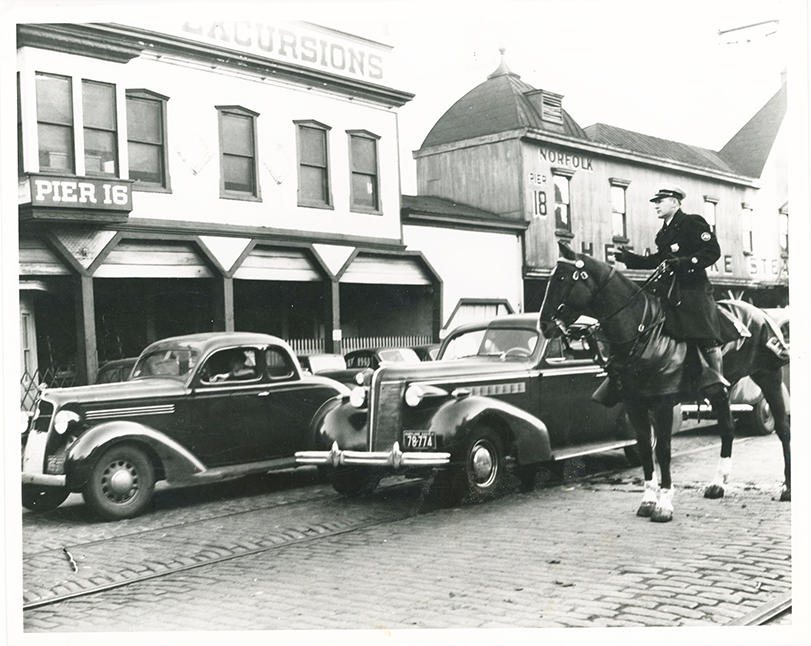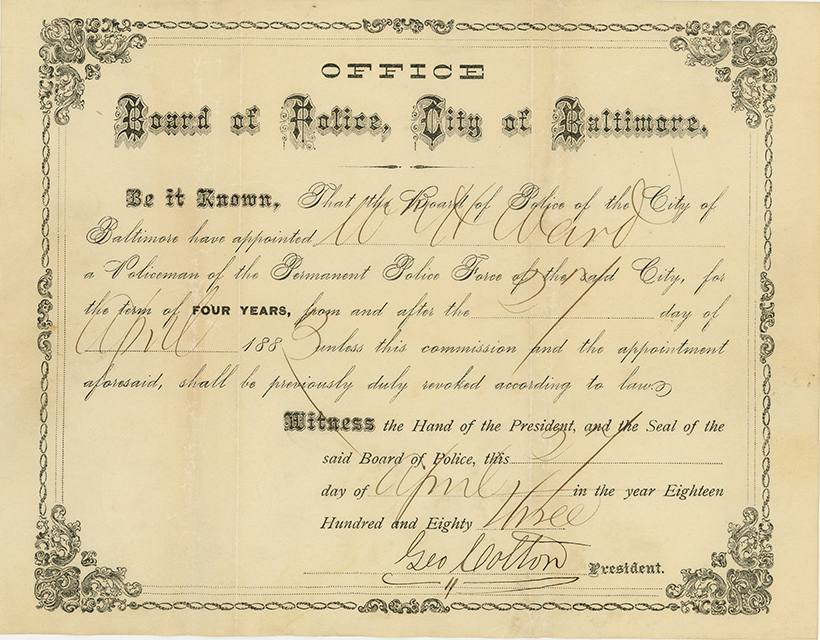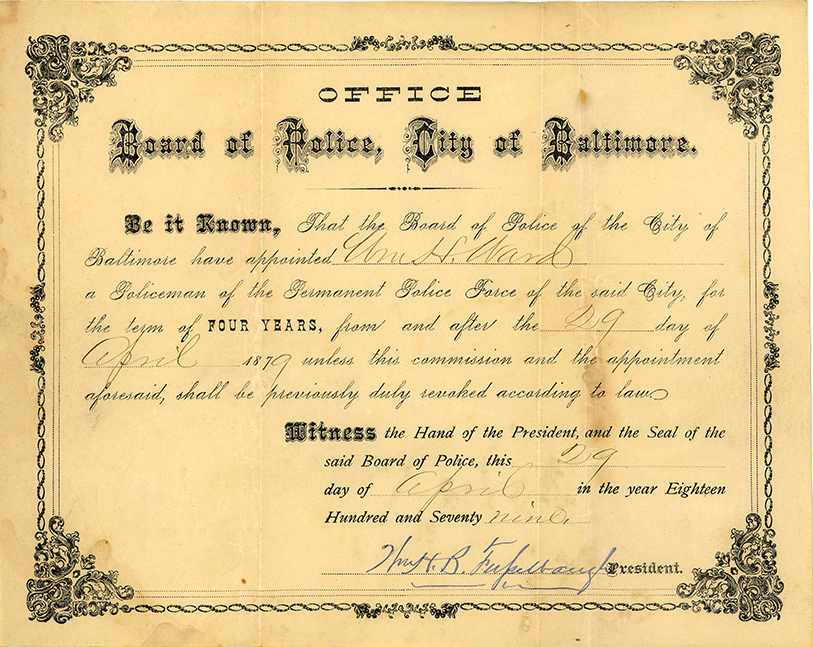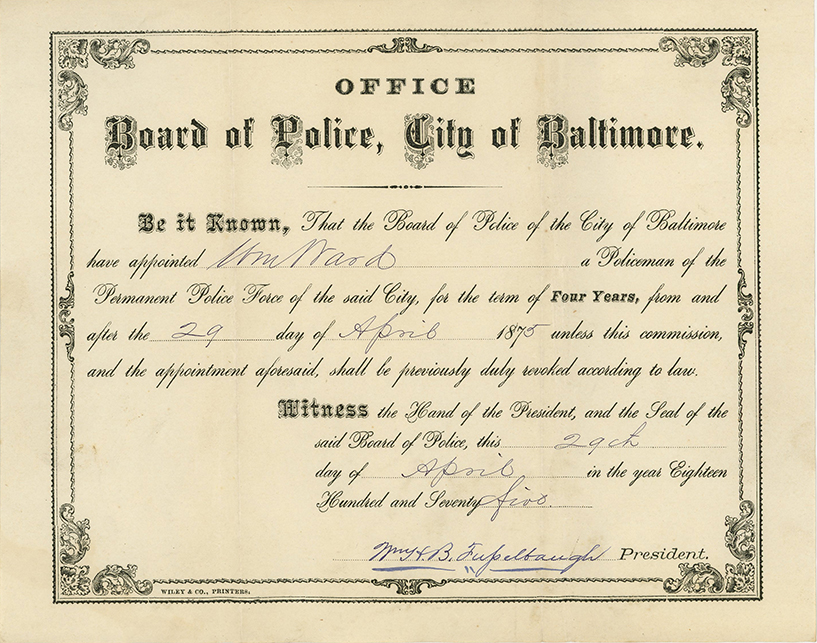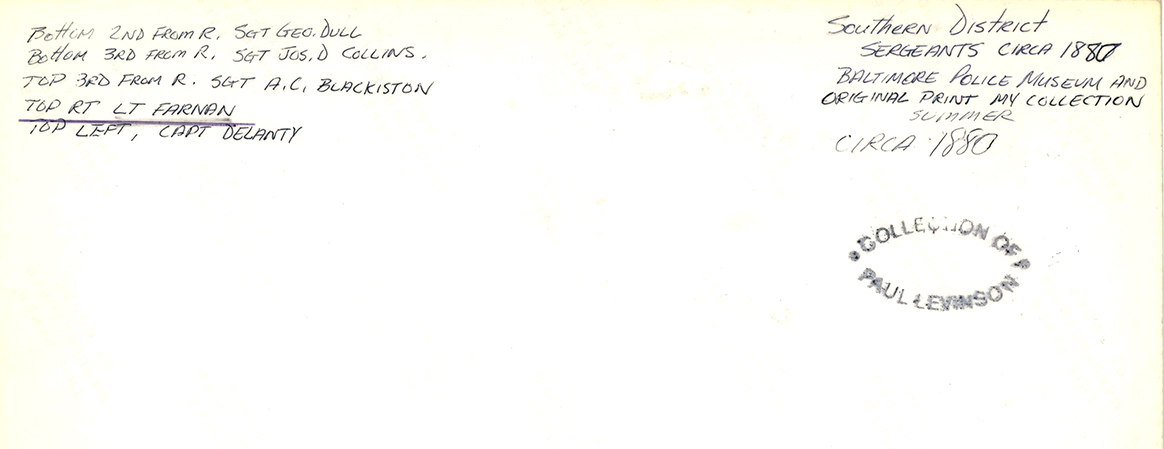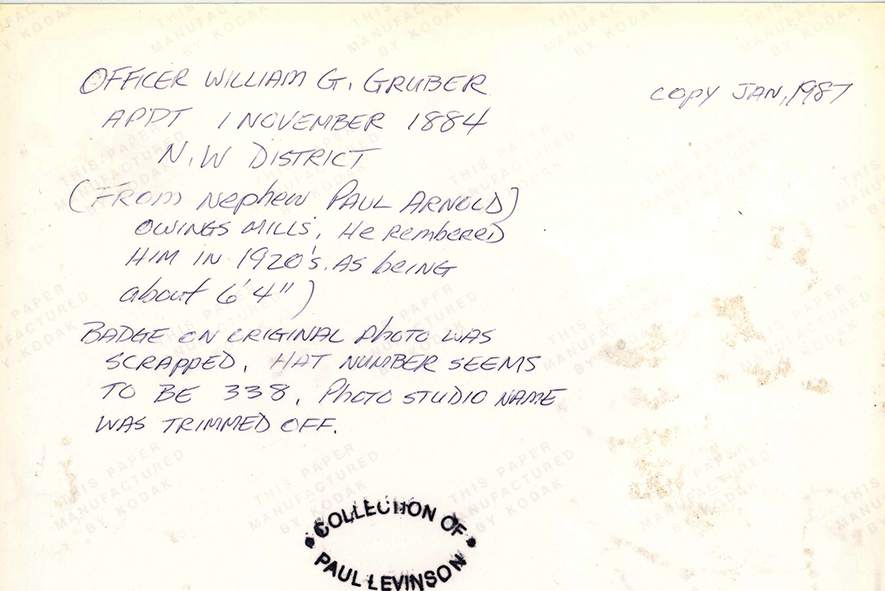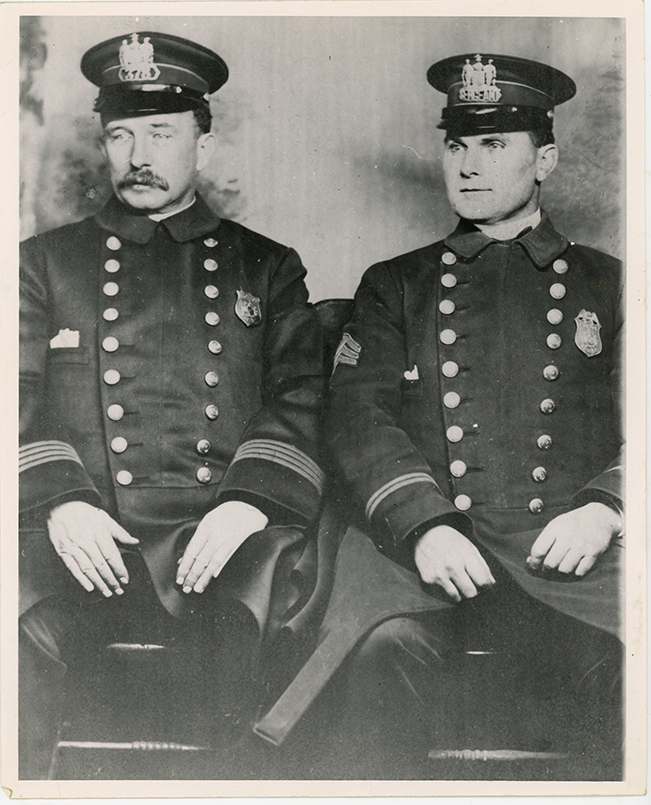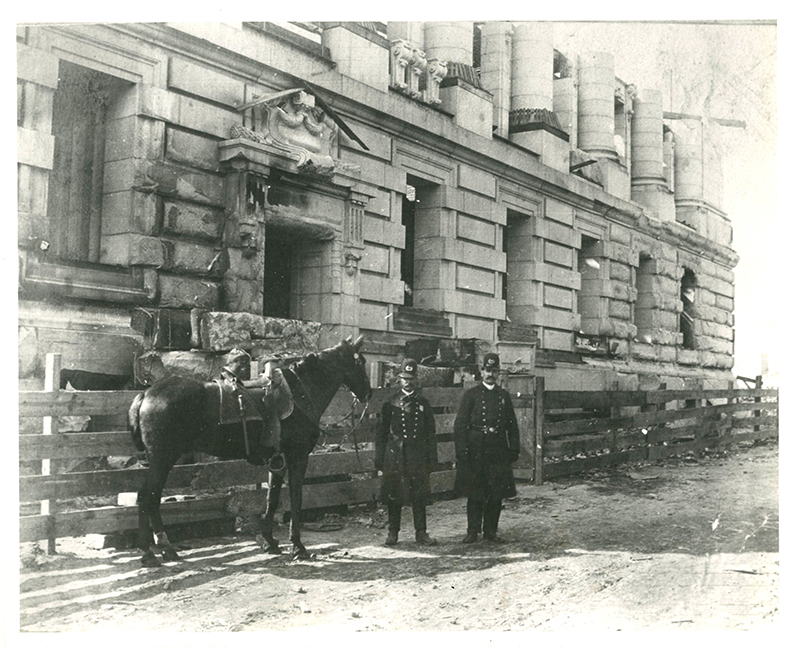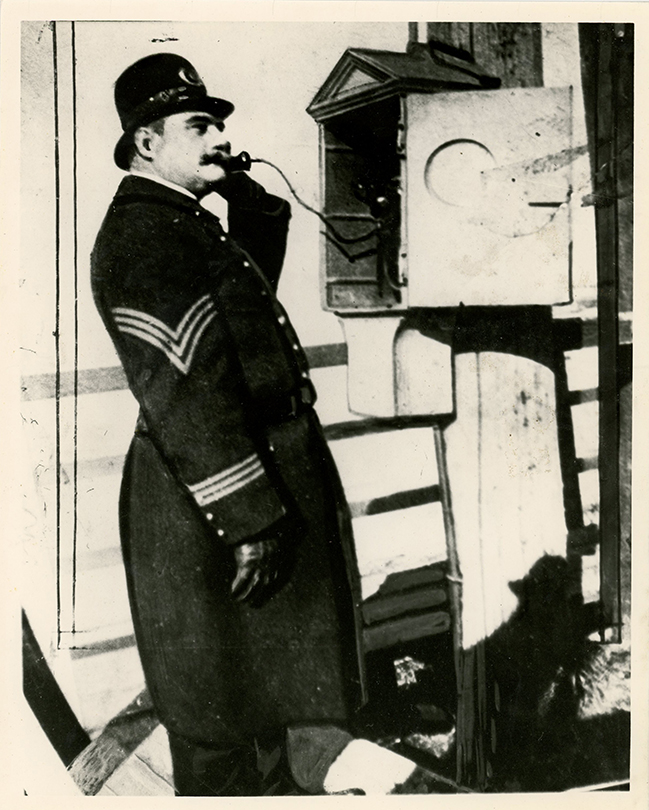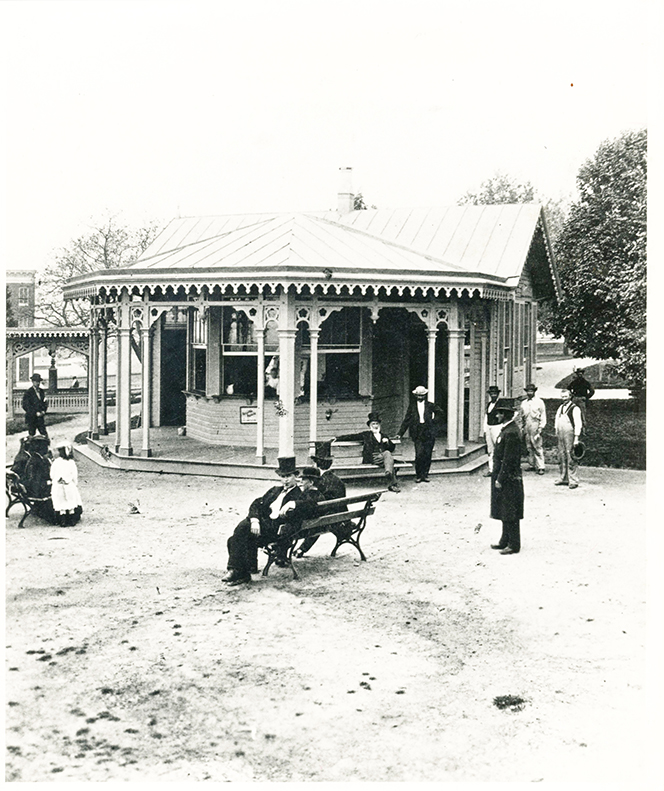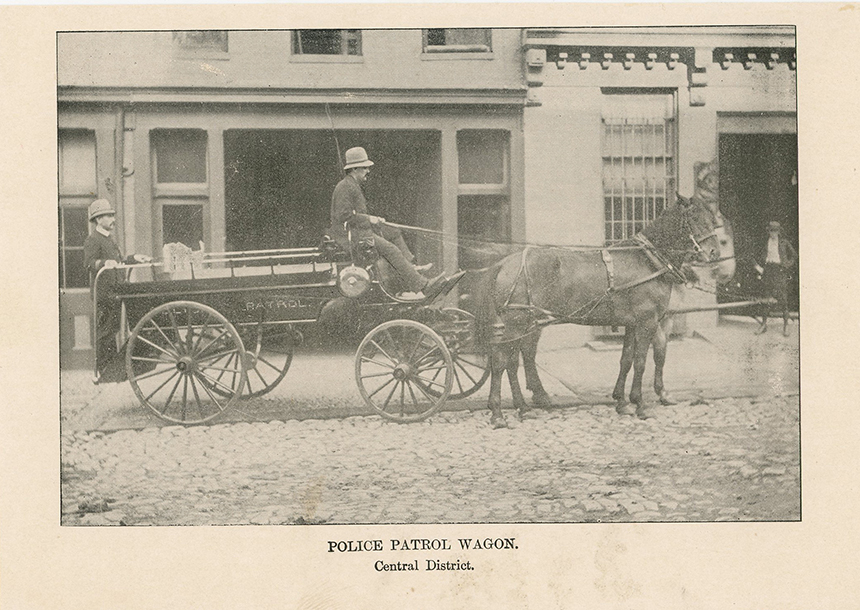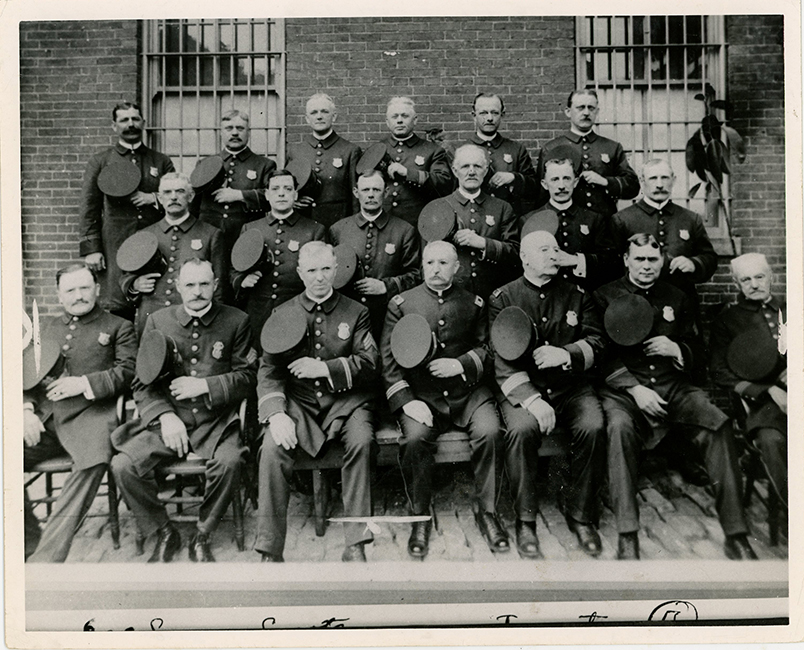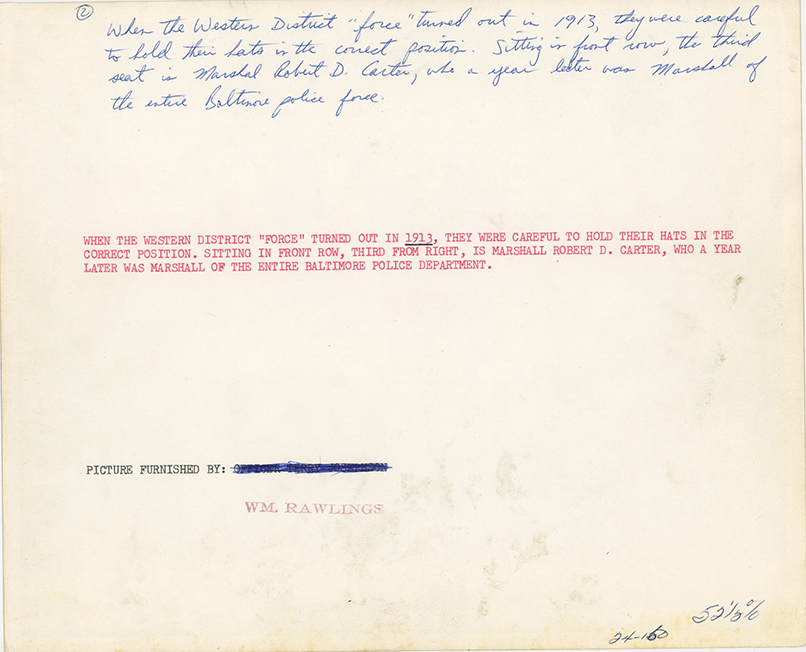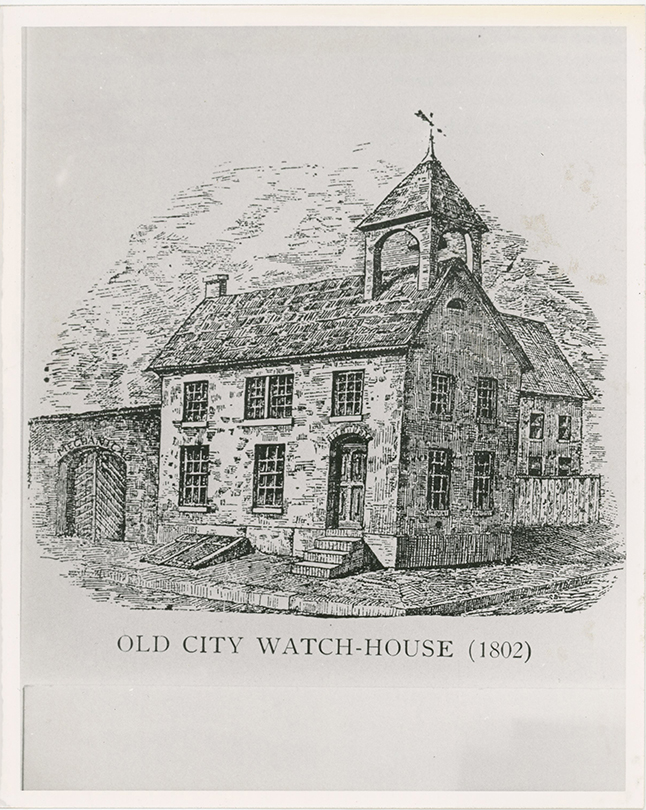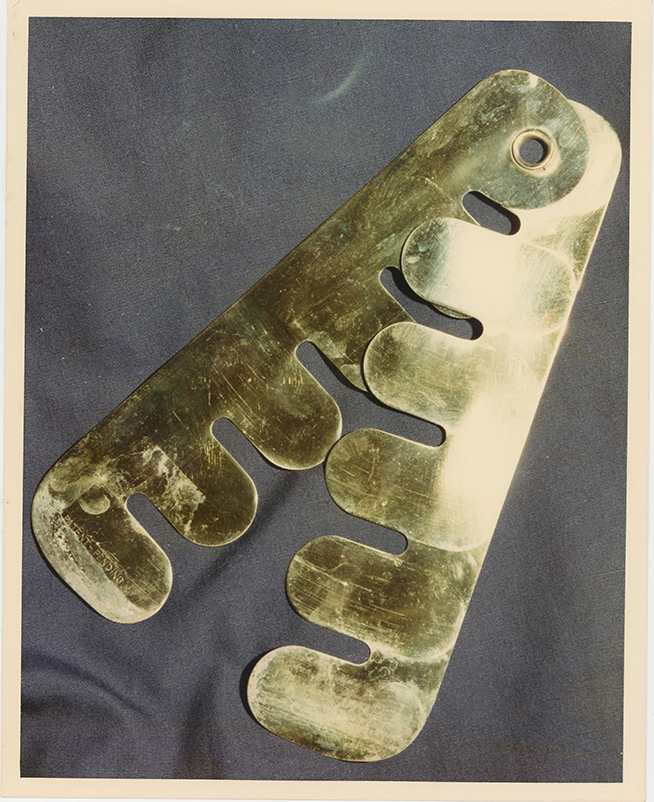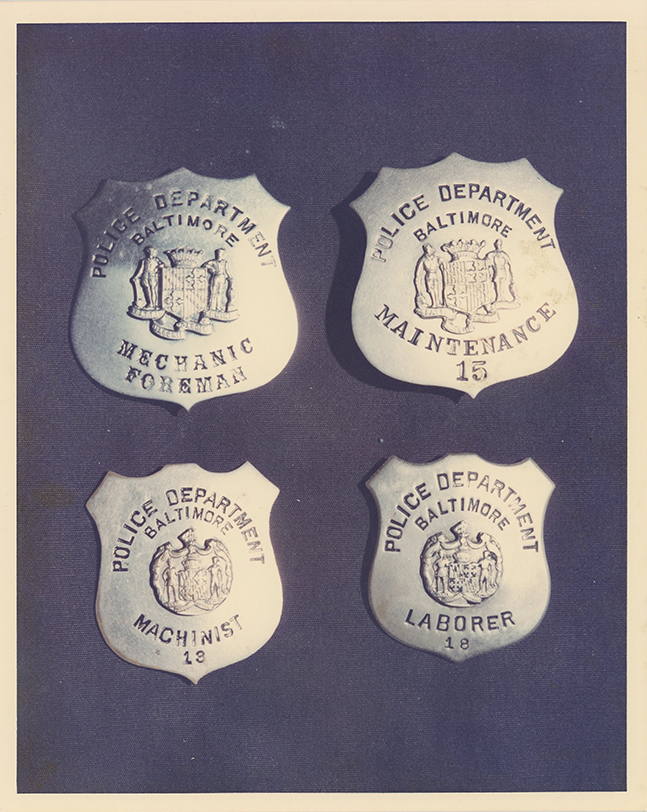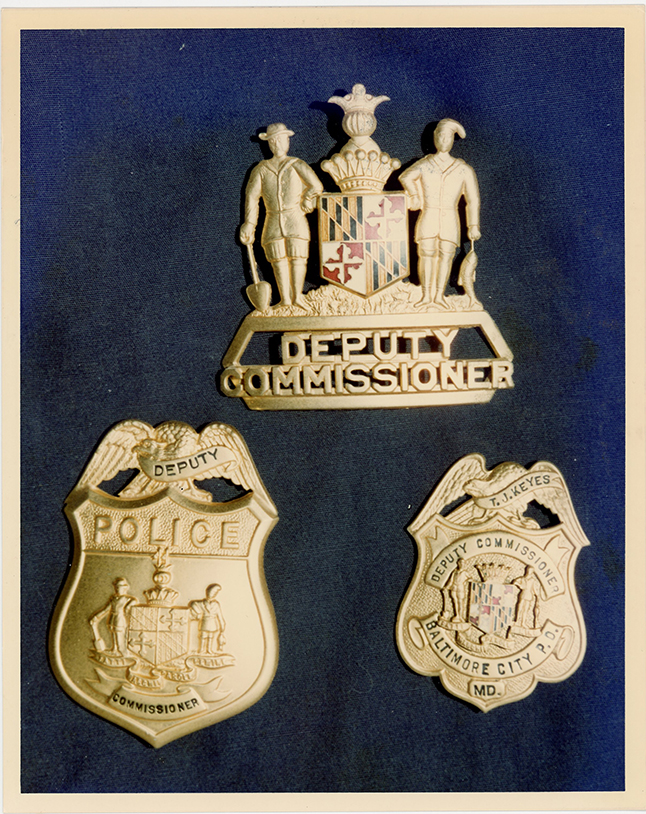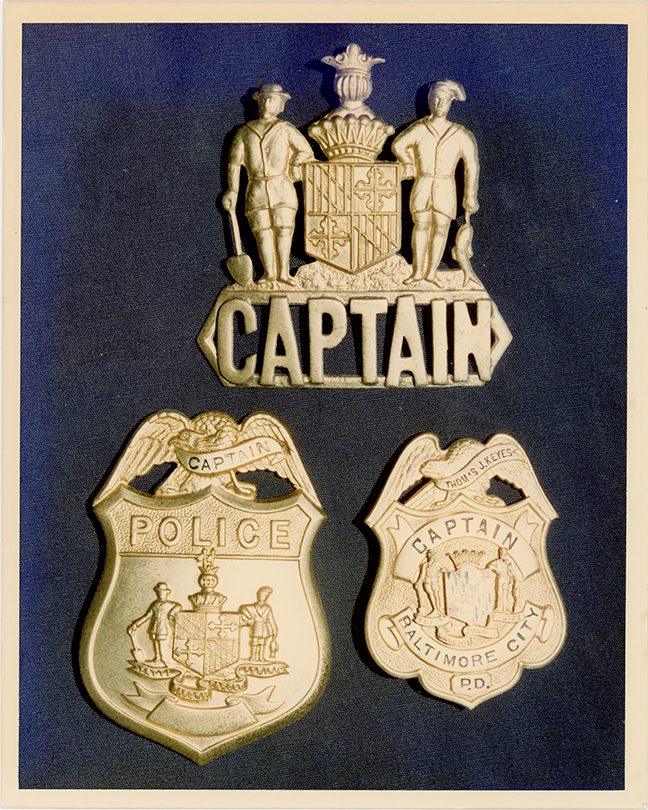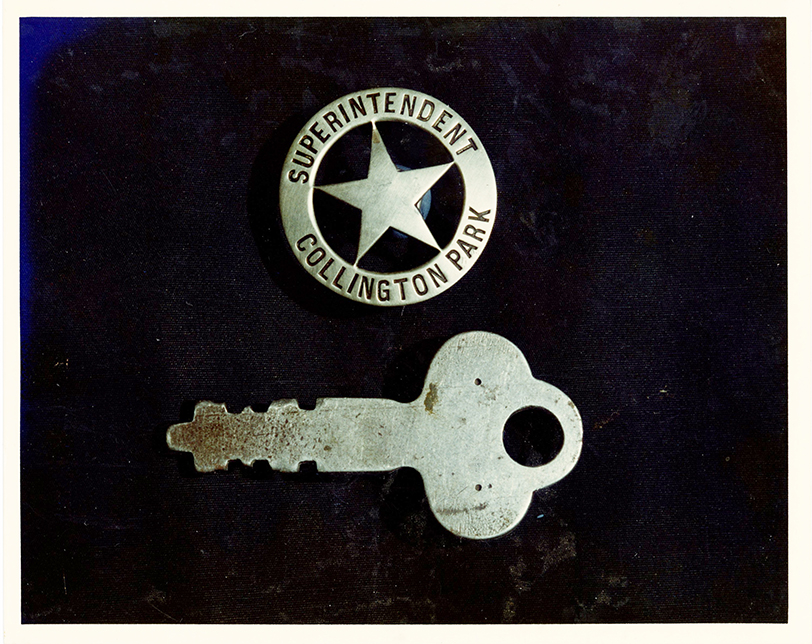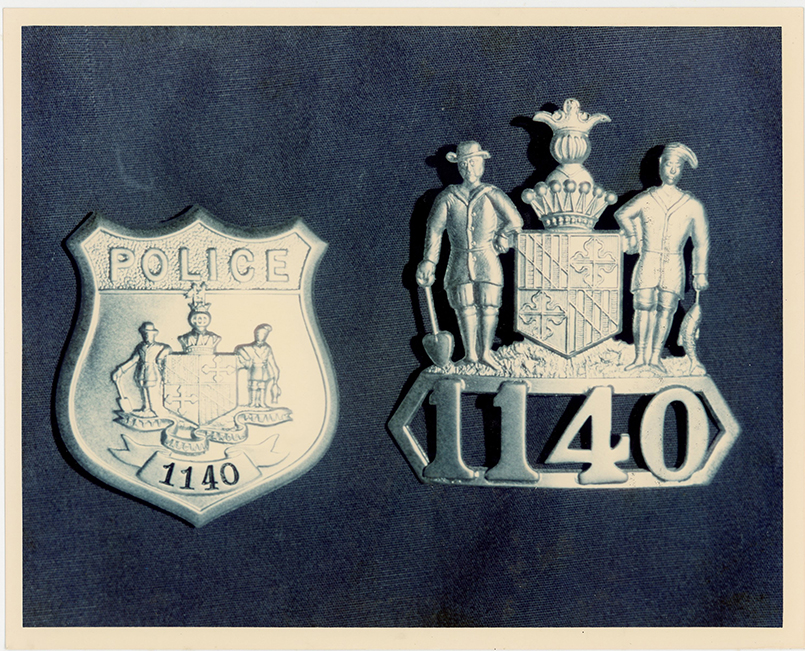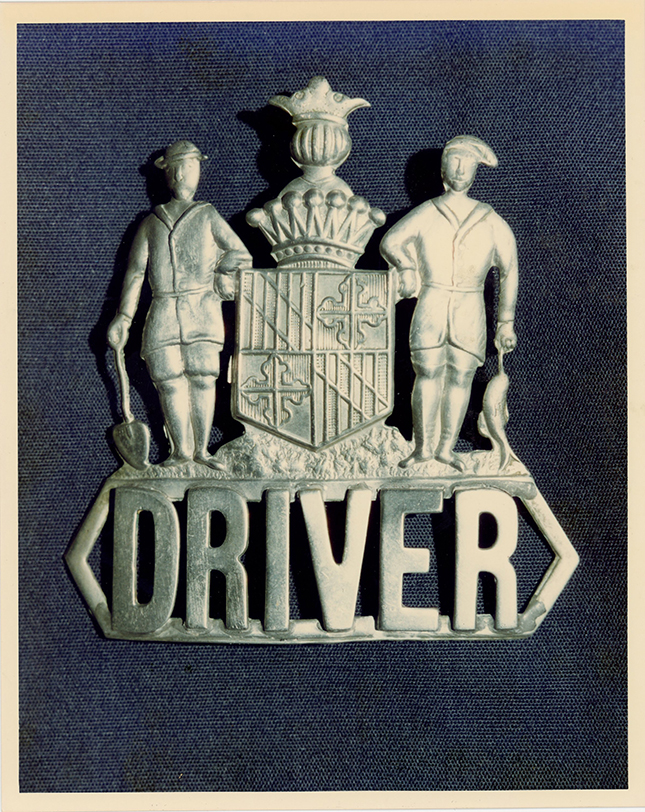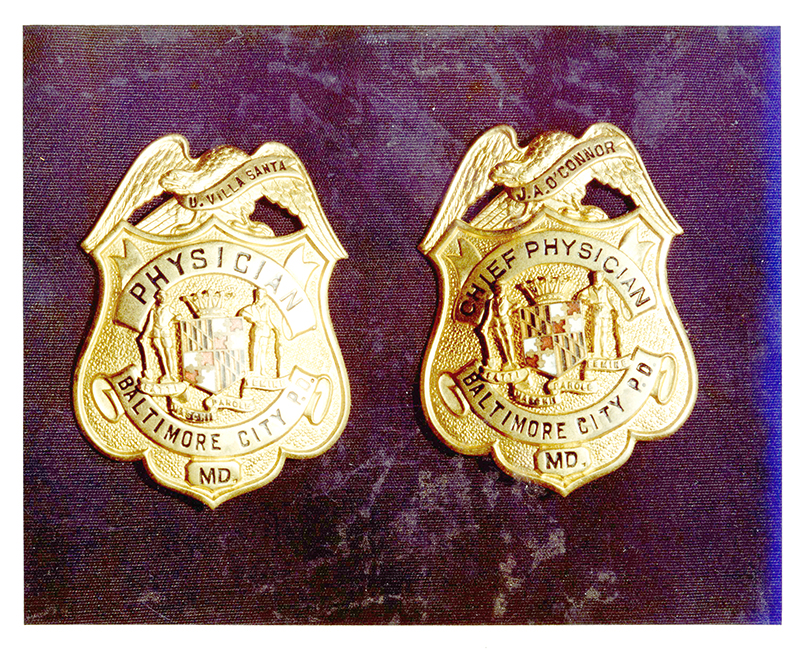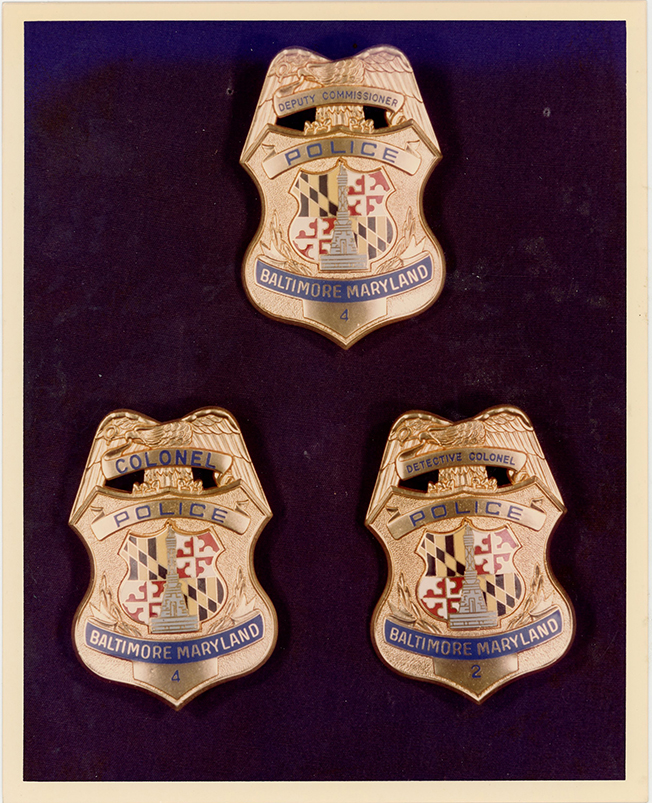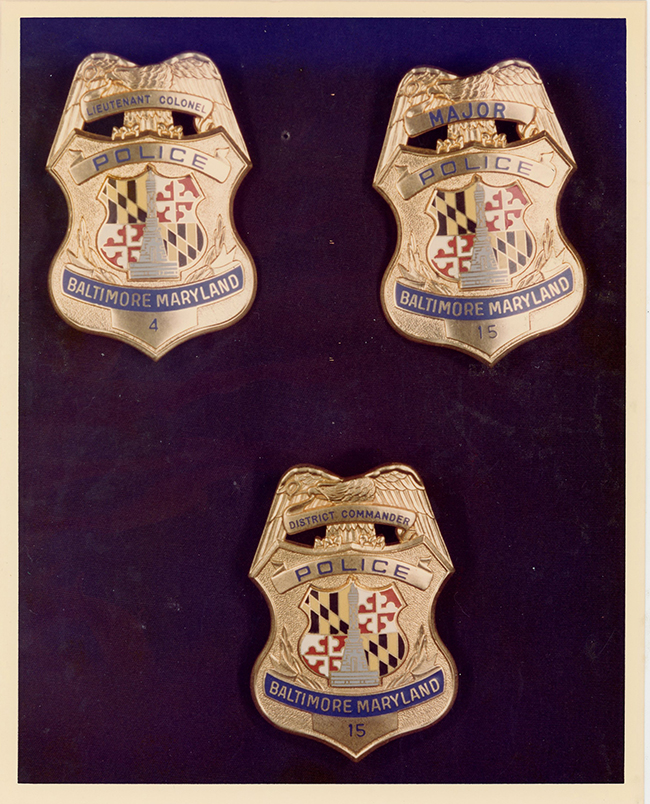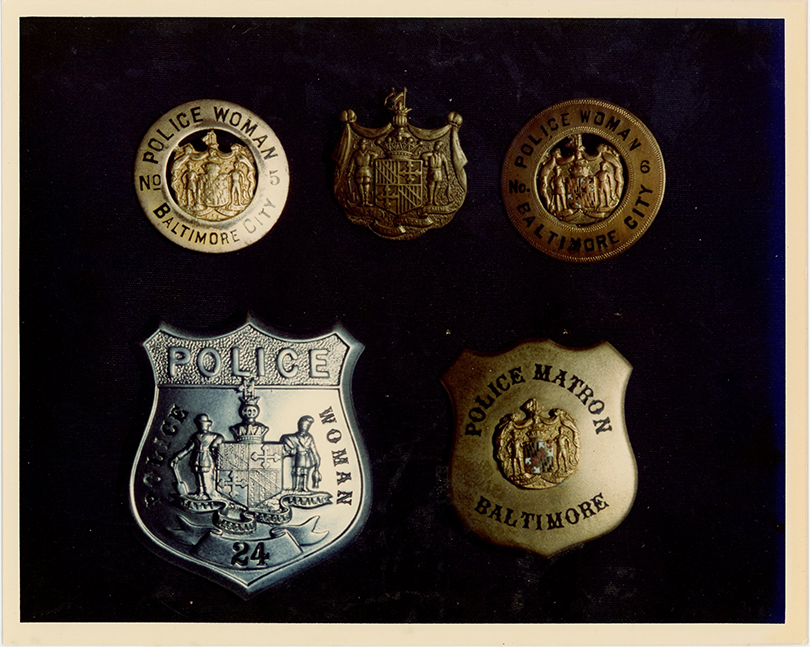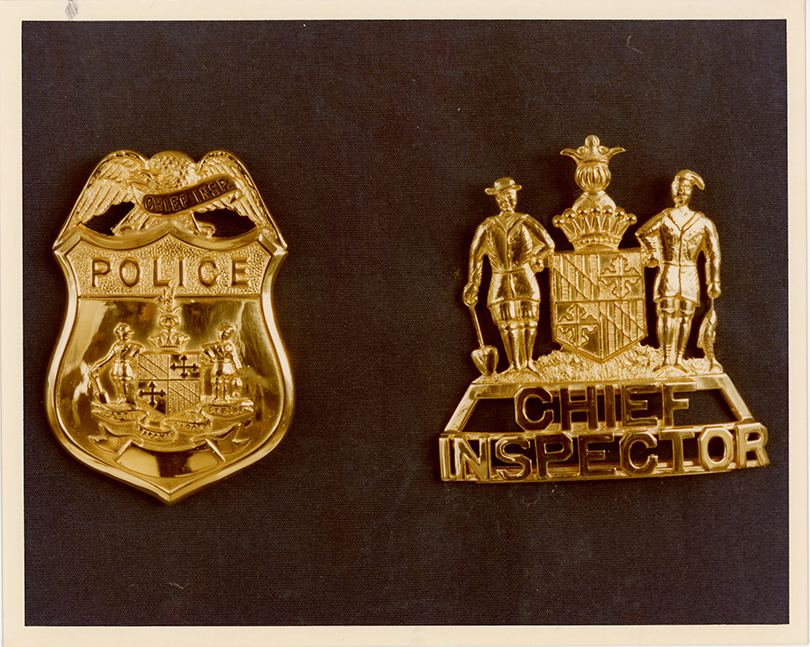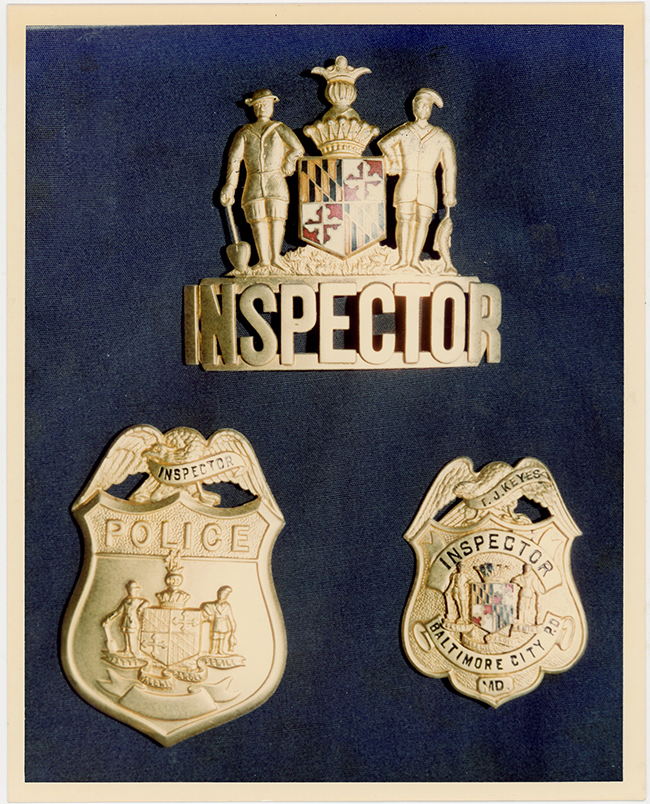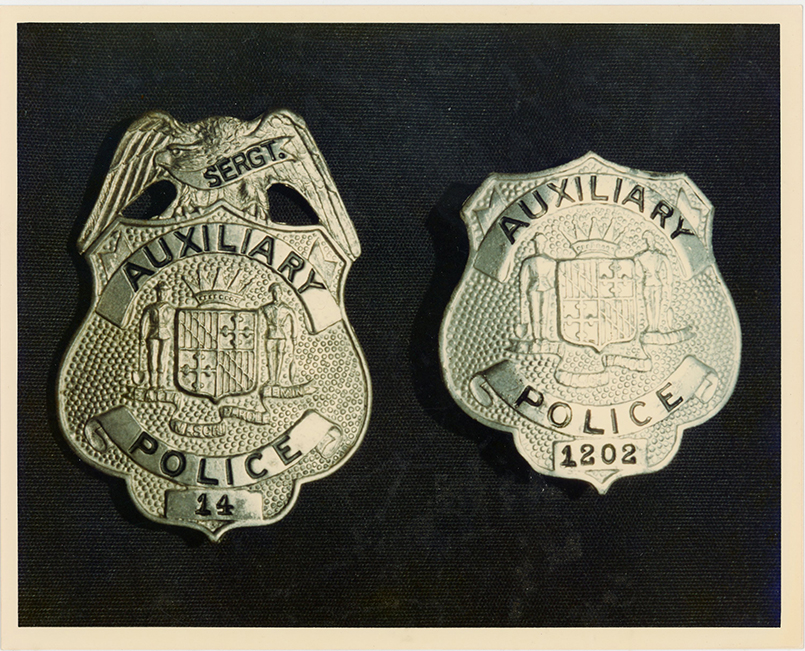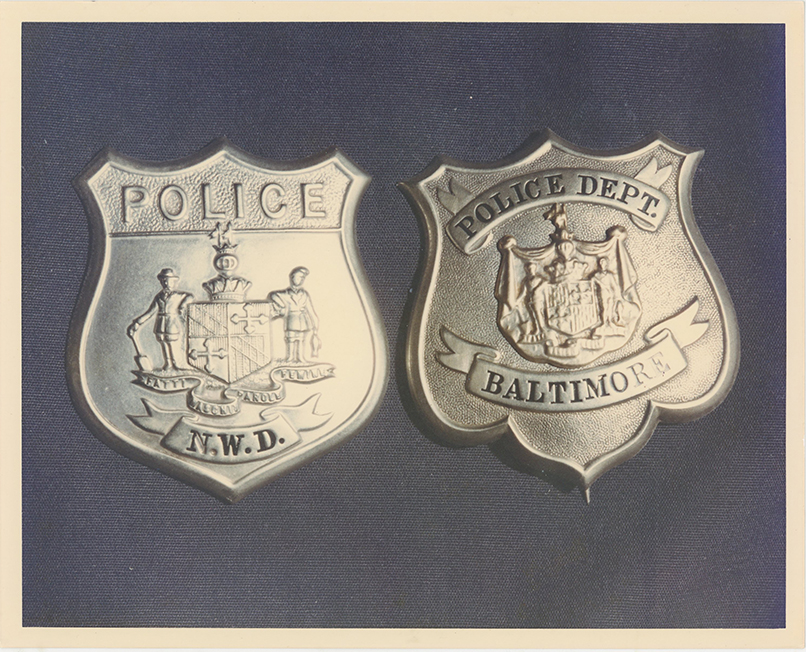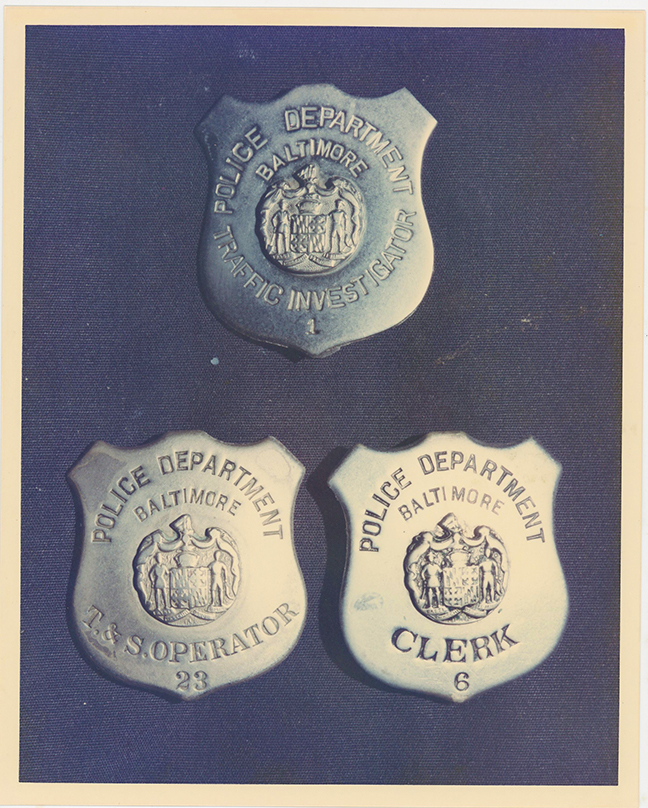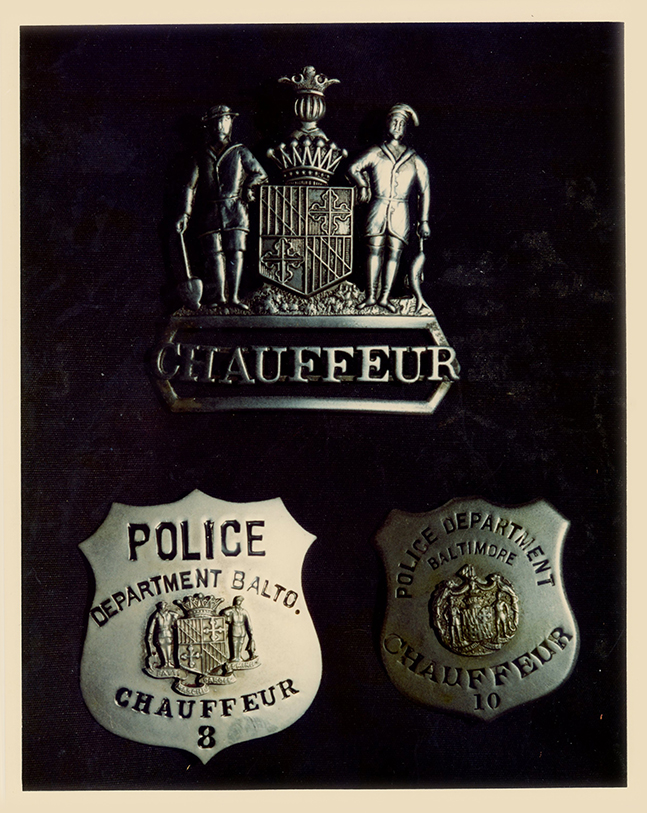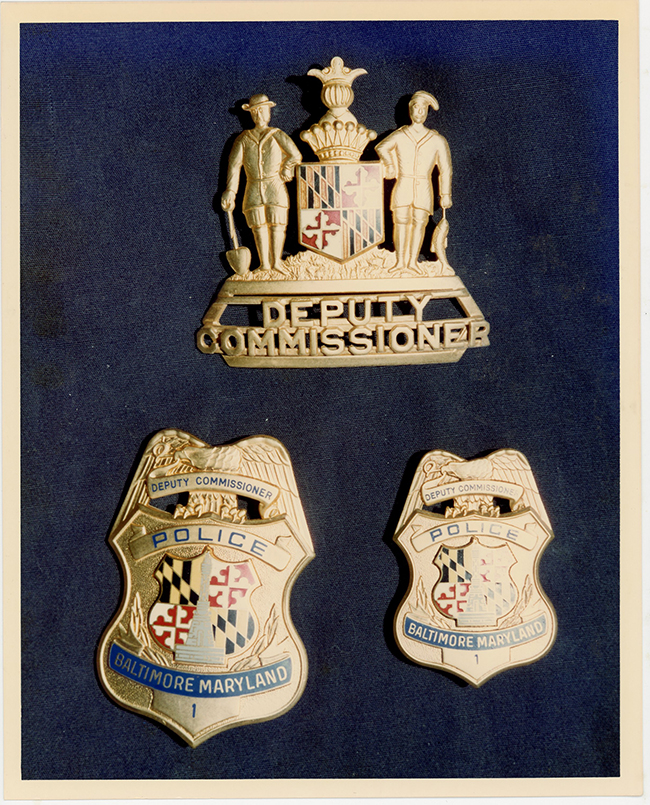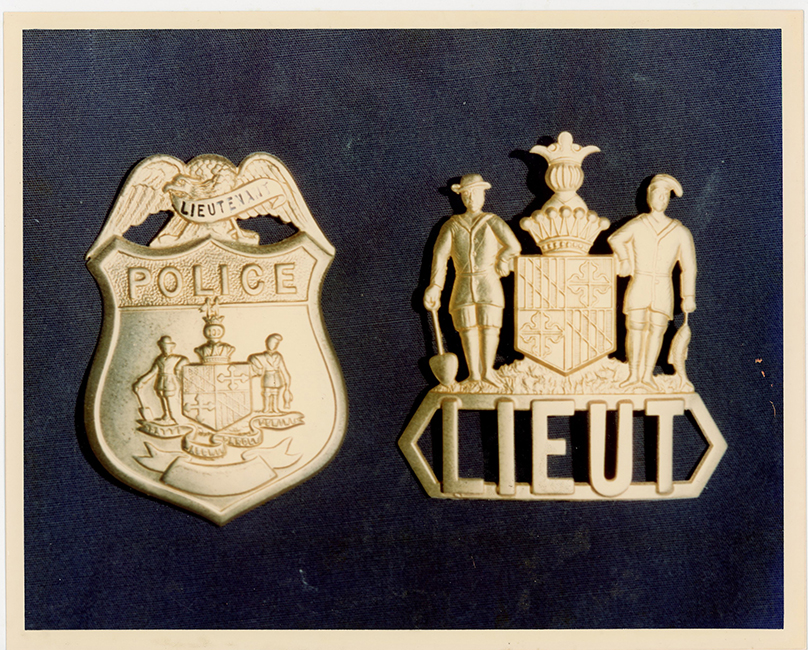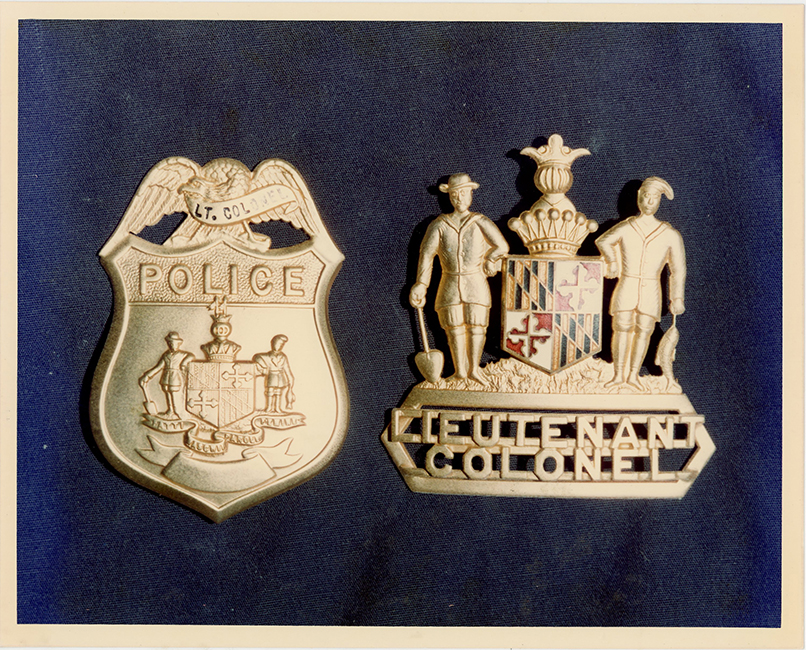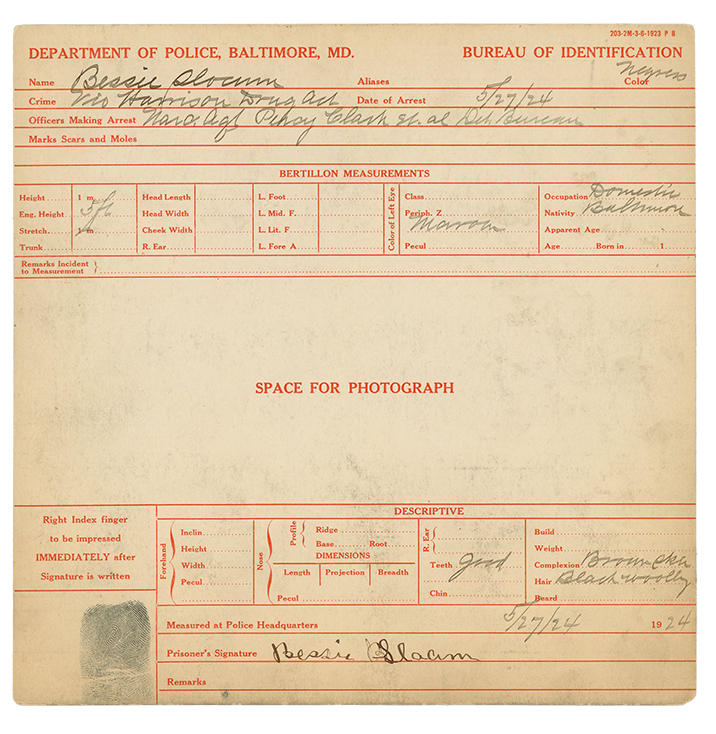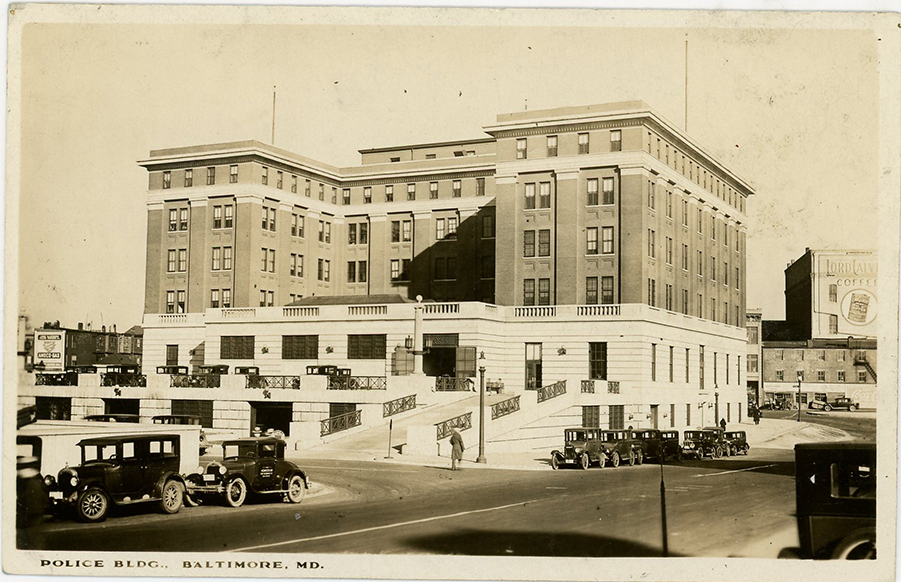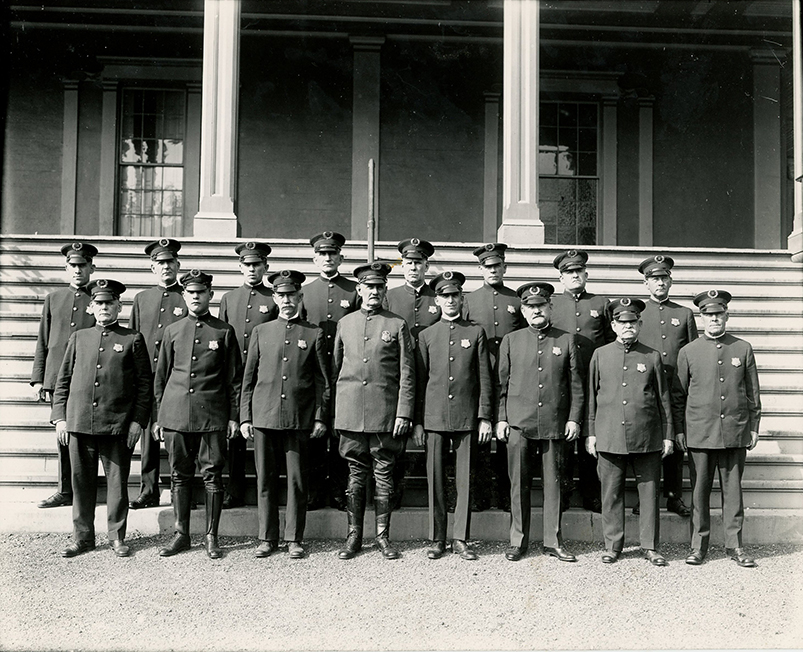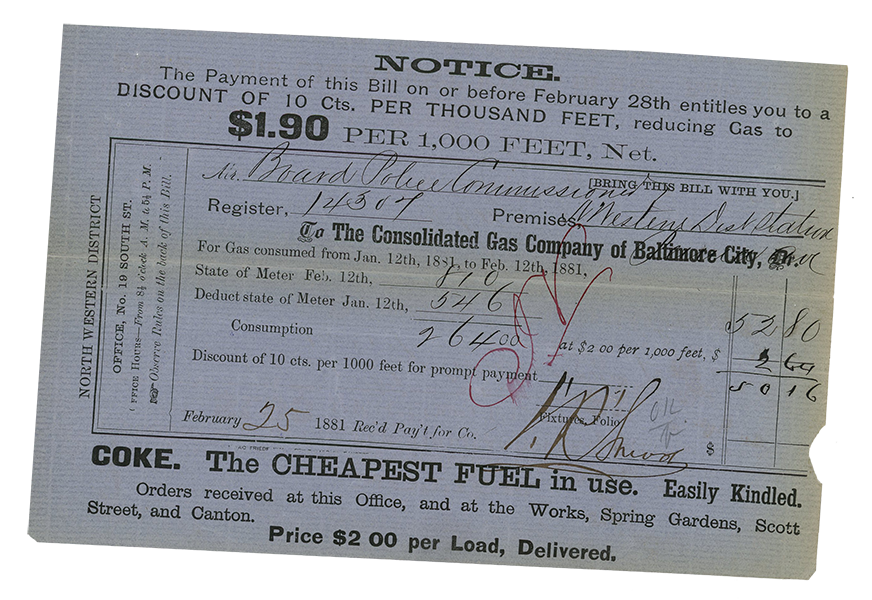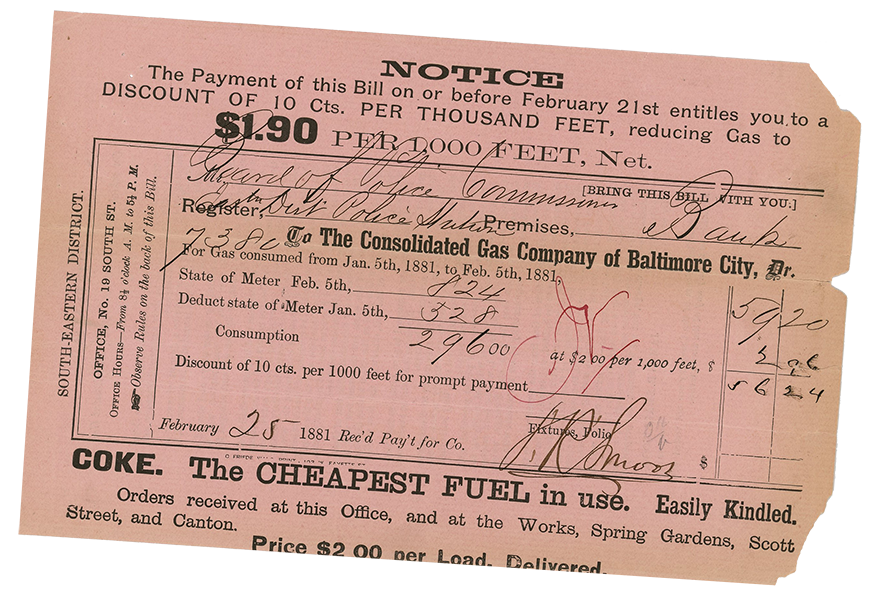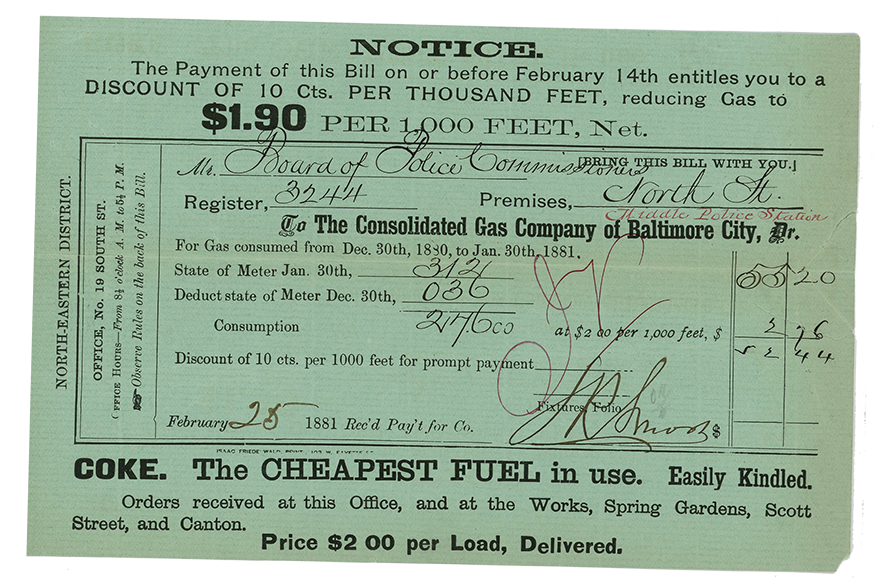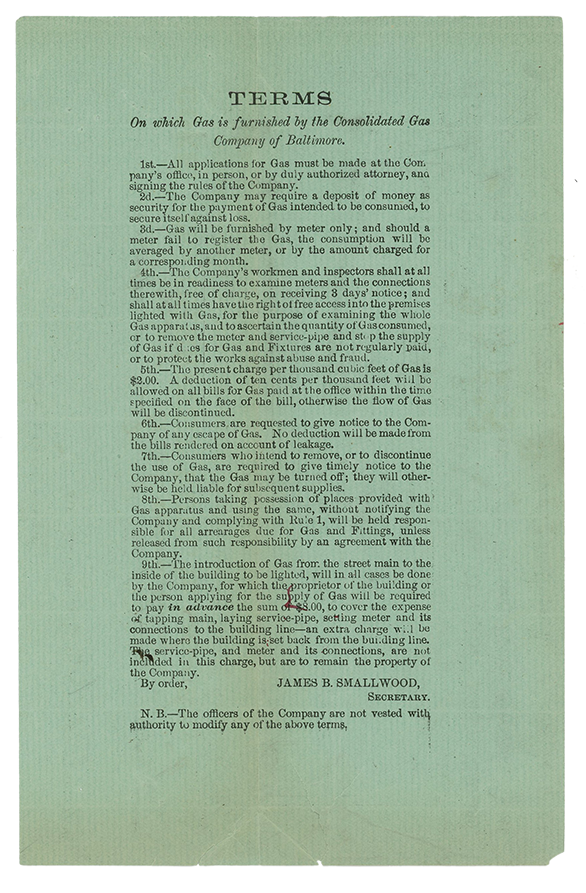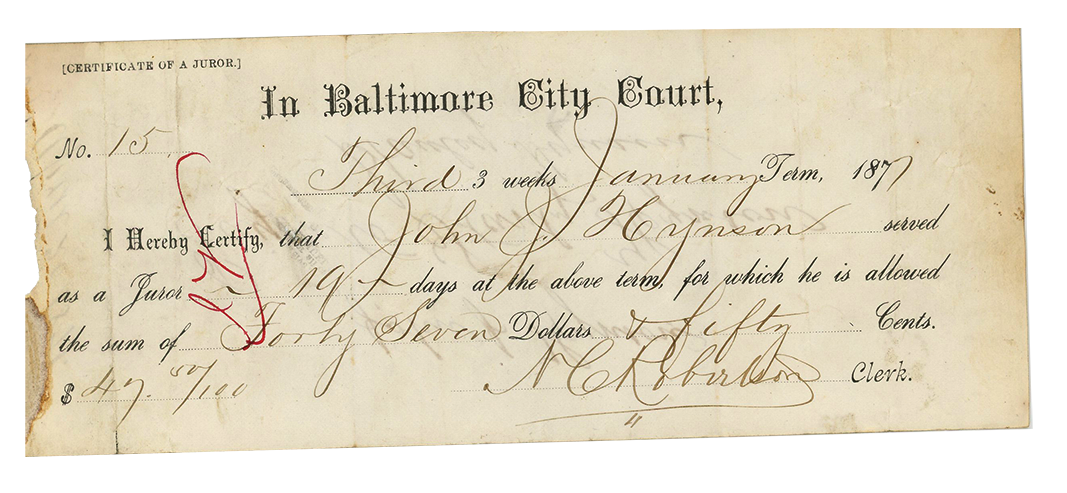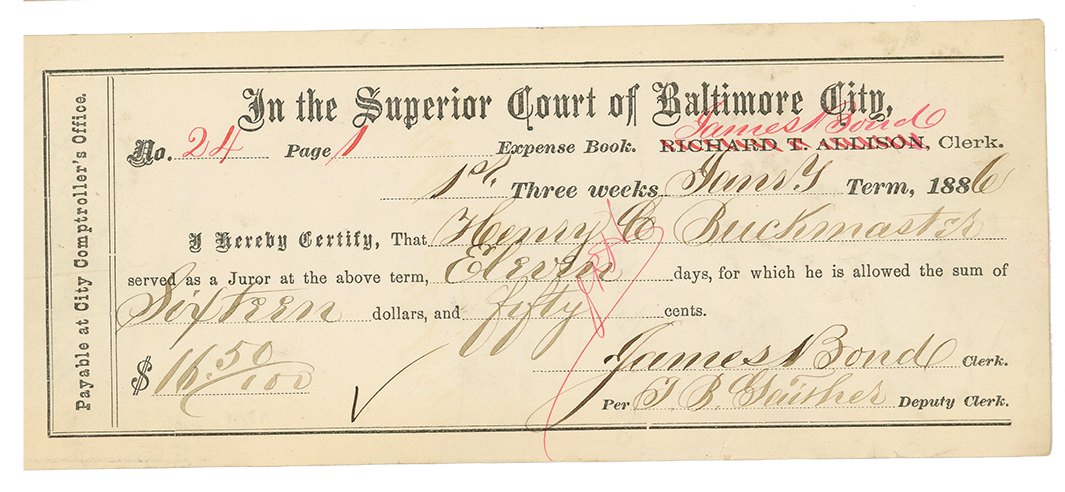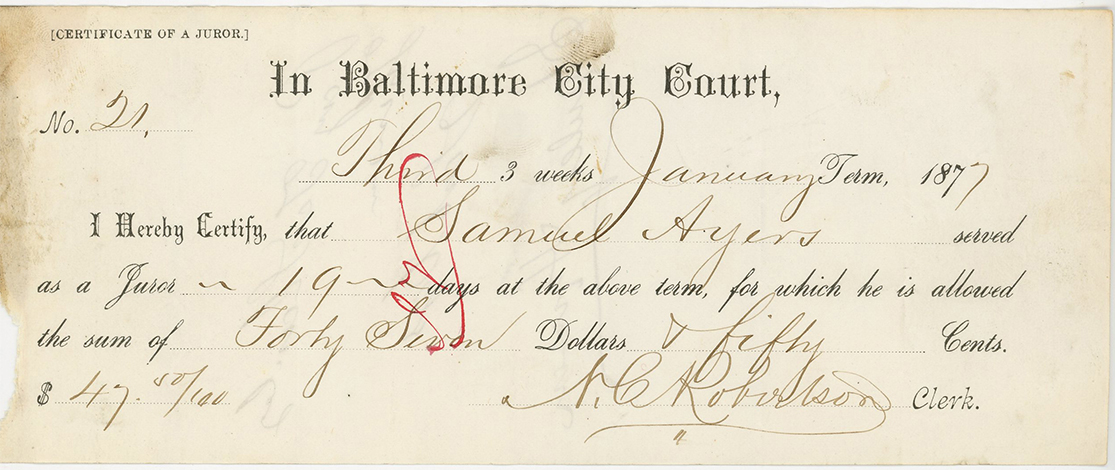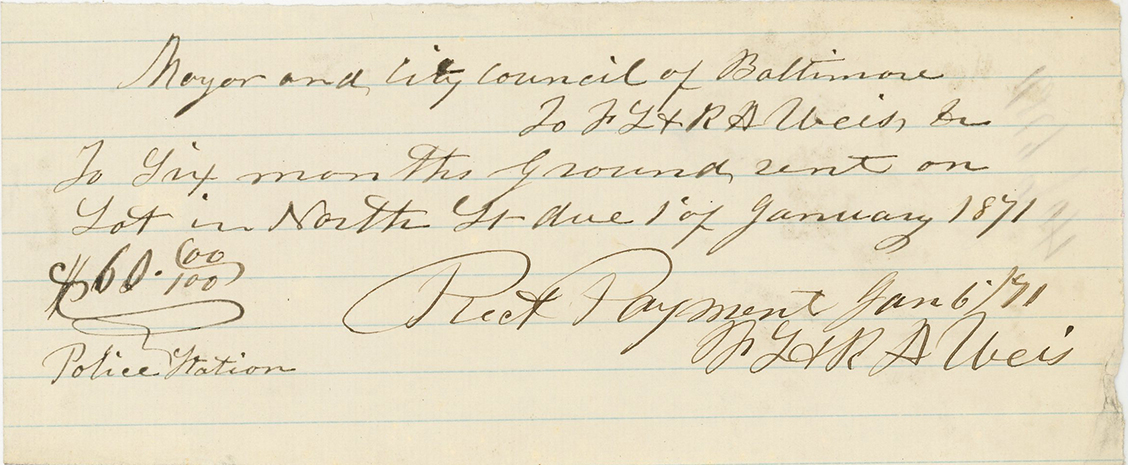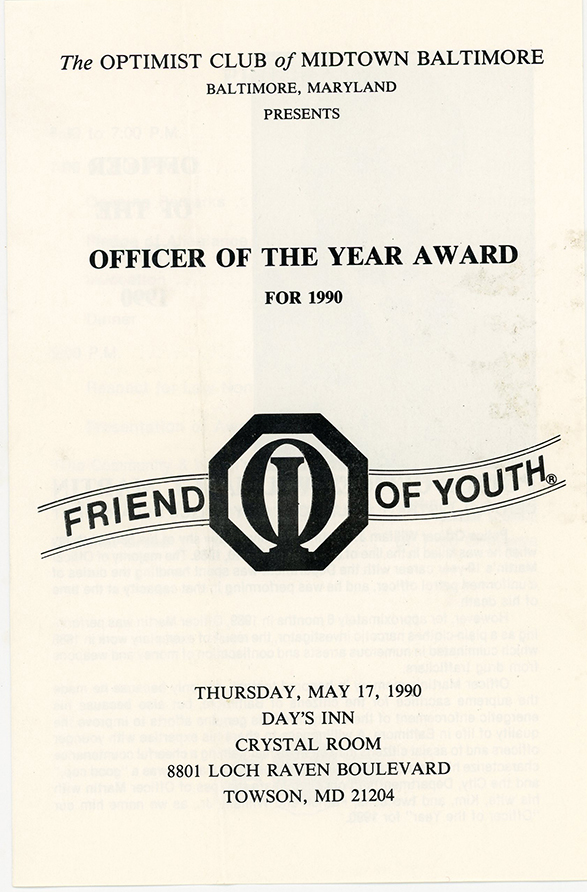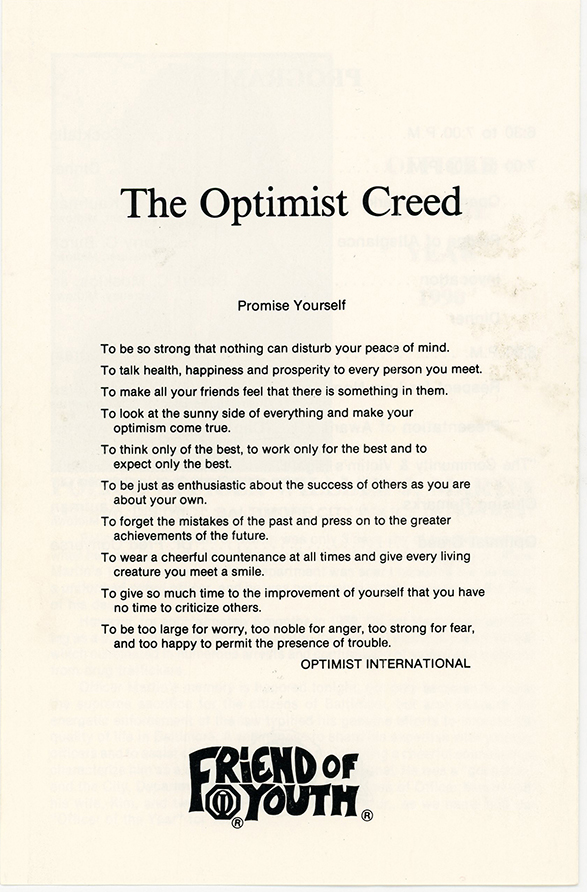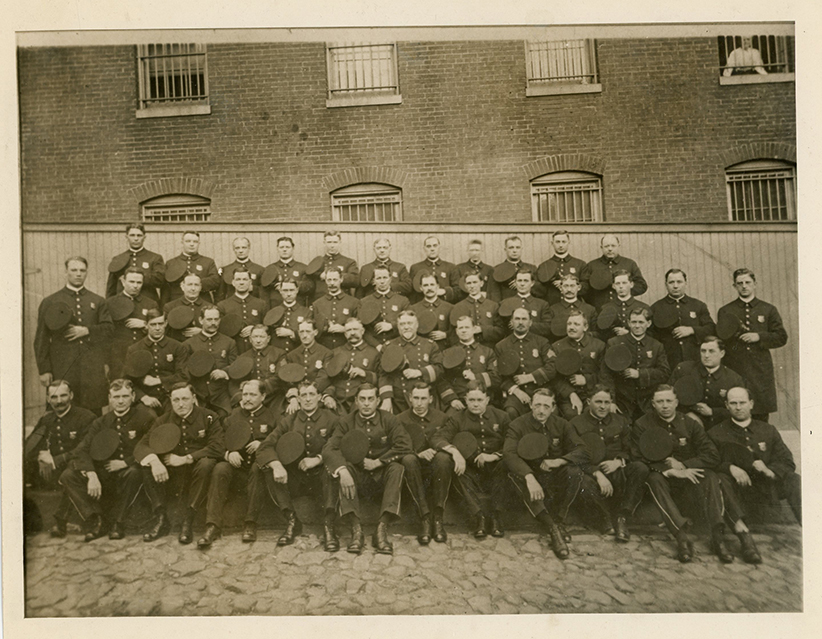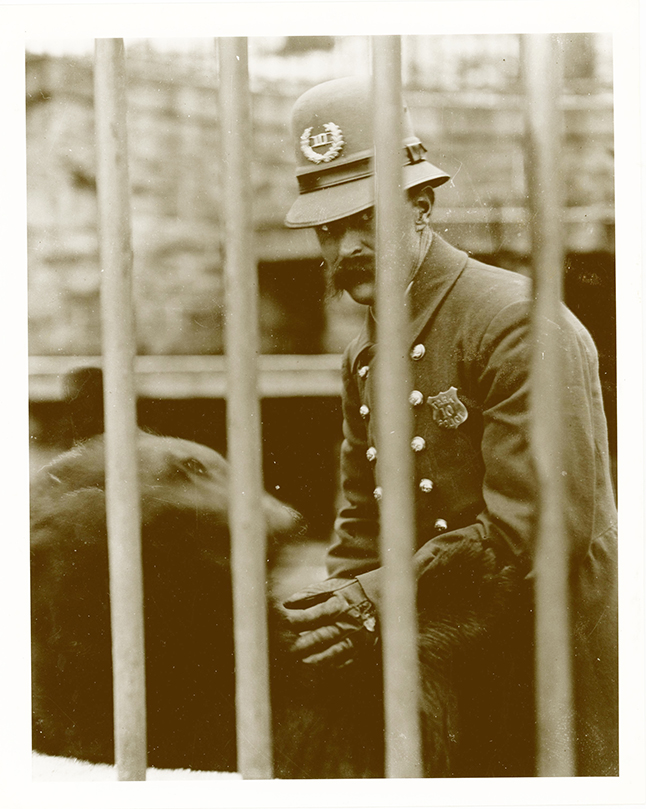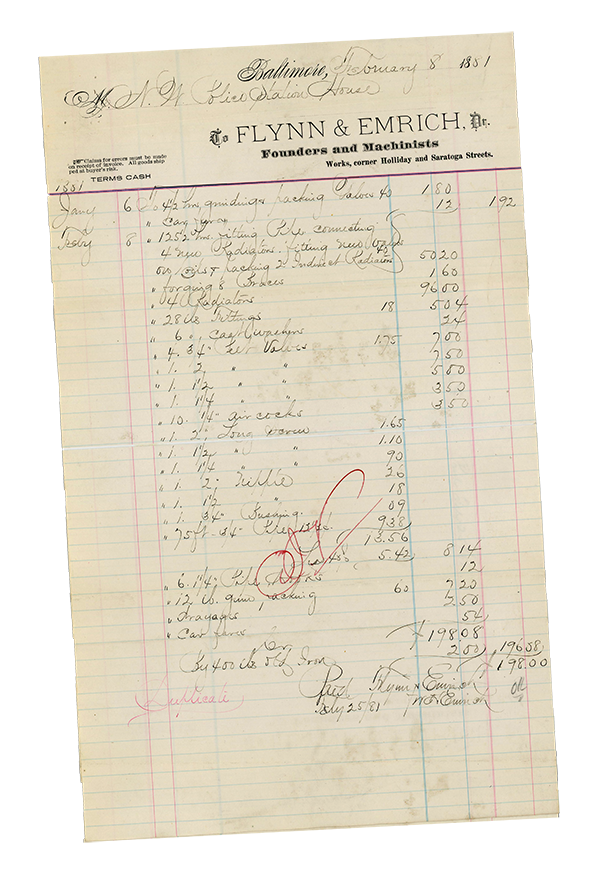
Quick Response Team
We Were Cops Once . . . and Young
Brief History of the Baltimore Police Department Quick Response Teams
By Ret Lt. Joe Key
ACKNOWLEDGMENTS
The history of QRT is written large by many of its members then and now. Contributing to that history and to the writing of this history were: (In alphabetical order) Doug Bryson, Steve Coughlan, Paul Davis, David Datsko, Steve Kuhn, John Maguire, Mike Mulligan, Ed Schillo, Sam Tress, and Curtis Willis. These men took time out from very busy schedules to provide their recollection of milestones, salient events, dates, and photos of that history. Each contributed mightily when they were in the teams and did so as well to this writing. Also, others I couldn’t contact deserve recognition for their contribution to bringing the teams and their equipment into the 21th century. Eventually, through the determined efforts of men like John Christian, Jerry DeManss, Bob Edwards, Don Healy, Ray Jones, Bob Letmate, John Lewandowski, Jan Richmond and unsung others, the Baltimore Police Department’s SWAT teams were turned into an internationally recognized, professional unit worthy of any police department in the world.
My own efforts in starting QRT were minimal in comparison to some, if not all, of these men. I just happened to be in the right place and had, according to some supporters and opponents alike, the bullish temperament and unyielding nature that was required at the beginning to keep the sometimes square wheels from totally falling off the QRT machine long enough for the program to endure. The aforementioned men took that humble start and turned it into what it has become today. It was an honor to have worked with them and a privilege to write about what their efforts have achieved.
PROLOGUE
With apologies to Lt. General Harold Moore for co-opting, in part, the title of his book about the 7th Calvary’s insertion into the la Drang Valley in Vietnam in 1965, the nearing of the 40th anniversary of the beginning of the Baltimore Police Department’s Quick Response Teams has caused me to reflect back on that time and the good men who went above and beyond the call of duty to drag the department into a new and necessary element of policing in the 20th Century. I’m certainly not comparing the sacrifices of the troops of the 7th Calvary on the battlefield to the trials and tribulations of those first QRT officers. While those first officers did face dangerous situations with inferior equipment and minimal training, their main battle was one of survival in a department which was staffed by a command element, except for an important few, and rank and file officers who became apoplectic at even the whispered thought of SWAT being amongst them. Those men’s willingness to train in their off-duty time, spend their own money to buy equipment, and suffer the constant derisive comments by brother officers laid a foundation for the outstanding unit QRT/SWAT has become. The following quote from Theodore Roosevelt’s "The Man In The Arena" speech at the Sorbonne in Paris, France on April 23, 1910 applies to those men and to their critics as well:
It is not the critic who counts; not the man who points out how the strong man stumbles, or where the doer of deeds could have done them better. The credit belongs to the man who is actually in the arena, whose face is marred by dust and sweat and blood; who strives valiantly; who errs, who comes short again and again, because there is no effort without error and shortcoming; but who does actually strive to do the deeds; who knows great enthusiasms, the great devotions; who spends himself in a worthy cause; who at the best knows in the end the triumph of high achievement, and who at the worst, if he fails, at least fails while daring greatly, so that his place shall never be with those cold and timid souls who neither know victory nor defeat.
One factor that caused a measure of resentment/jealousy by command and the rank and file was the portrayal of SWAT cops in the 70's television program “SWAT.” Even the name connoted violence; i.e., to crush a fly with a single swat. The program exaggerated the image of the operators as being glory boys whose main job was to lift weights, run endless loops through obstacle courses, jump off of buildings or out of perfectly good helicopters, suck down copious amounts of CS gas without blinking, play with various guns, and generally look good for the cameras when they leaped out of the back of a large, black, armored, very menacing looking, truck with guns blazing. Admittedly, some of those activities–excluding jumping out of trucks with guns blazing, etc.–were a necessary part of the job and attracted candidates who were drawn to those types of endeavors. That image, however, served to heighten the intensity of the already very intense interdepartmental power struggles, political patronage, and turf protecting in the command ranks, which made launching the QRT program damn near impossible. Finally, limited funds and the necessity of committing manpower to street crime reduction operations determined the nature, quality, and quantity of equipment that could be purchased; the time and manpower that could be committed to the training program; and the deployment operational strategies of the teams on the street.
Although the “SWAT” television program is no longer on the air, the image it perpetrated still survives to a limited extent and still affects the public’s image of SWAT. As proof of this, consider that any nationally televised SWAT type incident will invariably result in outcries from various and sundry community “leaders” regarding the militarization of police departments. Interdepartmental power struggles, patronage assignments, and turf protecting, however, are very much reduced, albeit not absent, in today’s department. This positive change is due in part to the record of the QRT’s performance over the years; in part to the ascension to command ranks by officers who came on and worked with officers who were assigned to the teams; and in part to the increasingly violent situations occasioned by the prevalence of narcotics driven crimes, mass murders by active shooters, and the very real specter of terrorism. Limited funds and the requirement of committing manpower to street crime reduction operations will, by necessity, always affect SWAT training, operations, and the purchase of equipment.
IN THE BEGINNING
By emphasizing the resistance of many of the command staff to the idea of having SWAT in the department, the door is opened for the reader to wonder how I, a brand new sergeant, came to be exposed to the inner workings of the top levels of the department. In the police totem pole, I was down around the toe level. In the early summer of 1975, I was assigned by Colonel Bishop Robinson, Chief of Patrol, to write the General Order authorizing SWAT and the regulations pertaining to the resolution of sniper/barricade/hostage situations. That assignment morphed into writing the justification for SWAT, its operational procedures, training program, and selection protocols. I didn’t have any operational background that qualified me to undertake those tasks. I spent countless hours studying foreign and domestic terrorist incidents, military manuals, other agencies’ SOP’s, General Orders, and training programs to try to put it all together into a cohesive program. Doing that research and finalizing the program meant that I was frequently involved in strategy sessions in the Tac Commander’s office, Captain Joe Bolesta, a strong advocate for the teams. He was a man who was not always completely circumspect in describing the efforts to stymy the founding of the teams by a well entrenched opposition faction in the department’s command staff. Those meetings, and having numerous training sessions cancelled, sometimes after they had begun, because the Deputy Commissioner of Operations thought they were a waste of money, gave me a unique perspective of the breadth of the opposition to starting the program and the determination of its supporters to overcome that opposition.
At the very top of the totem pole of supporters was Commissioner Donald Pomerleau. Those that worked under him or knew him by reputation would assume that if he wanted it done, it would be done. When it came to implementing his policies, however, just below him was Deputy Commissioner of Operations, Frank Battaglia, a man with the reputation of being a tough, old line, street-smart cop. Battaglia was adamantly opposed to SWAT and, at the very least, was not overly disposed to support requests for money for training, equipment, etc. DC Battiglia was a very powerful political figure in the police department and the direct superior of Colonel Robinson. Battiglia’s political ties stemmed from the Italian community and particularly to the former Mayor of Baltimore, Tommy D’Alesandro, the father of current California Congresswoman Nancy Pelosi. The “Sons of Italy” social club, of which Battiglia was the head, contained many members who were command officers in the Baltimore Police Department and many local politicians.
To illustrate the sometimes visceral nature of the opposition the majority of the “Sons” held for the SWAT concept, one of those command officers, a district commander who was a large man known for his pugilistic abilities and proclivities, called Captain Bolesta and told him that if Key kept criticizing how his troops performed in an armed man barricade in which a cop was shot by other cops, he was going to “punch his lights out.” While I took the threat seriously, I had no choice but to continue talking about the incident and the cluster-foul up it was. The incident involved a shooter armed with a Browning Automatic Rifle knock-off. It had occurred a couple of months prior to the Lombard and Carey debacle and was a major part of the rationale I was using to convince the upper echelon that a special unit was needed to handle those types of situations. The major’s threat indicated to me that I was pushing the right buttons, so I continued talking about the incident with renewed gusto. I also told Captain Bolesta that, in accordance with the law, if confronted by someone who I reasonably believed posed a threat of serious injury or death, I would use whatever weapons necessary to vigorously defend myself. Those weren’t the exact words I used, but close enough.
Colonel Robinson, who was also a very powerful political figure within the department, was a strong supporter of the SWAT concept and worked diligently to implement the program. The two factions were sometimes engaged in a struggle for control of the department and QRT was frequently caught in the middle. QRT would never have gotten off the ground when it did without the efforts of Captain Joe Bolesta and Colonel Bishop Robinson.
The Quick Response Team, now SWAT, began its storied journey in 1976. Prior to that, dynamic entries and other SWAT type procedures were undertaken by members of the Emergency Vehicle Unit, available officers assigned to the Tactical Section, and/or various district personnel, none of whom had any meaningful training in carrying out those kinds of functions. The primary method for going in and getting an armed bad guy was for whatever cops that were on the scene to shoot the house full of holes and then the EVU guys would knock the door down and drag said bad guy out. Sometimes they would be accompanied by members of the command staff, particularly if the news media were present. The concept of QRT, modeled after other cities’ SWAT, was conceived to institute control of those types of incidents with well trained and disciplined officers.
The acronym QRT didn’t come about until shortly before Lombard and Carey, which occurred April 16th, 1976. The name was chosen by Colonel Robinson after suggestions from TAC personnel were solicited. The name was chosen partially because of the aggressive SWAT image portrayed on the television program. The QRT opposition faction and some city government officials thought the name SWAT conjured up all kinds of potentially evil and horrendous acts by trigger happy warrior wannabes. On a more practical level, Colonel Robinson wanted to distinguish the BPD from LAPD, NY, etc.; thus, QRT. In 2007 the team members voted, as was their right, to finally be called SWAT.
There were no SWAT units, formal training by the Baltimore Police Department, or SWAT operations until 1976. Once I had been given the job of writing the G.O., etc., in early summer of 1975, my squad and I began physical fitness and some operational training on our own time. Lieutenant Daryl Duggins put together a rappelling program, which he gave to various members of his A Platoon, including my squad, A-3. That training was also conducted off-duty. Duggins was, and still is, a much revered leader; a back to basics, no nonsense former Marine who did not tolerate hijinks from the sometimes rowdy youths under his command. One of the first rappelling training sessions he arranged was an approximately seventy foot drop from the Cedar Avenue Bridge. Lieutenant Duggins had tried two methods of rappelling–the single rope favored by the Marine Corp and the double rope favored by sane people. Several of us tried the single rope first, including one or two former Marines. As we were blowing the fire out on our leather gloves we reached the unanimous decision that the double rope was best. Of course, this was all well before fast roping techniques were developed.
The first approved on-duty training occurred in July of 1975. Members of A and B platoons were sent down to Fort Meade to be trained by Army Marksmanship Training Unit 1 for a two week counter sniper course. It was the first training in which the M-16's were used. Although some of the days were twelve hour days, the troops were delighted to have any training and participated with gusto. The next scheduled on-duty training was in February of 1976. A-3 squad was sent to the one week FBI SWAT school. It was held at Gunpowder and had one day of entry problems down at the Army’s Ordnance Road facility. It involved several other police departments and was well presented by the local FBI SWAT team. The attached photo is A-3 squad during that training out at the Gunpowder Range. The two EVU men did not participate in the training. From left to right (standing) are: EVU Officer Roland Andrews, EVU Sgt. Dave Bryant, Officers Roger Rose, James Siebor, Gary Green, Mike Speedling, Kelly Allen, Lee Baker, Norm Bleakly, Andy Gersey. From left to right (kneeling) are: Sgt. Joe Key, Steve Grenfell, George Smith, Mike Hurm, Lenny Rummo, Ed Schillo, and Bob Letmate. Roger Rose broke his arm badly doing a forward roll with his rifle trying to take a cover position during the training and wasn’t able to continue in the teams.
I was scheduled to begin training an A Platoon squad in the first departmentally sanctioned SWAT training on Monday, April 19, 1976. The date is etched in my memory because the worst shootout in the Department’s history occurred on Good Friday, April 16, 1976. In that incident one officer, James Halcomb, was killed and five others were seriously injured. It would be repetitious to go into any detail about the incident in this writing. For further information click on link: 39 Minutes of Terror The most important result of the fiasco of the department’s response to the sniper, John Earl Williams, was that it very much softened, at least for a period, the opposition to SWAT and the necessity for having a SWAT unit. The incident also served to awaken in some members of Tactical the realization that being an operator in a SWAT team required a great deal of work and personal sacrifice. After the dust had somewhat settled, Commissioner Pomerleau made it very clear, very clear, that he wanted the program to proceed.
Another outcome of the incident that was relevant to the history of the QRT was that it was the first time any squad had ever functioned as a SWAT team. A-3 squad was working that night. The training they had done on their own time and the FBI training permitted them to carry out SWAT functions, although they had no standing as a Quick Response Team because the order had not been signed and, as a result, they had not received QRT certification. The SWAT functions carried out that night were: support and observers for the counter sniper, EVU Officer Bob Powell; a gas delivery team headed by Lieutenant Duggins; an evacuation team to retrieve Officer Halcomb (one squad member and a Western District officer, Frank Stallings, were able to retrieve him, while the others provided cover fire); and, once Officer Halcomb was out of the line of fire and Williams had been forced out of the house by a barrage of suppression/cover fire, the evacuation team members entered and cleared the house. The only names of A-3 squad personnel that were there that night that I’ve been able to determine to a certainty were: Gersey and Green, CS support; Rummo, Schillo, Seibor, Hurm, evacuation and entry teams. Given the team members minimal training and lack of SWAT operational experience, they performed well in an extraordinarily difficult situation. Their performance demonstrated that SWAT training, even if rudimentary by today’s standards, and SWAT teams were a necessary element in handling this type of critical event.
The first Tactical officers to receive QRT certification did so in October 1977, the same time the General Order was finally signed and published. The attached photo shows the members of that group. The members shown in the photo are from left to right: Colonel Ron Mullen, Captain John Schmitt (Colonel Mullen and Captain Schmidt did not undergo the training), Steve Grenfell, Bob Letmate, Neal Hairston, Dave Hollingsworth, Burch Schwabline, Denis Dean, Jim Giza, Bob Franklin, John Maguire, Bob Foltz, Doug Bryson, Matt Immler, Mike Mulligan, Al Erhardt, Tony Garcia, Lt. Joe Key, Lt. John Wagner.
The selection process to become a functioning member of the teams included passing a minimal physical fitness test, a forty hour training course, an interview with current team members, and a psychological exam. The first operational members were picked from existing Tactical Section personnel. None could be eliminated because of failing any part of the selection criteria, including the psychological exam. This was not my decision, it came from on high against my strenuous objection. In those first days, a number of the men assigned to Tactical were there because some higher up put them there as a reward for extraordinary performance above and beyond the call of duty in the fine art of ass kissing and/or being related to said higher-up. They weren’t there to do the job, nor, in many cases, could they. Those men that were issued the first QRT Certificates and Pins qualified in all of the categories and marked the beginning of what could be considered, at the time, a reasonably trained and operational SWAT team. As the teams progressed, men came to Tactical because they wanted to be members of SWAT and wanted it badly enough to meet the standards. As the SWAT concept matured, the selection process became more selective and the team members more capable.
The physical fitness test was loosely modeled after the Marine Corps Squad Leader training program. The minimum number of pull-ups to qualify was five, which received twenty points. Each additional pull-up resulted in three points up to a maximum of fifteen pull-ups, which was awarded fifty points. The minimum number of push-ups and sit-ups (no time limit) was twenty and the maximum was fifty. Twenty of either exercise garnered twenty points with each additional repetition earning one point up to a total of fifty points for each exercise. The final physical requirement was to run one mile in eight minutes or less. The maximum score of fifty was given for running the mile in six minutes or less, with one point added for each four seconds under the eight minute minimum. To qualify for the training program a candidate had to achieve all of the minimums and have an overall score of one hundred points. As I said, in the beginning no member of Tactical was excluded from operating on a team because of failing any of the selection requirements. Some of the initial teams, prior to the certification in 1977, were staffed by personnel who could only hang on the pull-up bar and barely eke out as few as ten push-ups or sit-ups. They functioned but certainly not anywhere near the level of current operators nor the level that should have been mandated for their safety and the requirements of the missions they undertook.
My criticism is not of the courage and dedication of most of those officers. After all, they undertook the same kind of dangerous situations that later teams would face and they did it with woefully inadequate equipment and minimal training. Any criticism is directed solely toward those members of command that were protecting or attempting to increase their personal fiefdoms by insisting that everyone needed to have a “slice of the pie.” Lt. Duggins and I were told that specifically by a Tac captain, who replaced Captain Bolesta as the Commanding Officer of Tactical. Duggins’ response was classic Duggins: his jaw tightened, his eyes narrowed, his voice became gravelly, and through clinched teeth, he said, “I will run my f...ing platoon the way I see fit. The day I’m told to put some do-nothing, tub of s..t into an operation, somebody’s going to get his badge shoved up his ass.” That account is accurate in all aspects. My response to the comment and to the captain’s sputtering, whining reaction was to laugh, which did not endear me to the good captain. The captain’s reason for his slice of the pie philosophy was that, by letting everyone in Tactical function as an active QRT member regardless of competency, he lessened the chance of offending some departmental or political VIP who was responsible for assigning his/her protégée slug to QRT.
That captain was constantly in the business of advancing his fine self up the departmental ladder by any means necessary. He imagined that his journey up that ladder somehow included taking the programs or justifications I wrote and having his secretary retype them for his signature. I never protested because my concern was that the program advance and, if having the captain’s signature on those documents, assisted in that process, it was fine with me. In the end, none of that helped him advance, he retired as a captain. As for Duggins, he didn’t care about advancing his career. He was assigned to Tactical based only on his reputation and merit. Command officers took him on at their peril: he was a brilliant writer and fearless. Commissioner Pomerleau, himself a retired Marine Colonel with a well deserved reputation of being a hard charger, admired and respected Duggins. This was, in part, because of Duggins’ stellar reputation in the department and, in part, because of Duggins’ service in the Marines, including surviving the Chosin Reservoir Campaign.
The slice of the pie the Tactical captain was talking about was a very risky, dangerous business in both street operations and training. The slices were being handed out, in some cases, to men who had no interest in being genuinely qualified and capable of undertaking the hard work necessary to become even minimally proficient in the job of a SWAT operator. One such individual, who personified the captain’s flawed slice of the pie theory, was the sergeant he picked to replace me as the supervisor of A-3 squad, when I was transferred to the EVU section to train and run QRT full time. He was selected to increase the arrest statistics of the squad. He later distinguished himself by jack-potting not only himself but several members of the squad. He accomplished this by implementing a contest wherein squad members who made the most arrests received time off. The contest was found to have racial overtones, in addition to the obvious violations of departmental regulations. The sergeant was eventually forced to resign because of allegations that he was selling arrest record information to a local company in violation of federal law. From the beginning, he had zero interest in becoming a member of SWAT and even less desire to pass the minimum physical fitness test. As would be expected, he miserably failed all of the physical fitness qualification tests.
One training incident that sergeant was involved in serves to make the point about the necessity to select the best of the best as team operators. I had the pleasure of “rescuing” his fine, fat self in a rappelling exercise out at the Gunpowder rappelling tower. To his credit, he forced himself off the simulated helicopter pad even though he was scared of heights. He was prompted to take the plunge by being told he had to do it or he would be sent back to Tac. I referred to him as being fat because that fact was part of the reason he became hung up five feet under the pad and forty-five feet from the ground. I was alerted to his situation by his squeals and hurled obscenities decrying his unpleasant, to him, circumstance; said circumstance was mildly amusing to the rest of us. He was, contrary to specific instructions, wearing a loose sweatshirt to cover his very prominent mid-section. The sweatshirt got caught in the carabiner and twisted around the line; thus, locking him on the line and leaving him dangling above the ground. I told him that it was time for lunch and that I would think about how to get him down over lunch, but he loudly and emotionally insisted that I get him down. His actions and volume while screaming invectives at me and others, some of whom were displaying a lack of sensitivity by openly laughing at his situation, convinced me he was, indeed, in mortal peril from the immediate potential of suffering a stroke. I then dropped down next to him with knife in hand. I told him that the only way I could figure to get him to the ground was to cut the line. Again, he very loudly and emotionally told me that he just didn’t think that was the best option. As I recall, in expressing his opinions about his predicament and my response to it, he actually used some obscene language directed toward me, which included statements regarding the legitimacy of my birth. Having a thick skin, I ignored his misdirected and undeserved insults and tied him off with another carabiner and line. He was then lifted up enough by several team members, who pulled mightily on the secondary line to achieve that result, to take the pressure off the original line. When they had pulled him high enough, I was able to cut the sweatshirt away from the line. He then completed his trip to the ground. Duggins and I used that sweatshirt in training future classes to make the point that wearing non approved clothing had potentially dangerous consequences.
On a serious note, while we had some fun at the chunky sergeant’s expense, it was just a training exercise. In a real situation his failure to abide by basic safety rules and his lack of the physical wherewithal to climb the rope back to the point he could have freed the jammed shirt would have endangered himself, his team, and the operation. This incident demonstrates the folly of the theory that everyone should have a slice of the pie, regardless of their inability to fulfill the absolutely necessary requirements to become a member of a SWAT team. Further, it determines to a certainty the potentially catastrophic consequences of that theory.
The first certified QRT member’s training course was based on a program that was a patchwork of a combination of one week courses I taught combined with the course taught by the FBI. The course included: team composition and functions; individual functions within a team; necessary equipment; basic room entry techniques; scenario practical problems; and first aid. Rappelling and weapons familiarization training and qualifications were taught separately in one and two day programs. The day began at 0700 hours with calisthenics. Classes began at 0800 and continued until 1600 with a half hour for lunch. At 1600 hours troops suited up and ran to the gas chamber, where they had to put on their M-17 masks after two mini CS grenades were ignited. They stayed in the chamber until it was certain that the masks had been put on correctly and that they worked properly. Each member was then required to take off the mask and clearly recite his name, entry on duty date, sequence number, and, depending on how anxious he was to exit the chamber, his social security number, birthday, number and names of children, etc. After the gas chamber, the squad would run the military’s obstacle course and then back to the classroom. Usually, clock-out time was around 1800 hours.
On one occasion when we were running the obstacle course, the skies opened up and it started pouring. Additionally, thunder and lightning settled right on top of us. As we started running back to the classroom, Bob Letmate remarked that the good news was that it couldn’t get any worse. He picked a terrible time to say it, because the words were no more out of his mouth than what had been merely pouring became buckets and two lightning strikes hit trees within fifty yards of us. They were so close that the hair on my arms and head stood up. The strikes had a very positive effect on those members who were normally somewhat reticent about running. It was a full out sprint back to the classroom and not accomplished in a military manner.
The interview process was not in place when the first Tactical officers were SWAT trained and became operational. As new officers were assigned to Tactical, the process was implemented and became more refined as time passed. The interview had the same questions asked of every candidate. The questions ranged from why the person wanted to become a member to technical questions involving knowledge of weapons, etc. The selection board was made up of certified QRT members and a certified QRT team leader. Supervisors were not required to be certified at that time; again, not my choice. To be selected to go to the training program, a candidate had to be approved by the majority of the board. The board was still not fully operational by the time I left Tac in October 1977.
The psychological evaluation was started shortly after Lombard and Carey in April 1976. Psychology Consultants Associated was chosen to develop an evaluation for prospective members of the teams. Dr. Gill Claperton, the head of the organization at the time, Dr. Ken Sachs, the current head, and Dr. Dan Stern rode with me for a few nights to get a feel for what cops did in the city. We didn’t encounter any QRT situations, but they did enhance their understanding of the world of BPD cops by being introduced to the night denizens and life in the areas of Pennsylvania Avenue in the Western, North Avenue and Harford Road then in the Northern, and Reisterstown Road in the Northwestern District. A good time was had by all and I escaped without being committed. The evaluation, in addition to the normal battery of tests to determine potential mental problems, was designed to identify officers who could sit, stand, or lie in a position for hours in weather varying from blistering hot to sub-freezing cold without losing concentration and, at the same time, being prepared to jump into the middle of a catastrophe in a split-second while exhibiting absolute control.
As far as equipping the teams, members from both A and B Platoons chipped in and bought the rappelling lines and gloves with which we trained. Later, when the teams became operational, they bought surplus canteens, a small pack, web gear, and the dark blue “bread truck driver” overalls that became the first uniforms of SWAT. They had to sew on the BPD shoulder patches and color them with permanent, black magic markers. The BPD did supply the team members with baseball hats with the BPD emblem on it, but, again, they had to color it black.
Regarding other equipment, the only protective vests available were WWI era Spooner Flack Jackets. They didn’t stop bullets, but, if someone heaved a low powered WWI type grenade that hit far enough away, the vests offered some level of protection, ditto for a sniper throwing rocks but hopefully not shooting them out of a slingshot. The firearms the teams were initially equipped with were .30 caliber Plainfield carbines which, according to a study done by Paul Davis, had a one in eight failure rate. My requests earlier and Davis’ request, accompanied by his study, to replace the carbines were rejected by Commissioner Pomerleau who reportedly said he had carried one in WWII and Korea and it had served him admirably. The Plainfields issued to QRT were cheap imitations of the Winchester carbines the military carried. In addition to the carbines, QRT cops carried their issued revolvers and at least one team member would have a Remington 870, 12 gage shotgun. M-16's could be checked out from the EVU on approval of the On Scene Commander and dependent on his/her assessment of the severity of the incident. The first actual deployment of the M-16's occurred on July 4, 1975. Sergeant Frank Russo and I were deployed as overwatch and security on the Domino Sugar towers across from Fort McHenry where President Gerald Ford was addressing the fifth annual “Our Country” celebration. I have no records as to when they began to be used in SWAT street situations. The 5.56mm Mini-14's were introduced in 1981 and replaced the carbines.
As written earlier, the first actual SWAT type operation wherein small units were deployed for specific missions occurred at Lombard and Carey and was carried out successfully by a team with minimal training and no SWAT operational experience. After finishing with my debriefing by Colonel Robinson and Captain Bolesta at approximately 2:00 a.m., I was ordered to be back in Tac Headquarters by 7:00 the next morning to put together two cars which would begin patrolling that day from 1800 to 0200 hours. The cars were designated as 1991A and 1991B. They were outfitted with a WW1 footlocker type box that contained one .30 caliber carbine with two loaded magazines and a carton of .30 caliber carbine ammunition, two Spooner Vests, a box of 12 gage .00 buck and a box of 12 gage rifled slugs, six CS mini-grenades, a first aid kit, and sundry other items that I can’t recall. There was also a box that contained a shotgun. The officers were to be deployed only to sniper/barricade situations. The duty was performed by A-3 squad members exclusively for a month or so, until other members of A and B Platoons completed training and were qualified, albeit not certified. The cars were phased out around 1986. A large van replaced them, but it had to be picked up at headquarters and brought to the scene of an incident. According to current SWAT operator and trainer, Steve Coughlan, the cars became operational again in 1995 after the North Hollywood, CA shootout at the bank. They were phased out again in 1997, at which time the teams went back to the large van/truck concept.
The next and much more successful SWAT operation occurred two weeks to the day after Lombard and Carey. A recently released inmate from an Illinois prison came home on Ann Street and found his partner in the arms of another man. He went berserk and started shooting up the neighborhood with a .22 rifle. Southeast District officers secured the outer perimeter and called QRT. The 1991 cars responded along with other members of A Platoon. Captain Bolesta was On Scene Commander and set up his command post at the corner of Fleet and Ann Streets. He deployed a counter sniper with a spotter, gas teams, and an entry team. CS gas was deployed from shotgun launchers and a 37mm gas launcher. The gas eventually drove the subject out of the house. When he came out, he had the rifle. He pointed it toward the counter sniper position and was shot by said officer with a .243 Winchester model 70 rifle. The officer that fired the shot a member of EVU CP11. An evacuation team went down and carried the individual from the scene. An entry team, made then made entry, and cleared the house.
This was a text book operation that deployed every Tactical asset in the way they were meant to be used. The G.O. was still more than a year away from being implemented, but Lombard and Carey had taught hard lessons to both command and district officers. Commissioner Pomerleau was quoted in the Sun as saying that the shooting was the way the BPD would handle such incidents, “. . . one shot, one kill.” The Fleet and Ann Street incident served to convince some of the doubters and nay sayers in the department, command and officers alike, that the SWAT concept could work and could save police officers’ lives. The journey forward would still be extremely difficult and fraught with roadblocks erected by members of command who saw SWAT as infringing on their territories and/or potentially reducing their time in the spotlight. Regardless, SWAT was on its way and the two incidents in the spring of 1976 provided a solid foundation as to why the concept was necessary and how well it could work when implemented correctly.
QRT/SWAT GROWS UP
In doing research for this writing, I spoke to Dr. Ken Sachs, President, Psychology Consultants Associated, who said that the evaluations PCA still does for potential SWAT candidates show that they exhibit the traits of elite professionals, that they want to be part of the best of the best, that they like the program’s tough, enhanced training, and are very physically fit. He went on to say he is very impressed by their quality and that he admires them. As written earlier, the intent of the evaluation, in addition to the normal battery of tests to determine potential mental problems, was to identify officers who could withstand extreme conditions for long periods of time without losing concentration and, at the same time, being prepared to jump into the middle of a catastrophe in a split-second while exhibiting absolute control.
Those are not routine qualifications nor are they the traits of ordinary men. As an example of an incident that showed the absolute necessity for those traits, the longest lasting barricade/shooting incident in the history of the Baltimore Police Department occurred on May 11 and 12 of 1987. Team members Bob Edwards, Ray Jones, Steve Kuhn, Bob Letmate, Lee Towers, and Sam Tress confronted an armed, coke snorting, bad guy named Jarrod Clayton, who had taken several hostages in an incident that came to be known simply as Chase Street. Clayton had been stopped by an Eastern District officer at around 4:00 p.m. on the 11th for a field interview. He had drugs and two guns on him. He ran from the officer, firing a shot as he escaped. He broke into 1703 Chase Street and took eleven people hostage. Sam Tress, who had been switched from running QRT to supervising the Hostage Negotiation Team, began negotiations shortly after the command post became operational. QRT entered the house at approximately 7:30 p.m. The operation ended in a gunfight and fire, which destroyed the house a little after 7:00 the next morning.
The high temperature on the 11th was 89o and the building was a three story row house with no air conditioning. The team was fully suited up with heavy vests that contained front and back ceramic plates, M-17 gas masks, CS mini-grenades, and extra ammunition. Tress, Towers, and Edwards were armed with shotguns and Letmate had a Mini-14. Jones and Kuhn carried their issued .38 caliber revolvers and recently purchased ballistic shields. The team spent the next approximately twelve hours in the miserably hot house until the gunfight and a fire ended the operation.
Regarding the bunker, Sam Tress, when he was the QRT supervisor and trainer, had ordered two ballistic bunkers for the teams some months earlier. He received some push back from a City Hall bean counter, who told him that he, the bean counter, had found some bunkers that were cheaper. Sam asked him if they met the specifications he had submitted and, when the man said no, Sam told him pointedly to buy the ones he had ordered. The bunkers had arrived a month or so before Chase Street. One of the bunkers took two hits and another took one, saving team members’ lives. It was the first recorded incident in the U.S. where a bunker had taken fire in an actual operation.
The On Scene Commander, Major Barnes, gave the green-light for the sniper, Dave Gunter, to take a shot when he could. Gunter, who knew the man was reportedly armed and had fired a shot at a cop, had seen the man moving around in the house, but could not take the shot because he did not have the green-light at that time. After he received the go ahead from Barnes, Deputy Commissioner Ron Mullen, who called the command post from his home, restricted the order to fire only if the man appeared in a window with a gun in his hand. Gunter never had a clear shot after that. Had the green-light been issued earlier, Pomerleau’s previously stated “one shot, one kill” policy could have ended the affray fairly quickly. The team was ordered in at 7:00 p.m. Tress became part of the team in an attempt to conduct face to face negotiations after the team was fired upon early in the evening. His negotiations resulted in the hostages being released throughout the night and early morning until the last hostage was set free at approximately 4:00 a.m. The EVU began deploying gas after the last hostage was freed. A total of approximately twenty-five to thirty rounds of both ferret and 37mm CS gas munitions were lobbed into the house. The CS had no effect on Clayton, who had ingested approximately 80 caps of cocaine during the night and morning. The team assaulted the third floor, where Clayton was barricaded in the bathroom, at approximately 7:00 a.m. Clayton fired continuously through the walls at the team. At one point he appeared, said he had been shot, and fired directly at them. The team returned fire, hitting him several times. Kuhn threw one CS mini that hit the bathroom door frame, where Clayton was holed up. It bounced down the hallway into a pile of trash and clothing, which ignited the fire that eventually burned the house down. The fire forced the team to exfiltrate the house. They had to run past the bathroom where Clayton was and used the shields and suppression fire to execute their exfiltration safely. The gunfight lasted on and off for approximately fifteen minutes. Clayton fired approximately forty rounds throughout the event. Even though they had been fired upon earlier, the team had not returned fire until they engaged Clayton directly during the last effort to take him into custody. Clayton was struck numerous times, but, thanks to the ballistic shields, no operators were hit.
The burning of the house resulted in the department banning the use of incendiary chemical munitions. Also, the department refused to reimburse team members for the speed loaders they had used, because they were not departmentally issued. If Pomerleau’s “one shot, one kill” policy had been in effect from the beginning, Chase Street would have been over before the team was deployed. All of the team members were awarded Silver Stars for their courageous actions. The memo from Tac Commander, Major Regis Raffensberger, recommending them for the Medal of Honor is attached.
Another example of team operators working for a long period of time in extreme conditions, which were the polar (pun intended) opposite of the those existing during Chase Street, occurred on February 16, 1994. Counter snipers Mike Mulligan, a QRT plank holder from 75, Bob Foltz, another plank holder from 77, and Jan Richmond lay prone in the snow in freezing temperatures in a hostage situation taking turns off and on their rifles from approximately 10:30 p.m. to approximately 3:30 a.m. At that time the bad guy held the baby he had been holding hostage in front of the apartment window and was attempting to put a pistol in her mouth. Mulligan fired a single shot from a position approximately seventy-five yards away and at a steep downward angle from the suspect. The man was hit in the center of his face, but, because his face was slightly turned, the bullet exited below his ear. After Mulligan fired the shot, the suspect got back on the phone with negotiator Sam Tress and said, “you m.....f...ers shot me.” He made the statement with half his jaw shot off. His voice reflected that, for him, unpleasant circumstance, because his words were, in Tress’s description of the call, quite “jumbled.” John Wagner, On Scene Commander, then ordered the QRT operators, previously deployed at the suspect’s door, to make an entry. The team breached the door and one of the entry team officers, Curtis Willis, fired two shots striking the subject twice. The subject had shot the baby, but she survived. Both Chase Street and this incident served to validate PCA’s evaluation criteria and proved the point that the requirements for being a member of the teams were not the routine qualifications nor traits of ordinary men.
I have recounted violent SWAT situations to emphasize points regarding the difficulty of overcoming departmental resistance to the SWAT concept, the consequences arising therefrom, the validity of testing procedures, the evolution of the teams, and the acceptance of the necessity for those teams. In reality the mandate for SWAT teams is that they exercise complete control over a situation in order to handle it with minimal violence. If, however, violence becomes necessary, the training of the operators and the quality of their equipment must be able to instantly bring overwhelming force to resolve the threat. Today’s Baltimore Police Department SWAT teams are more than capable of fulfilling that mandate and resolving any threat.
I spoke at length to Steve Coughlan, a member of QRT/SWAT since 1994 and a current trainer for the teams. He took a great deal of time from his busy life, including caring for his wife and brand new baby, to describe the current training, equipment, and operational strategies of today’s BPD SWAT teams. Steve Kuhn, although retired from the BPD, also provided much information. The teams are trained, equipped, and operate in a world about which us old-timers, in our wildest fantasies back in 1976, couldn’t have even dreamed.
The physical fitness test’s minimal requirements and passing the interview process are now strictly observed. No officer can attend the three week SWAT course without running a mile and one-half in twelve and one-half minutes or less, doing a minimum of five pull-ups, and fifty push-ups and sit-ups. The test is now being modified to include, in addition to the standard physical fitness measures, job related functions.
Once selected, the SWAT trainers will host a three week class that consists of five days of classroom work and ten days of various practicums, including scenario training with issued weapons using Simunitions. The majority of attendees are from the BPD, but other agencies and military personnel frequently attend. Once the attendees have passed the course, a few of the top candidates are selected to fill vacancies in the teams. Those men are then sent for a five day course to qualify them on the M-4 rifles that each team member is issued. Once they are serving in the teams, an operator can request to be trained as a sniper/observer. If selected, that member is then sent to a three week course hosted by either the Maryland State Police or Baltimore County Police. Occasionally, the BPD SWAT trainers will host the class. All sniper/observers are, therefore, also qualified as SWAT operators. To keep their skills honed to perfection, the sniper/observers practice twice monthly.
The equipment the teams now have is the best of the best. Each operator is assigned a 5.56 caliber M-4, which is a short barreled rifle that is effective both as an entry weapon and at moderately long distances. They also have their issued Glock .40 caliber pistols. They must qualify with every weapon they use at or above the ninety percentile level on advanced firearms qualifications courses specifically designed for special operations personnel. Sniper/observers must shoot a one hundred percent score on every qualification course.
In addition to firearms, the teams now have other state of the art equipment, including bullet resistant vests, which are considerably lighter than the old models, Kevlar helmets, and, recently, green uniforms that are designed specifically for SWAT operators. Members who are assigned on a rotating basis to respond to critical incidents from home are provided with take home cruisers. There are two equipment vans, which are being replaced by top of the line Mercedes Benz Sprinters. These are specifically designed for special operations use. These vans are kept in a secure location and are picked up when a SWAT type incident occurs and/or when they are conducting a raid. Finally, they have a Lenco Bearcat Armored Rescue Vehicle, which can be deployed very quickly when needed.
Operationally, the teams, for the most part, work only on SWAT related activities. They frequently conduct raids which involve the potential for extreme violence; i.e., raids where the presence of a firearm(s) that is(are) likely to be used is an element, and/or raids involving gangs. Of course, their duties also include response to all hostage, barricade, sniper, or active shooter situations. The teams are particularly proud of the fact that they haven’t had to fire a shot since 2008. Considering the potential for violence and number of incidents they handle, that is truly a record of which to be proud.
A quote that is attributed to George Orwell describes the mission and character of the SWAT teams: “People sleep peaceably in their beds at night only because rough men stand ready to do violence on their behalf.” Rough describes their dedication to the hard work necessary to achieve the status of a SWAT operator and ready, although not anxious, to do violence describes the grueling training they have undergone in becoming one. They are superbly trained and equipped, and are the epitome of professional SWAT operators. They are more than any of us, who were involved nearly forty years ago in trying to get the SWAT albatross off the ground, could have imagined. The teams have grown up indeed.
EPILOGUE
The writing of this has been a labor of love. Although I have tried to give proper credit to all of those I could remember that contributed to making the teams what they are today, I’m certain that I have left some out. I apologize for that. That the Baltimore Police Department now has such men in its SWAT teams to protect the citizens of Baltimore, is a credit to the administrations and the SWAT members, told and untold, that made it so.
Today’s world presents challenges to police departments that were unheard of at the time of the teams’ beginning. Active shooters killing dozens in malls or schools will require the best of the best to stop them. On the horizon is the certainty that this country will suffer attacks from rabid, religion driven, zealots. The attacks will be horrendous and, unless stopped immediately, result in terrible losses. While the main effort of law enforcement has to be directed towards preventing such attacks, the men who respond to those that are not prevented will have to be very “rough” and “ready” indeed. The men they will face may have undergone rigorous military training and will possess a furor to carry out their missions that is beyond the capability of normal people to understand. SWAT trainers and supervisors will have to constantly confer with intelligence assets, departmental and otherwise, to foresee when and where the attacks might come. Those likely locations will have to be constantly monitored and plans developed to respond effectively in case of a critical event. This adds an intelligence element to the SWAT concept. It also follows the military model for creating contingency plans to respond to any threat to the security of this country.
In the world of today, there are many critics of the perceived militarization of police departments. It is unfortunate that some incidents have occurred where law enforcement special operations units and their equipment have been used inappropriately. Regardless, given the state of affairs as they exist today, police departments must have special operations units that train in conformity with military models and use equipment that the military uses. The qualifications and training of SWAT operators cannot be lessened and, in fact, may have to be intensified. The police department is the first line of defense against those that would kill the citizens the department is sworn to protect. There is no alternative to having SWAT teams that are capable to meet all threats, even if they work in the manner and look like they are a military unit in doing so. There is, also, no alternative but to have sufficient controls in place, which will clearly distinguish between what SWAT teams can do as law enforcement officers and how that differs from the role of the military. Finally, to ensure the citizens’ confidence, the department should reach out and educate them as to the rationale and operational protocols of the SWAT concept. In the tough times ahead, the department will need to have the complete support of the citizens to address the critical incidents of tomorrow. Given the outstanding performance and professional quality of the current SWAT teams, there is no doubt that the Baltimore Police Department will be able to meet and overcome all of tomorrow’s challenges. I pray it will be so.
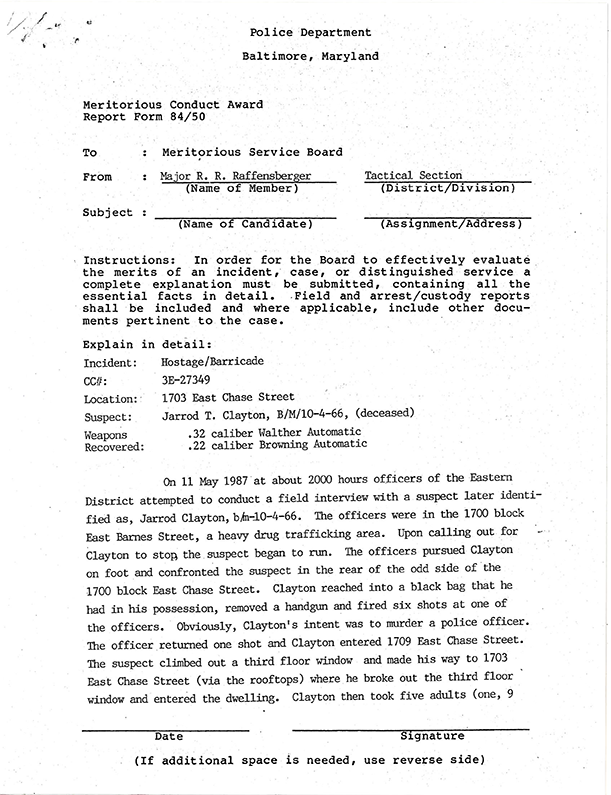
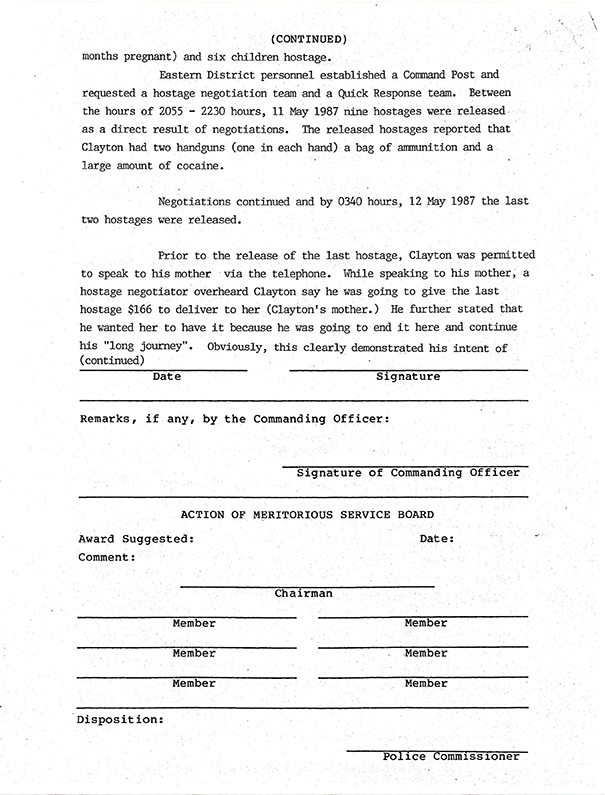

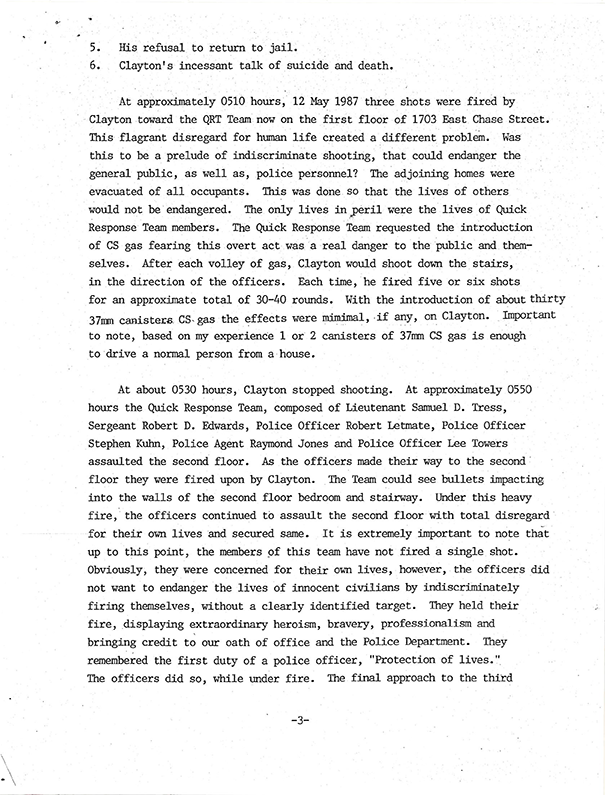
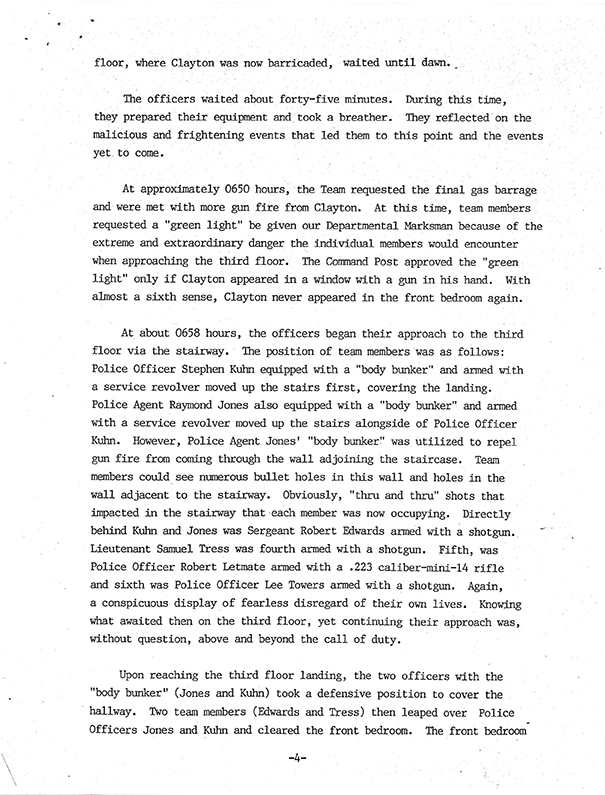
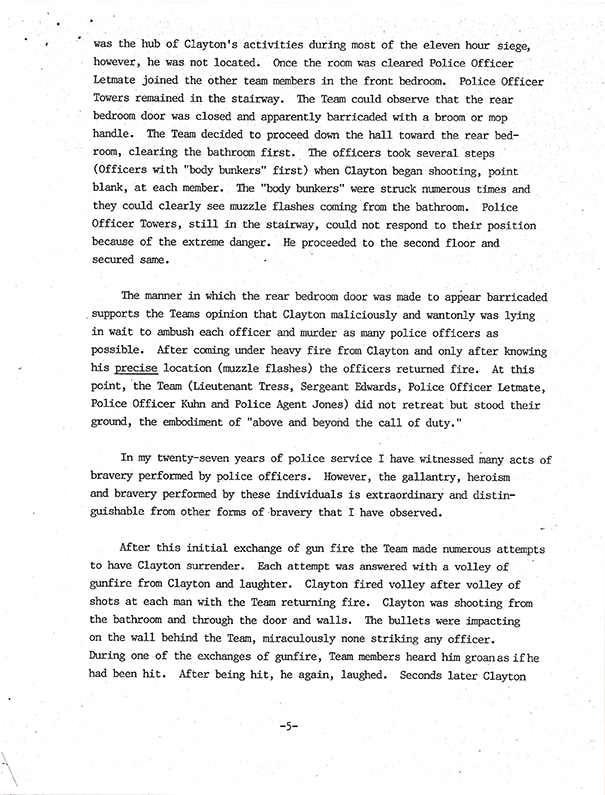
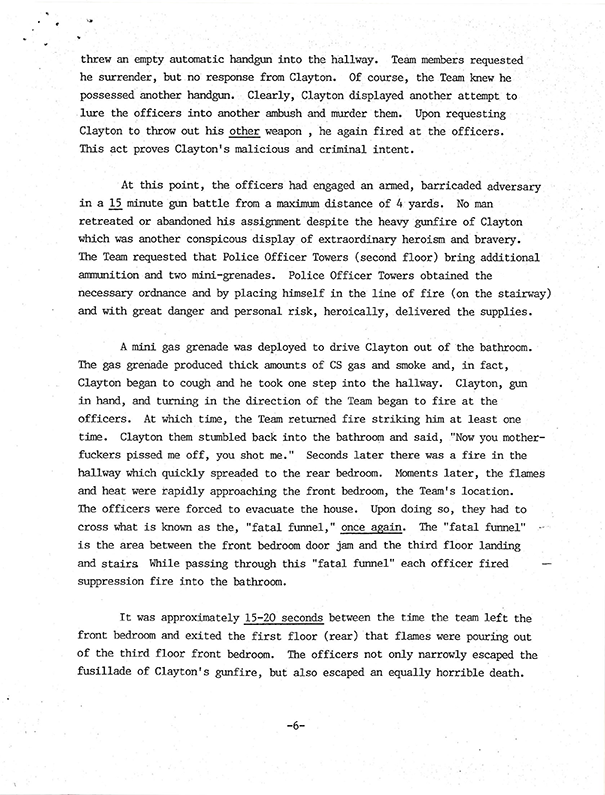

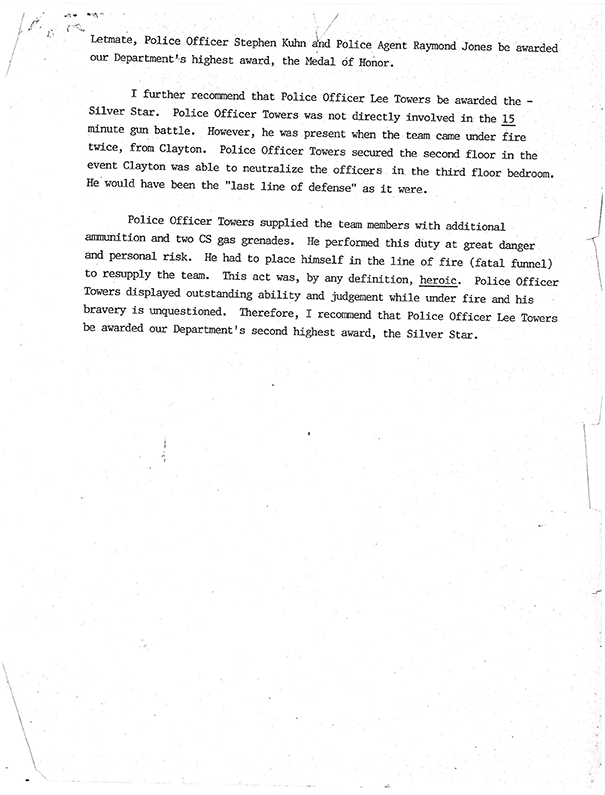
![]()
POLICE INFORMATION
Copies of: Your Baltimore Police Department Class Photo, Pictures of our Officers, Vehicles, Equipment, Newspaper Articles relating to our department and or officers, Old Departmental Newsletters, Lookouts, Wanted Posters, and or Brochures. Information on Deceased Officers and anything that may help Preserve the History and Proud Traditions of this agency. Please contact Retired Detective Kenny Driscoll.

NOTICE
How to Dispose of Old Police Items
Please contact Det. Ret. Kenny Driscoll if you have any pictures of you or your family members and wish them remembered here on this tribute site to Honor the fine men and women who have served with Honor and Distinction at the Baltimore Police Department.
Anyone with information, photographs, memorabilia, or other "Baltimore City Police" items can contact Ret. Det. Kenny Driscoll at
Copyright © 2002 Baltimore City Police History - Ret Det Kenny Driscoll


